Digital Signals
From Signal Identification Wiki
Click the name of a signal to see more detailed information, possible decoding, and additional sound and waterfall samples
| Inactive (No longer in use) |
Active (Currently in active use) |
Status Unknown or Intermittent |
| Signal Name | Description | Frequency | Mode | Modulation | Bandwidth | Location | Sample Audio | Waterfall image |
|---|---|---|---|---|---|---|---|---|
| 'Vario' Airplane Data Controller | This transmitter is found within the UHFUltra High Frequency (300-3000 MHz) FMRS bands, most likely used at airshows to give off barometric pressure, height in altitude represented by a voice, including various tones representing how high/how low the model plane is in the air. | 462.61 MHzMegaHertz (MHz) 10^6 Hz — 462.725 MHzMegaHertz (MHz) 10^6 Hz | NFMNarrowband Frequency Modulation | 6 kHzKiloHertz (kHz) 10^3 Hz | United States | 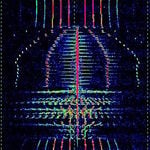 |
||
| 17067bps FSK | Unknown military-use signal reminiscent of SECURENET CVSD voice. | 30 MHzMegaHertz (MHz) 10^6 Hz — 88 MHzMegaHertz (MHz) 10^6 Hz | FMFrequency Modulation | FSKFrequency-Shift Keying | 25 kHzKiloHertz (kHz) 10^3 Hz | Worldwide |  |
|
| 1G Advanced Mobile Phone System (AMPS) | The first generation of cellular mobile telecommunications, which used analogue NFMNarrowband Frequency Modulation voice. | 824 MHzMegaHertz (MHz) 10^6 Hz — 894 MHzMegaHertz (MHz) 10^6 Hz | NFMNarrowband Frequency Modulation | FMFrequency Modulation, FSKFrequency-Shift Keying | 10 kHzKiloHertz (kHz) 10^3 Hz — 30 kHzKiloHertz (kHz) 10^3 Hz | Worldwide |  |
|
| 2G CDMA (IS-95) | CDMACode Division Multiple Access-One also known as IS-95, was the first ever cellular standard technology based on Code Division Multiple Access (CDMACode Division Multiple Access). It is a predecessor of the 1xRTT (CDMA2000/IS-2000) standard, which is backwards compatible. | 815 MHzMegaHertz (MHz) 10^6 Hz — 1,995 MHzMegaHertz (MHz) 10^6 Hz | RAW | DSSS/QPSKQuadrature Phase-Shift Keying (2 bits per symbol) | 1.228 MHzMegaHertz (MHz) 10^6 Hz | Worldwide | 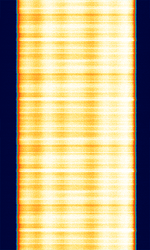 |
|
| 3G WCDMA | WCDMA, known primarily as 3G mobile, is a family of 3G data protocols used to send voice, text and signaling data to smart phones and other wireless devices. | 824 MHzMegaHertz (MHz) 10^6 Hz — 2,100 MHzMegaHertz (MHz) 10^6 Hz | RAW, AMAmplitude Modulation | QAMQuadrature Amplitude Modulation, QPSKQuadrature Phase-Shift Keying (2 bits per symbol), CDMACode Division Multiple Access | 4.2 MHzMegaHertz (MHz) 10^6 Hz | 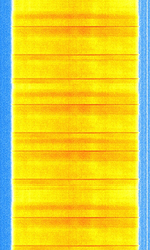 |
||
| 49MHz RC Car Controller | The sound of an RC controller signal from an old amphibious toy car | 49.2 MHzMegaHertz (MHz) 10^6 Hz | USBUpper Side Band Modulation (Radio, referring to reception and modulation mode)Universal Serial Bus (Computer, referring to USB Ports and cables) | 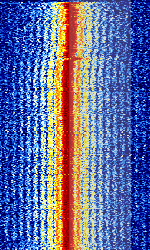 |
||||
| 4G LTE Network | Long Term Evolution Network. Also known as 4G LTE Data and Evolved Universal Terrestrial Radio Access (E-UTRA). Data service for wireless consumer devices. | 450 MHzMegaHertz (MHz) 10^6 Hz — 3,500 MHzMegaHertz (MHz) 10^6 Hz | RAW | OFDMOrthogonal Frequency-Division Multiplexing, PSKPhase-Shift Keying, QAMQuadrature Amplitude Modulation | 1.4 MHzMegaHertz (MHz) 10^6 Hz — 20 MHzMegaHertz (MHz) 10^6 Hz | Worldwide | 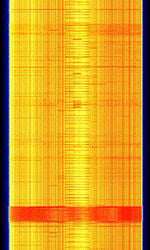 |
|
| 5G 'New Radio' Cellular Radio - Downlink | 5G cellular, also known by 3GPP '5G' NR (new radio), etc. is a newly released cellular standard that allows for backwards compatibility with 4G LTE, and will allow for several gigabits of connection speeds, (up to 10-100Gb) per second. This is the 600 MHzMegaHertz (MHz) 10^6 Hz downlink band for the new standard. | 600 MHzMegaHertz (MHz) 10^6 Hz — 50,000 MHzMegaHertz (MHz) 10^6 Hz | AMAmplitude Modulation | UFMC, GFDM, OFDMOrthogonal Frequency-Division Multiplexing, FBMC | 5 MHzMegaHertz (MHz) 10^6 Hz — 400 MHzMegaHertz (MHz) 10^6 Hz | Worldwide | 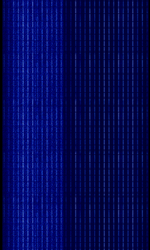 |
|
| 802.11ah | HaLow (802.11ah) is a wireless technology standard for exchanging data between devices over medium distances. Released by the Wi-Fi Alliance in 2016, it was initially developed as a competitive Internet of Things standard. | 750 MHzMegaHertz (MHz) 10^6 Hz — 928 MHzMegaHertz (MHz) 10^6 Hz | ODFM, BPSKBinary Phase-Shift Keying (1 bit per symbol), QPSKQuadrature Phase-Shift Keying (2 bits per symbol), QAMQuadrature Amplitude Modulation | 1 MHzMegaHertz (MHz) 10^6 Hz | Worldwide | — |  |
|
| 802.11ax | IEEE 802.11ax-2021, also known as Wi-Fi 6, is a WLAN standard improves upon previous Wi-Fi standards by utilizing 1024QAM modulation, larger channel bandwidths, and improved efficiency. | 2,412 MHzMegaHertz (MHz) 10^6 Hz — 7,125 MHzMegaHertz (MHz) 10^6 Hz | AMAmplitude Modulation | OFDMA, BPSKBinary Phase-Shift Keying (1 bit per symbol), QPSKQuadrature Phase-Shift Keying (2 bits per symbol), 16QAM, 64QAM, 256QAM, 1024QAM | 20 MHzMegaHertz (MHz) 10^6 Hz — 160 MHzMegaHertz (MHz) 10^6 Hz | Worldwide |  |
|
| 802.11n | IEEE 802.11n-2009, commonly shortened to 802.11n, is a wireless-networking standard that uses multiple antennas to increase data rates. The Wi-Fi Alliance has also retroactively labeled the technology for the standard as Wi-Fi 4. | 2,412 MHzMegaHertz (MHz) 10^6 Hz — 5,865 MHzMegaHertz (MHz) 10^6 Hz | DSBDual Side Band Modulation, RAW | BPSKBinary Phase-Shift Keying (1 bit per symbol), QPSKQuadrature Phase-Shift Keying (2 bits per symbol), 16QAM, 64QAM, 256QAM (Turbo QAMQuadrature Amplitude Modulation) | 20 MHzMegaHertz (MHz) 10^6 Hz — 40 MHzMegaHertz (MHz) 10^6 Hz | Worldwide | 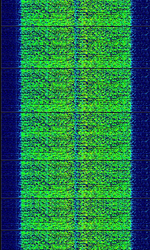 |
|
| 8PSK | 8PSK8-Phase Phase-Shift Keying (3 bits per symbol) modulation is a way to encode data using eight phase angles. Each symbol can encode three bits of data. It can achieve higher data rates than other phase modulation schemes, but it also requires a higher signal-to-noise ratio and is more prone to errors. | 3 MHzMegaHertz (MHz) 10^6 Hz — 3,000 MHzMegaHertz (MHz) 10^6 Hz | USBUpper Side Band Modulation (Radio, referring to reception and modulation mode)Universal Serial Bus (Computer, referring to USB Ports and cables),FMFrequency Modulation | 8PSK8-Phase Phase-Shift Keying (3 bits per symbol) | 125 HzHertz (Hz), unit of frequency, defined as one cycle per second (1 Hz). — 1.2 kHzKiloHertz (kHz) 10^3 Hz | Worldwide | 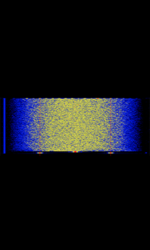 |
|
| AFSK Paging Link | A variant of POCSAG/FLEX with audio FSKFrequency-Shift Keying modulation based off of the bell 202 tones. Typically found as uplinks/downlinks to pager network transmitters. | 72 MHzMegaHertz (MHz) 10^6 Hz — 928 MHzMegaHertz (MHz) 10^6 Hz | NFMNarrowband Frequency Modulation | AFSKAudio Frequency-Shift Keying | 9 kHzKiloHertz (kHz) 10^3 Hz | Worldwide | 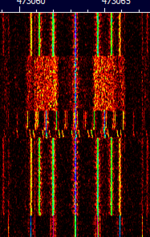 |
|
| AIST 2D | Aist 2D is a Russian microsatellite developed and designed by a group of Samara Aerospace University students, postgraduates, and scientists in cooperation with TsSKB-Progress. | 435.315 MHzMegaHertz (MHz) 10^6 Hz | NFMNarrowband Frequency Modulation | PM/PCM | 10 kHzKiloHertz (kHz) 10^3 Hz | Worldwide | 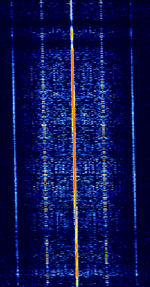 |
|
| AKKORD-SS-PD | Akkord-SS-PD (АККОРД-СС-ПД), also known as “Akkord-165” is a Russian datalink used during the invasion of Ukraine. Akkord is a rather old family of datalink protocols, Akkord-165 being the most recent version. | 7.051 MHzMegaHertz (MHz) 10^6 Hz | USBUpper Side Band Modulation (Radio, referring to reception and modulation mode)Universal Serial Bus (Computer, referring to USB Ports and cables) | MSKMinimum-Shift Keying (When Shift/Bd = 0.5. It is impossible to get this ratio to be lower than 0.5, hence it is called the 'Minimum' shift.) | 1.2 kHzKiloHertz (kHz) 10^3 Hz | Russia | 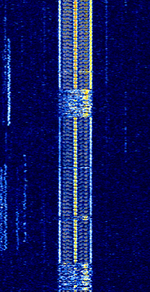 |
|
| ALE-400 | ALEAutomatic Link Establishment-400 is an amateur version of the 2G ALEAutomatic Link Establishment standard. It is adapted to the demands of amateur radio emergency traffic handling. | 1.806 MHzMegaHertz (MHz) 10^6 Hz — 144.163 MHzMegaHertz (MHz) 10^6 Hz | USBUpper Side Band Modulation (Radio, referring to reception and modulation mode)Universal Serial Bus (Computer, referring to USB Ports and cables) | MFSKMultiple Frequency Shift-Keying | 400 HzHertz (Hz), unit of frequency, defined as one cycle per second (1 Hz). | Worldwide | 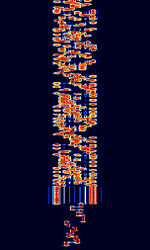 |
|
| AMSAT-P3D | AMSAT-P3D (Known as Phase 3D, OSCAR-40, and AO-40) is a amateur radio satellite built by AMSAT. As of 2004, the satellite's systems have failed. | 145.805 MHzMegaHertz (MHz) 10^6 Hz — 24,048.285 MHzMegaHertz (MHz) 10^6 Hz | USBUpper Side Band Modulation (Radio, referring to reception and modulation mode)Universal Serial Bus (Computer, referring to USB Ports and cables) | PSKPhase-Shift Keying | 1.6 kHzKiloHertz (kHz) 10^3 Hz | Worldwide | 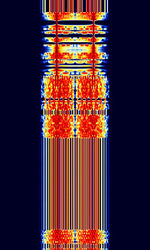 |
|
| ARGOS A-DCS | Some polar weather satellites from the METOP and POES series carry ARGOS A-DCS (Advanced Data Collection System), which is a system to collect data from sondes and other remote land or air-based instrumentation. | 465.99 MHzMegaHertz (MHz) 10^6 Hz | USBUpper Side Band Modulation (Radio, referring to reception and modulation mode)Universal Serial Bus (Computer, referring to USB Ports and cables) | PSKPhase-Shift Keying | 54 kHzKiloHertz (kHz) 10^3 Hz | Worldwide | 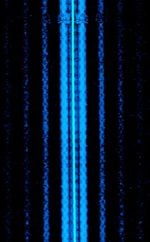 |
|
| ARQ-E(E3) | ARQAutomatic Repeat reQuestAutomatic Repeat Query-E, also known as ARQAutomatic Repeat reQuestAutomatic Repeat Query-1000 Duplex or ARQAutomatic Repeat reQuestAutomatic Repeat Query-1000D, is a synchronous full-duplex ARQAutomatic Repeat reQuestAutomatic Repeat Query system. ARQAutomatic Repeat reQuestAutomatic Repeat Query-E3 is a variant that uses a different alphabet encoding. Mainly used by French Military Forces. Stations commonly idled for hours on end. | 3 MHzMegaHertz (MHz) 10^6 Hz — 30 MHzMegaHertz (MHz) 10^6 Hz | USBUpper Side Band Modulation (Radio, referring to reception and modulation mode)Universal Serial Bus (Computer, referring to USB Ports and cables) | FSKFrequency-Shift Keying | 85 HzHertz (Hz), unit of frequency, defined as one cycle per second (1 Hz). — 850 HzHertz (Hz), unit of frequency, defined as one cycle per second (1 Hz). | Worldwide | 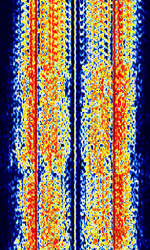 |
|
| ARQ-M2-242 | ARQAutomatic Repeat reQuestAutomatic Repeat Query-M2-242 (Also known as TDM 242, TDM-2, 96-TDM, and ARQAutomatic Repeat reQuestAutomatic Repeat Query-28) is a two-channel time division multiplexed telex system. This is the CCIRComité Consultatif International pour la Radio (Predecessor of the ITU-R) 242 standard version. Used in Aeronautical, Marine, and Point-to-Point services. | 3 MHzMegaHertz (MHz) 10^6 Hz — 30 MHzMegaHertz (MHz) 10^6 Hz | USBUpper Side Band Modulation (Radio, referring to reception and modulation mode)Universal Serial Bus (Computer, referring to USB Ports and cables) | FSKFrequency-Shift Keying | 600 HzHertz (Hz), unit of frequency, defined as one cycle per second (1 Hz). | Worldwide | 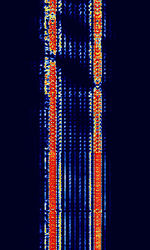 |
|
| ARQ-M2-342 | ARQAutomatic Repeat reQuestAutomatic Repeat Query-M2-342 (Also known as TDM 342, TDM-2, 96-TDM, and ARQAutomatic Repeat reQuestAutomatic Repeat Query-28) is a two-channel time division multiplexed telex system. This is the CCIRComité Consultatif International pour la Radio (Predecessor of the ITU-R) 342 standard version. Used in Aeronautical, Maritime, and Point-to-Point services. | 3 MHzMegaHertz (MHz) 10^6 Hz — 30 MHzMegaHertz (MHz) 10^6 Hz | USBUpper Side Band Modulation (Radio, referring to reception and modulation mode)Universal Serial Bus (Computer, referring to USB Ports and cables) | FSKFrequency-Shift Keying | 600 HzHertz (Hz), unit of frequency, defined as one cycle per second (1 Hz). | Worldwide | 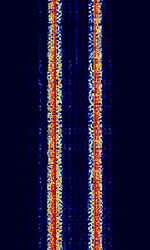 |
|
| ARQ-M4-242 | ARQAutomatic Repeat reQuestAutomatic Repeat Query-M4-242 (Also known as TDM 242, TDM-4, 192-TDM, and ARQAutomatic Repeat reQuestAutomatic Repeat Query-56) is a four-channel time division multiplexed telex system. This is the CCIRComité Consultatif International pour la Radio (Predecessor of the ITU-R) 242 standard version. Used in Aeronautical, Maritime, and Point-to-Point services. | 3 MHzMegaHertz (MHz) 10^6 Hz — 30 MHzMegaHertz (MHz) 10^6 Hz | USBUpper Side Band Modulation (Radio, referring to reception and modulation mode)Universal Serial Bus (Computer, referring to USB Ports and cables) | FSKFrequency-Shift Keying | 250 HzHertz (Hz), unit of frequency, defined as one cycle per second (1 Hz). | Worldwide | 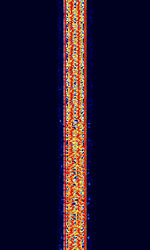 |
|
| ARQ-M4-342 | ARQAutomatic Repeat reQuestAutomatic Repeat Query-M4-342 (Also known as TDM 342, TDM-4, 192-TDM, and ARQAutomatic Repeat reQuestAutomatic Repeat Query-56) is a four-channel time division multiplexed telex system. This is the CCIRComité Consultatif International pour la Radio (Predecessor of the ITU-R) 342 standard version. Used in Aeronautical, Maritime, and Point-to-Point services. | 3 MHzMegaHertz (MHz) 10^6 Hz — 30 MHzMegaHertz (MHz) 10^6 Hz | USBUpper Side Band Modulation (Radio, referring to reception and modulation mode)Universal Serial Bus (Computer, referring to USB Ports and cables) | FSKFrequency-Shift Keying | 600 HzHertz (Hz), unit of frequency, defined as one cycle per second (1 Hz). | Worldwide | 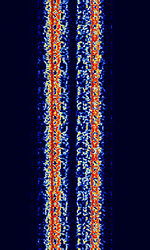 |
|
| ARQ-N | ARQAutomatic Repeat reQuestAutomatic Repeat Query-N is a synchronous dual channel ARQAutomatic Repeat reQuestAutomatic Repeat Query mode identical to ARQAutomatic Repeat reQuestAutomatic Repeat Query-E, with the only difference being that ARQAutomatic Repeat reQuestAutomatic Repeat Query-N has no symbol inversions. Formerly used by Italian Diplomatic services. | 3 MHzMegaHertz (MHz) 10^6 Hz — 30 MHzMegaHertz (MHz) 10^6 Hz | USBUpper Side Band Modulation (Radio, referring to reception and modulation mode)Universal Serial Bus (Computer, referring to USB Ports and cables) | FSKFrequency-Shift Keying | 85 HzHertz (Hz), unit of frequency, defined as one cycle per second (1 Hz). — 850 HzHertz (Hz), unit of frequency, defined as one cycle per second (1 Hz). | Worldwide | 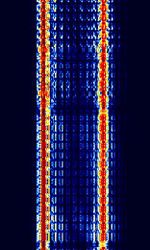 |
|
| ARQ6-90 | ARQ6-90, also known as ARQAutomatic Repeat reQuestAutomatic Repeat Query-6-90 and ARQAutomatic Repeat reQuestAutomatic Repeat Query-6/90, is a 6-character block simplex ARQAutomatic Repeat reQuestAutomatic Repeat Query system formerly used by French and Italian diplomatic services exchange of teletype-data. It is no longer used or seen today. | 10 MHzMegaHertz (MHz) 10^6 Hz — 23 MHzMegaHertz (MHz) 10^6 Hz | USBUpper Side Band Modulation (Radio, referring to reception and modulation mode)Universal Serial Bus (Computer, referring to USB Ports and cables) | FSKFrequency-Shift Keying | 700 HzHertz (Hz), unit of frequency, defined as one cycle per second (1 Hz). | Worldwide | 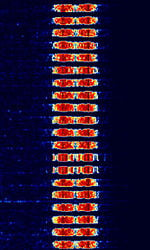 |
|
| ARQ6-98 | ARQ6-98, also known as ARQAutomatic Repeat reQuestAutomatic Repeat Query-6-98 and ARQAutomatic Repeat reQuestAutomatic Repeat Query-6/98, is a 6-character block simplex ARQAutomatic Repeat reQuestAutomatic Repeat Query system formerly used by French and Italian diplomatic services for the exchange of teletype-data. It is no longer used or seen today. | 10 MHzMegaHertz (MHz) 10^6 Hz — 23 MHzMegaHertz (MHz) 10^6 Hz | USBUpper Side Band Modulation (Radio, referring to reception and modulation mode)Universal Serial Bus (Computer, referring to USB Ports and cables) | FSKFrequency-Shift Keying | 400 HzHertz (Hz), unit of frequency, defined as one cycle per second (1 Hz). | Worldwide |  |
|
| ASCII | ASCII (also known as ITA5 or IRA) is an amateur radio telegraphy signal using the ITA-5 alphabet. | 3 MHzMegaHertz (MHz) 10^6 Hz — 450 MHzMegaHertz (MHz) 10^6 Hz | NFMNarrowband Frequency Modulation, USBUpper Side Band Modulation (Radio, referring to reception and modulation mode)Universal Serial Bus (Computer, referring to USB Ports and cables) | FSKFrequency-Shift Keying | 300 HzHertz (Hz), unit of frequency, defined as one cycle per second (1 Hz). | Worldwide | 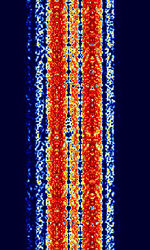 |
|
| ATSC 3.0 Broadcast | The Advanced Television Systems Committee (ATSC) 3.0 standard (marketed as NextGen TV) is a revised set of video broadcasting specifications that outlines improvements to spectrum efficiency. | RAW | OFDMOrthogonal Frequency-Division Multiplexing, QAMQuadrature Amplitude Modulation | 6 MHzMegaHertz (MHz) 10^6 Hz | United States, South Korea, Jamaica | — | 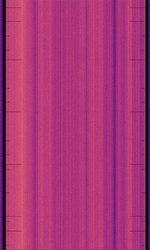 |
|
| ATSC Broadcast | Advanced Television Systems Committee Television. 8VSB Modulation | 54 MHzMegaHertz (MHz) 10^6 Hz — 700 MHzMegaHertz (MHz) 10^6 Hz | RAW | 8VSB | 6 MHzMegaHertz (MHz) 10^6 Hz | United States | — | 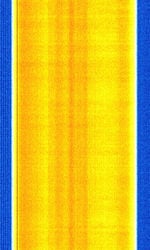 |
| AUTOSPEC | AUTOSPEC is a synchronous FECForward Error Correction teletype system used by British coastal stations to communicate with North Sea oil rigs. Also known as Autospec-bauer, Bauer, and Autospec Mk1. This signal is most likely phased out. | 3 MHzMegaHertz (MHz) 10^6 Hz — 30 MHzMegaHertz (MHz) 10^6 Hz | USBUpper Side Band Modulation (Radio, referring to reception and modulation mode)Universal Serial Bus (Computer, referring to USB Ports and cables) | FSKFrequency-Shift Keying | 350 HzHertz (Hz), unit of frequency, defined as one cycle per second (1 Hz). | Worldwide | 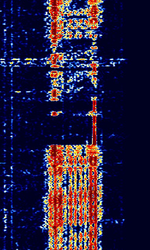 |
|
| Accurate positioning by Low Frequencies (ALF) | Accurate positioning by Low Frequencies, a former German DGPS navigation system. No longer in use as of 2013. | 123.7 kHzKiloHertz (kHz) 10^3 Hz | USBUpper Side Band Modulation (Radio, referring to reception and modulation mode)Universal Serial Bus (Computer, referring to USB Ports and cables) | PSKPhase-Shift Keying | 2.1 kHzKiloHertz (kHz) 10^3 Hz | Germany | 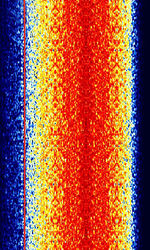 |
|
| Aircraft Communications Addressing and Reporting System (ACARS) | ACARS is a digital datalink system for the transmission of short messages between aircraft and ground stations via airband radio or satellite. | 129 MHzMegaHertz (MHz) 10^6 Hz — 137 MHzMegaHertz (MHz) 10^6 Hz | AMAmplitude Modulation | MSKMinimum-Shift Keying (When Shift/Bd = 0.5. It is impossible to get this ratio to be lower than 0.5, hence it is called the 'Minimum' shift.) | 5 kHzKiloHertz (kHz) 10^3 Hz | Worldwide | 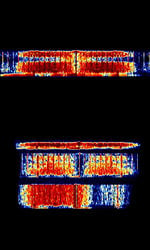 |
|
| Alps Electric Co. TWB1U840 Key Fob | Alps Electric Co. TWB1U840 Key Fob for Nissan Sentra, Nissan Versa, and Nissan Leaf model years 2013-2017+. | 314.975 MHzMegaHertz (MHz) 10^6 Hz | WFMWideband Frequency Modulation | FSKFrequency-Shift Keying | 100 kHzKiloHertz (kHz) 10^3 Hz | Worldwide | 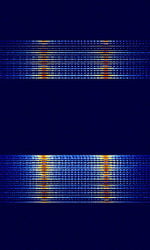 |
|
| Altai Radiotelephone | The initial generation of cellular mobile radiotelecommunications, similar to trunked radio. -- (Audio Sample is *loud*) -- | 300 MHzMegaHertz (MHz) 10^6 Hz — 342 MHzMegaHertz (MHz) 10^6 Hz | NFMNarrowband Frequency Modulation | FMFrequency Modulation, FSKFrequency-Shift Keying | 10 kHzKiloHertz (kHz) 10^3 Hz | Worldwide | 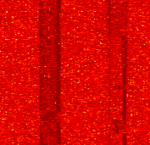 |
|
| Amplitude Modulation Signalling System (AMSS) | Amplitude Modulation Signalling System (AMSS) is a DRM-based radiotext and data technology for AMAmplitude Modulation broadcasting, like RDS that is used for FMFrequency Modulation. It transmits as a subcarrier, phase-modulating the carrier frequency. | 100 kHzKiloHertz (kHz) 10^3 Hz — 30 MHzMegaHertz (MHz) 10^6 Hz | SSBSingle-sideband modulation | AMAmplitude Modulation, PSKPhase-Shift Keying | 200 HzHertz (Hz), unit of frequency, defined as one cycle per second (1 Hz). | 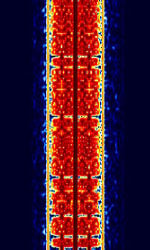 |
||
| Aprizesat | Data downlink from Aprizesat microsatellites. Aprizesat constellation consists of 12 Active satellites, These provide a worldwide M2M asset tracking service and relay AIS packets. | 400.5 MHzMegaHertz (MHz) 10^6 Hz — 400.65 MHzMegaHertz (MHz) 10^6 Hz | USBUpper Side Band Modulation (Radio, referring to reception and modulation mode)Universal Serial Bus (Computer, referring to USB Ports and cables) | GMSKGaussian Minimum-Shift Keying | 5 kHzKiloHertz (kHz) 10^3 Hz | Worldwide | 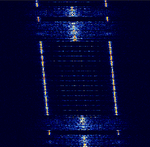 |
|
| Autocab | This is an example of the Autocab Media Data Terminals used by cab companies all over the world. | 163.375 MHzMegaHertz (MHz) 10^6 Hz | NFMNarrowband Frequency Modulation | PSKPhase-Shift Keying | 12.5 kHzKiloHertz (kHz) 10^3 Hz | United Kingdom | 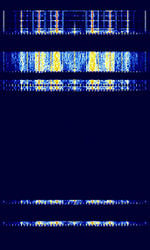 |
|
| Automated Train Control System (ATCS) | Automated Train Control System (ATCS), specifically ATCS Spec. 200, is a standardized communication system for railroads designed to ensure safety by monitoring locations of trains and locomotives, providing analysis and reporting, and automation of track warrants and similar orders. | 896.888 MHzMegaHertz (MHz) 10^6 Hz — 936.988 MHzMegaHertz (MHz) 10^6 Hz | NFMNarrowband Frequency Modulation | FSKFrequency-Shift Keying | 12.5 kHzKiloHertz (kHz) 10^3 Hz | United States | 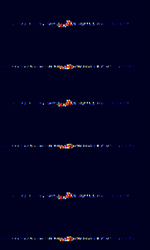 |
|
| Automatic Dependent Surveillance-Broadcast (ADS-B) | ADS-B is used by aircraft as an alternative to secondary radar. It broadcasts GPS position (latitude, longitude), pressure altitude, callsign, as well as track and ground speed. | 978 MHzMegaHertz (MHz) 10^6 Hz — 1,090 MHzMegaHertz (MHz) 10^6 Hz | RAW | PPMPulse Position Modulation | 2 MHzMegaHertz (MHz) 10^6 Hz | Worldwide | 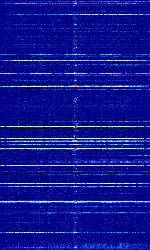 |
|
| Automatic Identification System (AIS) | Automatic Identification System (AIS) is used by ships to broadcast position and vessel information. | 161.975 MHzMegaHertz (MHz) 10^6 Hz — 162.025 MHzMegaHertz (MHz) 10^6 Hz | NFMNarrowband Frequency Modulation | GMSKGaussian Minimum-Shift Keying | 25 kHzKiloHertz (kHz) 10^3 Hz | Worldwide |  |
|
| Automatic Link Establishment (2G ALE) | Automatic Link Establishment, 2G ALEAutomatic Link Establishment (Official designation MIL-STD-188-141A and/or MIL-STD-188-141B (Appendix A)) is the current standardized method of establishing connections between radio operators. Also known as FED-STD 1045, FED-STD 1049, and STANAGNATO Standardization Agreement (STANAG), defines processes, procedures, terms, and conditions for common military or technical procedures or equipment between the member countries of the North Atlantic Treaty Organization (NATO). 5066. | 3.068 MHzMegaHertz (MHz) 10^6 Hz — 28.313 MHzMegaHertz (MHz) 10^6 Hz | USBUpper Side Band Modulation (Radio, referring to reception and modulation mode)Universal Serial Bus (Computer, referring to USB Ports and cables) | MFSKMultiple Frequency Shift-Keying | 2 kHzKiloHertz (kHz) 10^3 Hz | Worldwide | 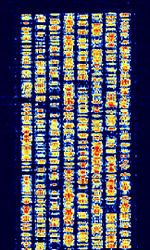 |
|
| Automatic Link Establishment (3G ALE ARCS) | 3G ALEAutomatic Link Establishment (ARCSAutomatic Radio Control System) is the next generation of ALEAutomatic Link Establishment (Designated by MIL-STD-188-141B (Appendix C)). Also known as STANAGNATO Standardization Agreement (STANAG), defines processes, procedures, terms, and conditions for common military or technical procedures or equipment between the member countries of the North Atlantic Treaty Organization (NATO). 4538, although MIL 188-141 does not provide Fast LSU. | 3 MHzMegaHertz (MHz) 10^6 Hz — 30 MHzMegaHertz (MHz) 10^6 Hz | USBUpper Side Band Modulation (Radio, referring to reception and modulation mode)Universal Serial Bus (Computer, referring to USB Ports and cables) | PSKPhase-Shift Keying | 3 kHzKiloHertz (kHz) 10^3 Hz | Worldwide | 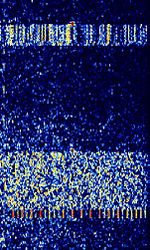 |
|
| Automatic Link Set-up (ALIS) | Automatic Link Set-up (ALIS) is an automatic link system used by Rohde & Schwarz modems. | 3 MHzMegaHertz (MHz) 10^6 Hz — 30 MHzMegaHertz (MHz) 10^6 Hz | USBUpper Side Band Modulation (Radio, referring to reception and modulation mode)Universal Serial Bus (Computer, referring to USB Ports and cables) | FSKFrequency-Shift Keying | 270 HzHertz (Hz), unit of frequency, defined as one cycle per second (1 Hz). | Worldwide | 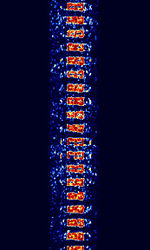 |
|
| Automatic Packet Reporting System (APRS) | Packet system for real time data communications. Used by hams for location reporting, weather stations etc. | 144.39 MHzMegaHertz (MHz) 10^6 Hz — 432.5 MHzMegaHertz (MHz) 10^6 Hz | NFMNarrowband Frequency Modulation | AFSKAudio Frequency-Shift Keying | 12.5 kHzKiloHertz (kHz) 10^3 Hz | Worldwide | 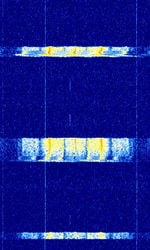 |
|
| Automatic Transmitter Identification System (ATIS) | ATIS systems are identification tags used by inland commercial waterway traffic on rivers in Europe. The FSKFrequency-Shift Keying burst is appended at the end of every voice transmission by the vessel operator. | 30 MHzMegaHertz (MHz) 10^6 Hz — 800 MHzMegaHertz (MHz) 10^6 Hz | NFMNarrowband Frequency Modulation | FSKFrequency-Shift Keying | 12 kHzKiloHertz (kHz) 10^3 Hz | Europe | 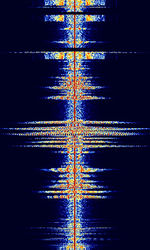 |
|
| Automatic Vehicle Monitoring (AVM) | Proprietary FFSKFast Frequency-Shift Keying data network used for public transport telemetry. It is primarily used to track and control vehicles, and facilitates PTTPush To TalkPress to TransmitMinistries of Postal, Telephone, and Telegraph Service (Soviet Agency)-ID for communication with tram drivers. | 507.225 MHzMegaHertz (MHz) 10^6 Hz — 517.875 MHzMegaHertz (MHz) 10^6 Hz | NFMNarrowband Frequency Modulation | FFSKFast Frequency-Shift Keying | 7.5 kHzKiloHertz (kHz) 10^3 Hz | Australia | 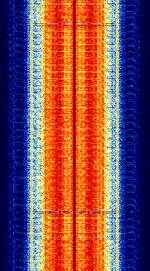 |
|
| BALDR Weather Sensor Telemetry | BalDR weather sensor SCADA telemetry, A signal standard that belongs to the BalDR brand of weather sensors, and might also belong to other brands of weather sensors that use their technologies. Uses a set of randomly-generated delimiters which vary the overall pitch of the signal by slight HzHertz (Hz), unit of frequency, defined as one cycle per second (1 Hz). rates and modulation properties, to send its data and keep the display updated. | 434.675 MHzMegaHertz (MHz) 10^6 Hz | FMFrequency Modulation | FMFrequency Modulation-P | 12.5 kHzKiloHertz (kHz) 10^3 Hz | Worldwide | 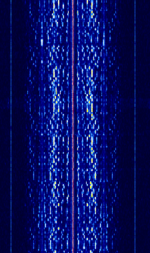 |
|
| BR-6028 | BR-6028 is a VFTVoice Frequency Telegraphy (Voice Frequency Telegraph) frequency and time diversity modem using 7 data channels. It is sometimes also known as BARRIE, USA-7, or 6028. | 5.75 MHzMegaHertz (MHz) 10^6 Hz — 15.937 MHzMegaHertz (MHz) 10^6 Hz | USBUpper Side Band Modulation (Radio, referring to reception and modulation mode)Universal Serial Bus (Computer, referring to USB Ports and cables) | FSKFrequency-Shift Keying | 3.1 kHzKiloHertz (kHz) 10^3 Hz | Worldwide | 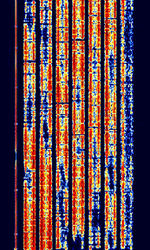 |
|
| Baofeng GMSK | Proprietary GMSKGaussian Minimum-Shift Keying mode used for voice by Fujian Baofeng walkie talkies | 400 MHzMegaHertz (MHz) 10^6 Hz — 480 MHzMegaHertz (MHz) 10^6 Hz | NFMNarrowband Frequency Modulation | GMSKGaussian Minimum-Shift Keying | 12.5 kHzKiloHertz (kHz) 10^3 Hz | Worldwide | 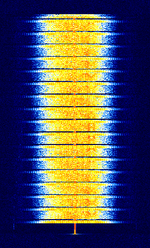 |
|
| Binary Interchange of Information and Signaling (BIIS) | BIIS (also known as BIIS 1200) is an ETSIEuropean Telecommunications Standards Institute. An independent, not-for-profit, standardization organization in the telecommunications industry in Europe, developing global telecommunications standards. protocol for a digital selective calling method with the added benefit of extended capability of transmitting data that exceeds what could be done with old 5-tone analog calling methods like CCIRComité Consultatif International pour la Radio (Predecessor of the ITU-R) and ZVEI. | 35 MHzMegaHertz (MHz) 10^6 Hz — 800 MHzMegaHertz (MHz) 10^6 Hz | NFMNarrowband Frequency Modulation | FFSKFast Frequency-Shift Keying | 6 kHzKiloHertz (kHz) 10^3 Hz | Europe | 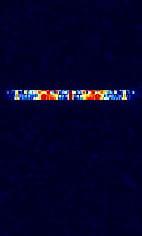 |
|
| BlueWalker-3 Wideband Telemetry | Wideband telemetry signal from BlueWalker-3 experimental satellite. | 2,245 MHzMegaHertz (MHz) 10^6 Hz | RAW | BPSKBinary Phase-Shift Keying (1 bit per symbol) | 1 MHzMegaHertz (MHz) 10^6 Hz | Worldwide | — | 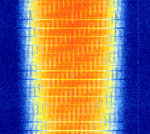 |
| Bluetooth | Bluetooth is a wireless technology standard for exchanging data over short distances from fixed and mobile devices and building personal area networks (PANs). Invented by telecom vendor Ericsson in 1994, it was initially conceived as a wireless alternative to RS-232 data cables. It can connect several devices, overcoming synchronization problems. | 2,400 MHzMegaHertz (MHz) 10^6 Hz — 2,485 MHzMegaHertz (MHz) 10^6 Hz | GFSKGaussian Frequency-Shift Keying, DPSKDifferential Phase-Shift Keying | 1 MHzMegaHertz (MHz) 10^6 Hz | Worldwide | 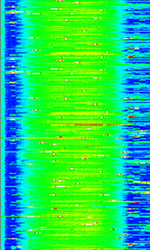 |
||
| Broadband Global Area Network (BGAN) | Proprietary satellite network owned and operated by Inmarsat that provides cellular 3G equivalent data and voice services to subscribers. | 1,525 MHzMegaHertz (MHz) 10^6 Hz — 1,559 MHzMegaHertz (MHz) 10^6 Hz | WFMWideband Frequency Modulation | QPSKQuadrature Phase-Shift Keying (2 bits per symbol) | 200 kHzKiloHertz (kHz) 10^3 Hz | Worldwide | 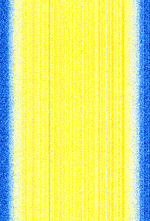 |
|
| CAS-4A/B Satellite Telemetry | CAS-4A/B Satellite 4.8 kbpsKilobits per second (kbps) GMSKGaussian Minimum-Shift Keying Telemetry Downlink. | 145.835 MHzMegaHertz (MHz) 10^6 Hz — 145.89 MHzMegaHertz (MHz) 10^6 Hz | NFMNarrowband Frequency Modulation | GMSKGaussian Minimum-Shift Keying | 10 kHzKiloHertz (kHz) 10^3 Hz | Worldwide | 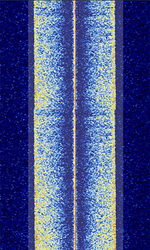 |
|
| CBET | CBET "Critical Band Encoded Tones" are tones added into radio broadcast's audio output for identification purposes. | 520 HzHertz (Hz), unit of frequency, defined as one cycle per second (1 Hz). — 108 MHzMegaHertz (MHz) 10^6 Hz | FMFrequency Modulation, AMAmplitude Modulation | 2 kHzKiloHertz (kHz) 10^3 Hz | 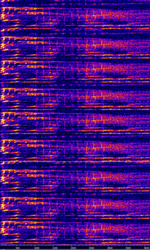 |
|||
| CCIR 493-4 Selcall | CCIRComité Consultatif International pour la Radio (Predecessor of the ITU-R) 493-4 Selcall, also known as HFHigh Frequency (3-30 MHz) Selcall, Australian Selcall, and Codan 8580 Selcall, is a Selcall standard developed in Australia for the HFHigh Frequency (3-30 MHz) band. Used by Amateur radio and Codan Modems. | 3 MHzMegaHertz (MHz) 10^6 Hz — 30 MHzMegaHertz (MHz) 10^6 Hz | USBUpper Side Band Modulation (Radio, referring to reception and modulation mode)Universal Serial Bus (Computer, referring to USB Ports and cables) | FSKFrequency-Shift Keying | 300 HzHertz (Hz), unit of frequency, defined as one cycle per second (1 Hz). | Worldwide | 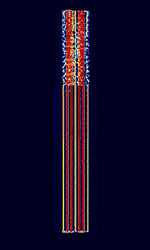 |
|
| CCITT | CCITT is a 5-tone selcall system for VHFVery High Frequency (30-300 MHz)/UHFUltra High Frequency (300-3000 MHz) radios. | 30 MHzMegaHertz (MHz) 10^6 Hz — 800 MHzMegaHertz (MHz) 10^6 Hz | NFMNarrowband Frequency Modulation | MFSKMultiple Frequency Shift-Keying | 5 kHzKiloHertz (kHz) 10^3 Hz | Worldwide | 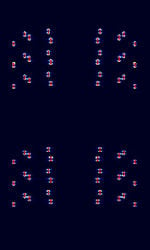 |
|
| CDMA2000 (3G physical layer) | CDMA2000, or IS-2000, is a cellular network standard utilizing the CDMACode Division Multiple Access technology for calls and data. | 450 MHzMegaHertz (MHz) 10^6 Hz — 1,900 MHzMegaHertz (MHz) 10^6 Hz | RAW | QPSKQuadrature Phase-Shift Keying (2 bits per symbol) | 1.23 MHzMegaHertz (MHz) 10^6 Hz | United States | 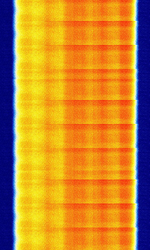 |
|
| CDMA420 | 410 MHzMegaHertz (MHz) 10^6 Hz — 425 MHzMegaHertz (MHz) 10^6 Hz | AMAmplitude Modulation | QPSKQuadrature Phase-Shift Keying (2 bits per symbol) | 2.5 MHzMegaHertz (MHz) 10^6 Hz | Poland | 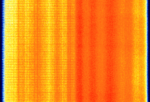 |
||
| CHIP | CHIP is a spread-spectrum PSKPhase-Shift Keying mode developed by Antonino Porcino IZ8BLY. CHIP-64 runs at 37.5 bpsBits per second (bps), whereas CHIP-128 runs at 21.09 bpsBits per second (bps). | 7.09 MHzMegaHertz (MHz) 10^6 Hz — 14.11 MHzMegaHertz (MHz) 10^6 Hz | USBUpper Side Band Modulation (Radio, referring to reception and modulation mode)Universal Serial Bus (Computer, referring to USB Ports and cables) | PSKPhase-Shift Keying | 580 HzHertz (Hz), unit of frequency, defined as one cycle per second (1 Hz). | Worldwide | 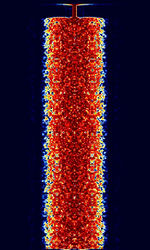 |
|
| CHU | CHU is a time signal radio station operated by the Institute for National Measurement Standards of the National Research Council of Canada. | 3.33 MHzMegaHertz (MHz) 10^6 Hz — 14.67 MHzMegaHertz (MHz) 10^6 Hz | USBUpper Side Band Modulation (Radio, referring to reception and modulation mode)Universal Serial Bus (Computer, referring to USB Ports and cables) | FSKFrequency-Shift Keying, OOKOn-Off Keying Modulation | 2.25 kHzKiloHertz (kHz) 10^3 Hz | Canada | 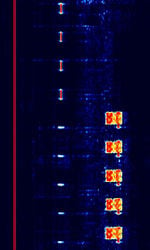 |
|
| CIS 3x100 VFT | Three CISCommonwealth of Independent States (CIS), the former Soviet Republic-14 signals overlaid on top of each other in a 3100 HzHertz (Hz), unit of frequency, defined as one cycle per second (1 Hz). VFTVoice Frequency Telegraphy bandwidth, operating at 100 bdBaud (unit symbol Bd) is the unit for symbol rate or modulation rate in symbols per second. | 3 MHzMegaHertz (MHz) 10^6 Hz — 30 MHzMegaHertz (MHz) 10^6 Hz | USBUpper Side Band Modulation (Radio, referring to reception and modulation mode)Universal Serial Bus (Computer, referring to USB Ports and cables) | FSKFrequency-Shift Keying | 3.1 kHzKiloHertz (kHz) 10^3 Hz | Russia | 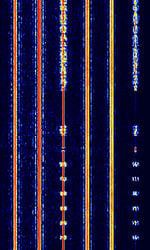 |
|
| CIS 3x144 VFT | Three 144 BdBaud (unit symbol Bd) is the unit for symbol rate or modulation rate in symbols per second. FSKFrequency-Shift Keying signals in a 3100 HzHertz (Hz), unit of frequency, defined as one cycle per second (1 Hz). VFTVoice Frequency Telegraphy bandwidth. Reportedly phased out. | 3 MHzMegaHertz (MHz) 10^6 Hz — 30 MHzMegaHertz (MHz) 10^6 Hz | USBUpper Side Band Modulation (Radio, referring to reception and modulation mode)Universal Serial Bus (Computer, referring to USB Ports and cables) | FSKFrequency-Shift Keying | 3.1 kHzKiloHertz (kHz) 10^3 Hz | Russia | 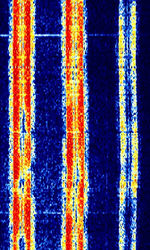 |
|
| CIS 3xBaudot-50 VFT | Three 50 bdBaud (unit symbol Bd) is the unit for symbol rate or modulation rate in symbols per second. Baudot signals in a 3100 HzHertz (Hz), unit of frequency, defined as one cycle per second (1 Hz). VFTVoice Frequency Telegraphy bandwidth. | 3 MHzMegaHertz (MHz) 10^6 Hz — 30 MHzMegaHertz (MHz) 10^6 Hz | USBUpper Side Band Modulation (Radio, referring to reception and modulation mode)Universal Serial Bus (Computer, referring to USB Ports and cables) | FSKFrequency-Shift Keying | 3.1 kHzKiloHertz (kHz) 10^3 Hz | Russia | 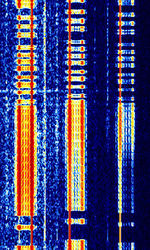 |
|
| CIS FTM-4 | CISCommonwealth of Independent States (CIS), the former Soviet Republic FTM-4 is the unofficial designation of a four-tone MFSKMultiple Frequency Shift-Keying data mode which is apparently used by Russian military. | 4 MHzMegaHertz (MHz) 10^6 Hz — 20 MHzMegaHertz (MHz) 10^6 Hz | USBUpper Side Band Modulation (Radio, referring to reception and modulation mode)Universal Serial Bus (Computer, referring to USB Ports and cables) | MFSKMultiple Frequency Shift-Keying | 13 kHzKiloHertz (kHz) 10^3 Hz | Russia | 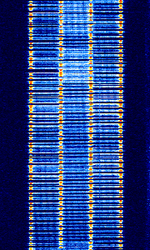 |
|
| CIS MFSK-16 XPA2 | Enigma Designation XPA2, also known as MFSKMultiple Frequency Shift-Keying-16, CISCommonwealth of Independent States (CIS), the former Soviet Republic MFSKMultiple Frequency Shift-Keying-14, and CISCommonwealth of Independent States (CIS), the former Soviet Republic MFSKMultiple Frequency Shift-Keying-16, is a 14-tone MFSKMultiple Frequency Shift-Keying signal said to have origin from Russian Intelligence and Foreign Ministry stations. | 3 MHzMegaHertz (MHz) 10^6 Hz — 30 MHzMegaHertz (MHz) 10^6 Hz | USBUpper Side Band Modulation (Radio, referring to reception and modulation mode)Universal Serial Bus (Computer, referring to USB Ports and cables) | MFSKMultiple Frequency Shift-Keying | 250 HzHertz (Hz), unit of frequency, defined as one cycle per second (1 Hz). | Russia | 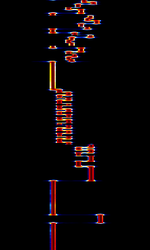 |
|
| CIS MFSK-16 XPB | Enigma designation XPB is a custom 16-tone MFSKMultiple Frequency Shift-Keying mode said to have origin from Russian Intelligence and Foreign Ministry stations. | 4.4 MHzMegaHertz (MHz) 10^6 Hz — 20 MHzMegaHertz (MHz) 10^6 Hz | USBUpper Side Band Modulation (Radio, referring to reception and modulation mode)Universal Serial Bus (Computer, referring to USB Ports and cables) | MFSKMultiple Frequency Shift-Keying | 2.8 kHzKiloHertz (kHz) 10^3 Hz | Russia | 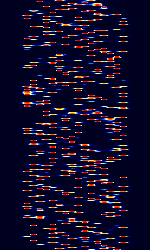 |
|
| CIS MFSK-20 XPA | Enigma Designation XPA, also known as MFSKMultiple Frequency Shift-Keying-20, CISCommonwealth of Independent States (CIS), the former Soviet Republic MFSKMultiple Frequency Shift-Keying-17, and CISCommonwealth of Independent States (CIS), the former Soviet Republic MFSKMultiple Frequency Shift-Keying-20, is a 17-tone MFSKMultiple Frequency Shift-Keying signal said to have origin from Russian Intelligence and Foreign Ministry stations. | 3 MHzMegaHertz (MHz) 10^6 Hz — 30 MHzMegaHertz (MHz) 10^6 Hz | USBUpper Side Band Modulation (Radio, referring to reception and modulation mode)Universal Serial Bus (Computer, referring to USB Ports and cables) | MFSKMultiple Frequency Shift-Keying | 800 HzHertz (Hz), unit of frequency, defined as one cycle per second (1 Hz). | Russia | 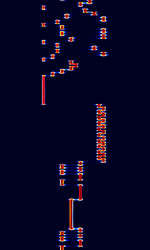 |
|
| CIS MFSK-21-13 | An MFSKMultiple Frequency Shift-Keying data mode that is believed to originate from Russian sources. Changes between MFSKMultiple Frequency Shift-Keying-21, MFSKMultiple Frequency Shift-Keying-13 and different speeds. | 4.834 MHzMegaHertz (MHz) 10^6 Hz — 16.292 MHzMegaHertz (MHz) 10^6 Hz | USBUpper Side Band Modulation (Radio, referring to reception and modulation mode)Universal Serial Bus (Computer, referring to USB Ports and cables) | MFSKMultiple Frequency Shift-Keying | 3.3 kHzKiloHertz (kHz) 10^3 Hz | Russia, Worldwide | 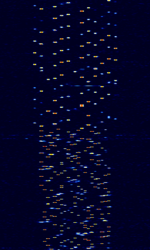 |
|
| CIS MFSK-68 | New Russian MFSKMultiple Frequency Shift-Keying Modem that uses 68 MFSKMultiple Frequency Shift-Keying (5 tones at a time) as well as a 9000 BdBaud (unit symbol Bd) is the unit for symbol rate or modulation rate in symbols per second. 8-PSK8-Phase Phase-Shift Keying (3 bits per symbol) insert every second which spans 10 kHzKiloHertz (kHz) 10^3 Hz wide. This signal is often found attributed with CISCommonwealth of Independent States (CIS), the former Soviet Republic-3000, where CISCommonwealth of Independent States (CIS), the former Soviet Republic-3000 acts as the ALEAutomatic Link Establishment for this signal as well as CISCommonwealth of Independent States (CIS), the former Soviet Republic-128. It is used by Russian diplomatic services and known with the unofficial name "Perelivt". | 7.659 MHzMegaHertz (MHz) 10^6 Hz — 18.28 MHzMegaHertz (MHz) 10^6 Hz | USBUpper Side Band Modulation (Radio, referring to reception and modulation mode)Universal Serial Bus (Computer, referring to USB Ports and cables) | MFSKMultiple Frequency Shift-Keying, PSKPhase-Shift Keying | 10 kHzKiloHertz (kHz) 10^3 Hz | Russia | 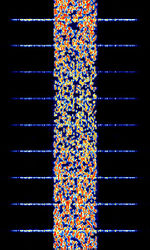 |
|
| CIS OFDM HDR Modem | Russian OFDMOrthogonal Frequency-Division Multiplexing HDR (High Data Rate) Modem. Has three main modes: CISCommonwealth of Independent States (CIS), the former Soviet Republic-45, CISCommonwealth of Independent States (CIS), the former Soviet Republic-60, and CISCommonwealth of Independent States (CIS), the former Soviet Republic-93, corresponding to the number of OFDMOrthogonal Frequency-Division Multiplexing tones in the signal. | 3 MHzMegaHertz (MHz) 10^6 Hz — 30 MHzMegaHertz (MHz) 10^6 Hz | USBUpper Side Band Modulation (Radio, referring to reception and modulation mode)Universal Serial Bus (Computer, referring to USB Ports and cables) | PSKPhase-Shift Keying, OFDMOrthogonal Frequency-Division Multiplexing | 2.8 kHzKiloHertz (kHz) 10^3 Hz — 3 kHzKiloHertz (kHz) 10^3 Hz | Russia | 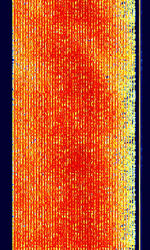 |
|
| CIS-11 | CISCommonwealth of Independent States (CIS), the former Soviet Republic-11 (Also known as TORG-11) is a radio duplex teleprinter system used by Russian meteorological stations | 3 MHzMegaHertz (MHz) 10^6 Hz — 30 MHzMegaHertz (MHz) 10^6 Hz | USBUpper Side Band Modulation (Radio, referring to reception and modulation mode)Universal Serial Bus (Computer, referring to USB Ports and cables) | FSKFrequency-Shift Keying | 650 HzHertz (Hz), unit of frequency, defined as one cycle per second (1 Hz). | Russia | 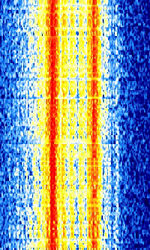 |
|
| CIS-112 | CISCommonwealth of Independent States (CIS), the former Soviet Republic-112 OFDMOrthogonal Frequency-Division Multiplexing signal. Has a preamble of 7 Tones (not including carrier), then 56 tones before entering into the 112 tone data transmission. | 3 MHzMegaHertz (MHz) 10^6 Hz — 30 MHzMegaHertz (MHz) 10^6 Hz | USBUpper Side Band Modulation (Radio, referring to reception and modulation mode)Universal Serial Bus (Computer, referring to USB Ports and cables) | PSKPhase-Shift Keying, OFDMOrthogonal Frequency-Division Multiplexing | 3 kHzKiloHertz (kHz) 10^3 Hz | Russia | 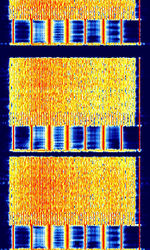 |
|
| CIS-12 | CISCommonwealth of Independent States (CIS), the former Soviet Republic-12 (Also known as MS5, FIRE, AT-3004D, AT-3104D, T-230) is a 12-tone PSKPhase-Shift Keying Russian military multi-channel modem. | 300 kHzKiloHertz (kHz) 10^3 Hz — 30 MHzMegaHertz (MHz) 10^6 Hz | USBUpper Side Band Modulation (Radio, referring to reception and modulation mode)Universal Serial Bus (Computer, referring to USB Ports and cables) | PSKPhase-Shift Keying | 3.1 kHzKiloHertz (kHz) 10^3 Hz | Russia | 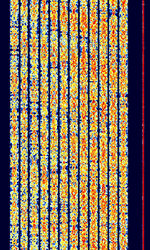 |
|
| CIS-1200 (T-230-1A 'Mahovik') | CISCommonwealth of Independent States (CIS), the former Soviet Republic-1200, Mahovik, "Flywheel" in Russian, is a PSKPhase-Shift Keying based mode that can transmit both voice and data. It is transmitted from a Russian T-230-1A. | 3 MHzMegaHertz (MHz) 10^6 Hz — 30 MHzMegaHertz (MHz) 10^6 Hz | USBUpper Side Band Modulation (Radio, referring to reception and modulation mode)Universal Serial Bus (Computer, referring to USB Ports and cables) | SDPSK, BPSKBinary Phase-Shift Keying (1 bit per symbol) | 2.5 kHzKiloHertz (kHz) 10^3 Hz | Russia | 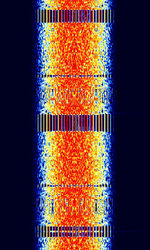 |
|
| CIS-128 | CISCommonwealth of Independent States (CIS), the former Soviet Republic-128 is an OFDMOrthogonal Frequency-Division Multiplexing mode that uses 128 channels, with one “off” channel in the center, so the signal is divided into two 64 channel parts. | 3 MHzMegaHertz (MHz) 10^6 Hz — 30 MHzMegaHertz (MHz) 10^6 Hz | USBUpper Side Band Modulation (Radio, referring to reception and modulation mode)Universal Serial Bus (Computer, referring to USB Ports and cables) | PSKPhase-Shift Keying, OFDMOrthogonal Frequency-Division Multiplexing, QAMQuadrature Amplitude Modulation | 3.1 kHzKiloHertz (kHz) 10^3 Hz — 6.1 kHzKiloHertz (kHz) 10^3 Hz | Russia | 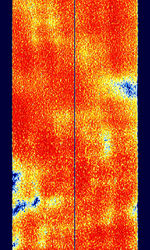 |
|
| CIS-1280 | CISCommonwealth of Independent States (CIS), the former Soviet Republic-1280 is a OQPSK (Offset Quadrature Phase Shift-Keying) modulation data modem signal. Also known as Soviet Mil(MOD)/FAPSIFederal Agency of Government Communications and Information (Russian Agency)/PTTPush To TalkPress to TransmitMinistries of Postal, Telephone, and Telegraph Service (Soviet Agency) system. These stations are recognizable in that they are all placed on .081 offsets from a kilohertz or half kilohertz point. | 3 MHzMegaHertz (MHz) 10^6 Hz — 13.369 MHzMegaHertz (MHz) 10^6 Hz | USBUpper Side Band Modulation (Radio, referring to reception and modulation mode)Universal Serial Bus (Computer, referring to USB Ports and cables) | PSKPhase-Shift Keying | 1.28 kHzKiloHertz (kHz) 10^3 Hz | Russia | 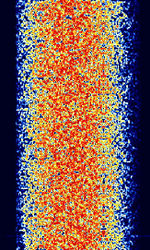 |
|
| CIS-14 | Also known as AMOR and AMOR96. Synchronous FSKFrequency-Shift Keying duplex teleprinter system with ARQAutomatic Repeat reQuestAutomatic Repeat Query. | 3 MHzMegaHertz (MHz) 10^6 Hz — 30 MHzMegaHertz (MHz) 10^6 Hz | USBUpper Side Band Modulation (Radio, referring to reception and modulation mode)Universal Serial Bus (Computer, referring to USB Ports and cables) | FSKFrequency-Shift Keying | 650 HzHertz (Hz), unit of frequency, defined as one cycle per second (1 Hz). | Russia | 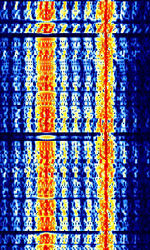 |
|
| CIS-16 | CISCommonwealth of Independent States (CIS), the former Soviet Republic-16 is a BPSKBinary Phase-Shift Keying (1 bit per symbol) 16-tone mode, possibly transmitted from a modified AT-3004D or AT-3104 type Russian military transceiver. Also known as CISCommonwealth of Independent States (CIS), the former Soviet Republic 16x75 BdBaud (unit symbol Bd) is the unit for symbol rate or modulation rate in symbols per second. for the 75 bdBaud (unit symbol Bd) is the unit for symbol rate or modulation rate in symbols per second. speed in each of the 16 sub channels. | 3 MHzMegaHertz (MHz) 10^6 Hz — 30 MHzMegaHertz (MHz) 10^6 Hz | USBUpper Side Band Modulation (Radio, referring to reception and modulation mode)Universal Serial Bus (Computer, referring to USB Ports and cables) | PSKPhase-Shift Keying | 2.7 kHzKiloHertz (kHz) 10^3 Hz | Russia | 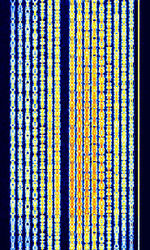 |
|
| CIS-20 | Russian AT-3104 Modem signal, 20-tone OFDMOrthogonal Frequency-Division Multiplexing DQPSKDifferential Quadrature Phase-Shift Keying signal. Has characteristic pilot tone located 3300 HzHertz (Hz), unit of frequency, defined as one cycle per second (1 Hz). from suppressed carrier. All 20 channels operate at 75 BdBaud (unit symbol Bd) is the unit for symbol rate or modulation rate in symbols per second.. | 3 MHzMegaHertz (MHz) 10^6 Hz — 30 MHzMegaHertz (MHz) 10^6 Hz | USBUpper Side Band Modulation (Radio, referring to reception and modulation mode)Universal Serial Bus (Computer, referring to USB Ports and cables) | PSKPhase-Shift Keying, OFDMOrthogonal Frequency-Division Multiplexing | 2.75 kHzKiloHertz (kHz) 10^3 Hz | Russia | 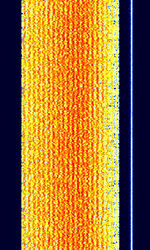 |
|
| CIS-300 | Known as CISCommonwealth of Independent States (CIS), the former Soviet Republic-300 Burst, FSKFrequency-Shift Keying mode used with 300 BdBaud (unit symbol Bd) is the unit for symbol rate or modulation rate in symbols per second. rate with a starting and ending tone on the upper part of the signal. | 3 MHzMegaHertz (MHz) 10^6 Hz — 30 MHzMegaHertz (MHz) 10^6 Hz | USBUpper Side Band Modulation (Radio, referring to reception and modulation mode)Universal Serial Bus (Computer, referring to USB Ports and cables) | FSKFrequency-Shift Keying | 370 HzHertz (Hz), unit of frequency, defined as one cycle per second (1 Hz). | Russia | 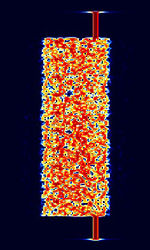 |
|
| CIS-3000 | CISCommonwealth of Independent States (CIS), the former Soviet Republic-3000 is an 8-PSK8-Phase Phase-Shift Keying (3 bits per symbol) Data Modem protocol. Its source is traced to Russia. 3000 is for its 3000 BaudBaud (unit symbol Bd) is the unit for symbol rate or modulation rate in symbols per second. speed (maximum speed is technically 9000 bpsBits per second (bps)). | 3 MHzMegaHertz (MHz) 10^6 Hz — 30 MHzMegaHertz (MHz) 10^6 Hz | USBUpper Side Band Modulation (Radio, referring to reception and modulation mode)Universal Serial Bus (Computer, referring to USB Ports and cables) | PSKPhase-Shift Keying | 3.4 kHzKiloHertz (kHz) 10^3 Hz | Russia | 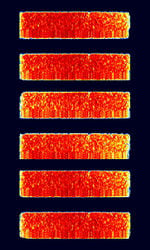 |
|
| CIS-36-50 | CISCommonwealth of Independent States (CIS), the former Soviet Republic-36-50, also known as BEE-36, is an FSKFrequency-Shift Keying modem used by the Russian Navy. | 3 MHzMegaHertz (MHz) 10^6 Hz — 30 MHzMegaHertz (MHz) 10^6 Hz | USBUpper Side Band Modulation (Radio, referring to reception and modulation mode)Universal Serial Bus (Computer, referring to USB Ports and cables) | FSKFrequency-Shift Keying | 300 HzHertz (Hz), unit of frequency, defined as one cycle per second (1 Hz). — 550 HzHertz (Hz), unit of frequency, defined as one cycle per second (1 Hz). | Russia | 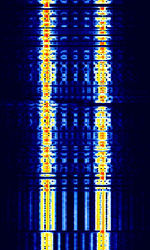 |
|
| CIS-40.5 | CISCommonwealth of Independent States (CIS), the former Soviet Republic-40.5 (Also known as T-206) is an FSKFrequency-Shift Keying signal used in Russian Military Communications Equipment. Used as a telegraph channel, encrypted. | 3 MHzMegaHertz (MHz) 10^6 Hz — 30 MHzMegaHertz (MHz) 10^6 Hz | USBUpper Side Band Modulation (Radio, referring to reception and modulation mode)Universal Serial Bus (Computer, referring to USB Ports and cables) | FSKFrequency-Shift Keying | 600 HzHertz (Hz), unit of frequency, defined as one cycle per second (1 Hz). | Russia | 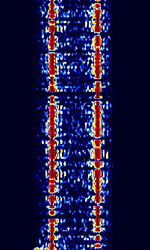 |
|
| CIS-48 | CISCommonwealth of Independent States (CIS), the former Soviet Republic-48 is an interesting data mode with a unique format. It uses a 4 DBPSK Preamble with a constant tone and changing OFDMOrthogonal Frequency-Division Multiplexing modes as it transmits data. Origin is suspected to be in Russia. | 5.017 MHzMegaHertz (MHz) 10^6 Hz — 17.289 MHzMegaHertz (MHz) 10^6 Hz | USBUpper Side Band Modulation (Radio, referring to reception and modulation mode)Universal Serial Bus (Computer, referring to USB Ports and cables) | PSKPhase-Shift Keying | 2 MHzMegaHertz (MHz) 10^6 Hz — 3 MHzMegaHertz (MHz) 10^6 Hz | Russia | 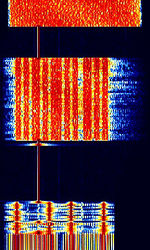 |
|
| CIS-50-50 | CISCommonwealth of Independent States (CIS), the former Soviet Republic-50-50 is very similar to CISCommonwealth of Independent States (CIS), the former Soviet Republic-36-50. The main difference is in the available baudBaud (unit symbol Bd) is the unit for symbol rate or modulation rate in symbols per second. rates and frequency shifts used. | 3 MHzMegaHertz (MHz) 10^6 Hz — 30 MHzMegaHertz (MHz) 10^6 Hz | USBUpper Side Band Modulation (Radio, referring to reception and modulation mode)Universal Serial Bus (Computer, referring to USB Ports and cables) | FSKFrequency-Shift Keying | 150 HzHertz (Hz), unit of frequency, defined as one cycle per second (1 Hz). — 630 HzHertz (Hz), unit of frequency, defined as one cycle per second (1 Hz). | Russia | 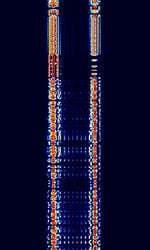 |
|
| CIS-8181 | CISCommonwealth of Independent States (CIS), the former Soviet Republic-8181 is an FSKFrequency-Shift Keying modem used by the Russian navy. | 3 MHzMegaHertz (MHz) 10^6 Hz — 30 MHzMegaHertz (MHz) 10^6 Hz | USBUpper Side Band Modulation (Radio, referring to reception and modulation mode)Universal Serial Bus (Computer, referring to USB Ports and cables) | FSKFrequency-Shift Keying | 600 HzHertz (Hz), unit of frequency, defined as one cycle per second (1 Hz). | Russia | 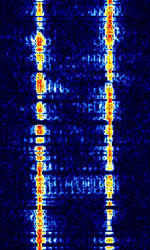 |
|
| CLOUDSAT Downlink | Dump to European ground station from the CLOUDSAT cloud profiling satellite. CLOUDSAT has a CPR (Cloud Profiling Radar) that operates at 94 GHzGigaHertz (GHz) 10^9 Hz to create a vertical sounding (cross-section) of the atmosphere. | 2,217.5 MHzMegaHertz (MHz) 10^6 Hz | RAW | BPSKBinary Phase-Shift Keying (1 bit per symbol) | 2 MHzMegaHertz (MHz) 10^6 Hz | Europe | — |  |
| CLOVER 2000 | CLOVER 2000 is an upgrade to CLOVER-II, a digital data protocol developed by Ray Petit and HAL Communications. Sometimes referred to as XCLOVER or 8 Tone CLOVER. | 3 MHzMegaHertz (MHz) 10^6 Hz — 30 MHzMegaHertz (MHz) 10^6 Hz | USBUpper Side Band Modulation (Radio, referring to reception and modulation mode)Universal Serial Bus (Computer, referring to USB Ports and cables) | PSKPhase-Shift Keying, QAMQuadrature Amplitude Modulation | 2 kHzKiloHertz (kHz) 10^3 Hz | Worldwide | 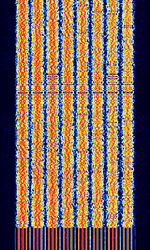 |
|
| CLOVER 2500 | CLOVER 2500 is a new upgrade to CLOVER-2000, adding 25% more speed to the CLOVER system. | 3 MHzMegaHertz (MHz) 10^6 Hz — 30 MHzMegaHertz (MHz) 10^6 Hz | USBUpper Side Band Modulation (Radio, referring to reception and modulation mode)Universal Serial Bus (Computer, referring to USB Ports and cables) | PSKPhase-Shift Keying, QAMQuadrature Amplitude Modulation | 2.5 kHzKiloHertz (kHz) 10^3 Hz | Worldwide | 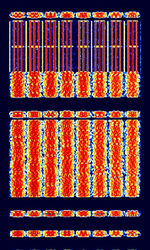 |
|
| CLOVER-I | CLOVER-I was the first iteration of the Clover series of digital modes. Was never released for commercial use, replaced by CLOVER-II. Also known as Cloverleaf. | 3 MHzMegaHertz (MHz) 10^6 Hz — 30 MHzMegaHertz (MHz) 10^6 Hz | USBUpper Side Band Modulation (Radio, referring to reception and modulation mode)Universal Serial Bus (Computer, referring to USB Ports and cables) | PSKPhase-Shift Keying, QAMQuadrature Amplitude Modulation | 100 HzHertz (Hz), unit of frequency, defined as one cycle per second (1 Hz). | Worldwide | 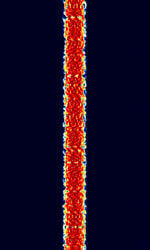 |
|
| CLOVER-II | CLOVER-II is the advancement of CLOVER-I, with 4 tone pulses and a max data rate of 750 bpsBits per second (bps). Also known as Q-CLOVER and QUAD-CLOVER. | 3 MHzMegaHertz (MHz) 10^6 Hz — 30 MHzMegaHertz (MHz) 10^6 Hz | USBUpper Side Band Modulation (Radio, referring to reception and modulation mode)Universal Serial Bus (Computer, referring to USB Ports and cables) | PSKPhase-Shift Keying, QAMQuadrature Amplitude Modulation | 500 HzHertz (Hz), unit of frequency, defined as one cycle per second (1 Hz). | Worldwide | 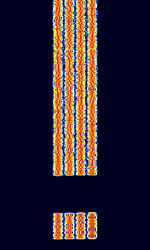 |
|
| COFDMTV | COFDMTV is an easy-to-use picture transmission mode based on Coded Orthogonal Frequency-Division Multiplexing (COFDMCoded Orthogonal Frequency-Division Multiplexing). | SSBSingle-sideband modulation,FMFrequency Modulation,AMAmplitude Modulation | COFDMCoded Orthogonal Frequency-Division Multiplexing, 8-PSK8-Phase Phase-Shift Keying (3 bits per symbol), QPSKQuadrature Phase-Shift Keying (2 bits per symbol) | 1.6 kHzKiloHertz (kHz) 10^3 Hz — 3.2 kHzKiloHertz (kHz) 10^3 Hz |  |
|||
| CORIOLIS Tactical Direct Broadcast | Direct Broadcast digital signal from the CORIOLIS satellite, primarily carries data from the WindSat instrument. | 2,221.5 MHzMegaHertz (MHz) 10^6 Hz | RAW | BPSKBinary Phase-Shift Keying (1 bit per symbol) | 2 MHzMegaHertz (MHz) 10^6 Hz | Worldwide | — |  |
| CRY2001 Voice Scrambler | CRY2001 is a voice scrambling mode used on Sailor CRY2001 Scramblers. Fisherman often use these modes to communicate with privacy. | 3 MHzMegaHertz (MHz) 10^6 Hz — 300 MHzMegaHertz (MHz) 10^6 Hz | USBUpper Side Band Modulation (Radio, referring to reception and modulation mode)Universal Serial Bus (Computer, referring to USB Ports and cables) | FSKFrequency-Shift Keying | 3 kHzKiloHertz (kHz) 10^3 Hz | Worldwide | 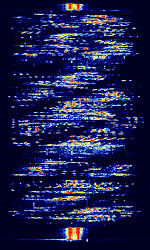 |
|
| CV-786 | CV-786 is a wideband FSKFrequency-Shift Keying mode built in Rockwell-Collins MDM-2001 modems. Also known as TRC-75, as it was used in TRC-75 transceivers. A military-based Radio TeleTYpe mode. | 3 MHzMegaHertz (MHz) 10^6 Hz — 30 MHzMegaHertz (MHz) 10^6 Hz | USBUpper Side Band Modulation (Radio, referring to reception and modulation mode)Universal Serial Bus (Computer, referring to USB Ports and cables) | FSKFrequency-Shift Keying | 900 HzHertz (Hz), unit of frequency, defined as one cycle per second (1 Hz). | Worldwide | 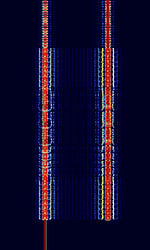 |
|
| China digital radio (CDR) | Convergent Digital Radio (CDR) or China Digital Radio is an in-band-on-channel (IBOCIn-Band On-Channel (IBOC) is a hybrid method of transmitting digital radio and analog radio broadcast signals simultaneously on the same frequency.) digital radio broadcasting format used in China. It can be found in multiple bandwidth configurations with different modulation formats. | 106.1 MHzMegaHertz (MHz) 10^6 Hz | USBUpper Side Band Modulation (Radio, referring to reception and modulation mode)Universal Serial Bus (Computer, referring to USB Ports and cables) | OFDMOrthogonal Frequency-Division Multiplexing | 100 kHzKiloHertz (kHz) 10^3 Hz — 500 kHzKiloHertz (kHz) 10^3 Hz | China | 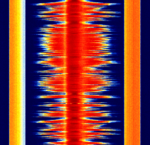 |
|
| Chinese 30-tone OFDM modem | A 30-tone OFDMOrthogonal Frequency-Division Multiplexing data mode, probably used by Chinese military or other agencies. | 3.618 MHzMegaHertz (MHz) 10^6 Hz — 18.656 MHzMegaHertz (MHz) 10^6 Hz | LSBLower Side Band Modulation, USBUpper Side Band Modulation (Radio, referring to reception and modulation mode)Universal Serial Bus (Computer, referring to USB Ports and cables) | QPSKQuadrature Phase-Shift Keying (2 bits per symbol), BPSKBinary Phase-Shift Keying (1 bit per symbol), OFDMOrthogonal Frequency-Division Multiplexing | 3 kHzKiloHertz (kHz) 10^3 Hz | China, Worldwide | 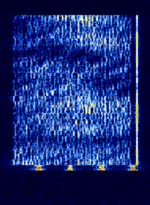 |
|
| Chinese 4+4 | Chinese 4+4, also known as 4+4 or PRC 4+4, is a multi-carrier transmission mode. It used by Chinese Diplomatic services with most traffic originating from Beijing, China. | 3 MHzMegaHertz (MHz) 10^6 Hz — 30 MHzMegaHertz (MHz) 10^6 Hz | USBUpper Side Band Modulation (Radio, referring to reception and modulation mode)Universal Serial Bus (Computer, referring to USB Ports and cables) | PSKPhase-Shift Keying | 2.5 kHzKiloHertz (kHz) 10^3 Hz | China | 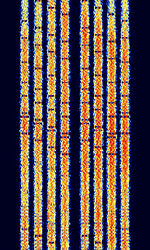 |
|
| Chinese-64 MFSK | Chinese Modem MFSKMultiple Frequency Shift-Keying-64 | 3.673 MHzMegaHertz (MHz) 10^6 Hz — 16.989 MHzMegaHertz (MHz) 10^6 Hz | USBUpper Side Band Modulation (Radio, referring to reception and modulation mode)Universal Serial Bus (Computer, referring to USB Ports and cables),LSBLower Side Band Modulation (rare) | MFSKMultiple Frequency Shift-Keying | 2.5 kHzKiloHertz (kHz) 10^3 Hz | China |  |
|
| Codan Data Modem | Codan Data Modulation for Codan Data Modems. Has 3 distinct signals: Data, ALEAutomatic Link Establishment, and SELCAL. This modulation is used in Codan's 9001, 9002, 3012 and 3212 modems. | 3 MHzMegaHertz (MHz) 10^6 Hz — 30 MHzMegaHertz (MHz) 10^6 Hz | USBUpper Side Band Modulation (Radio, referring to reception and modulation mode)Universal Serial Bus (Computer, referring to USB Ports and cables) | PSKPhase-Shift Keying, FSKFrequency-Shift Keying | 400 HzHertz (Hz), unit of frequency, defined as one cycle per second (1 Hz). — 2.56 kHzKiloHertz (kHz) 10^3 Hz | Worldwide | 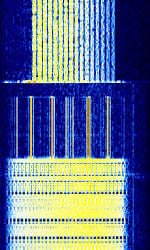 |
|
| Coherent BPSK | Coherent BPSKBinary Phase-Shift Keying (1 bit per symbol), also known as C-BPSKBinary Phase-Shift Keying (1 bit per symbol), was an experimental amateur mode developed by Bill DeCarle VE2IQ. | 138 kHzKiloHertz (kHz) 10^3 Hz — 18.081 MHzMegaHertz (MHz) 10^6 Hz | USBUpper Side Band Modulation (Radio, referring to reception and modulation mode)Universal Serial Bus (Computer, referring to USB Ports and cables) | PSKPhase-Shift Keying | 200 HzHertz (Hz), unit of frequency, defined as one cycle per second (1 Hz). | Worldwide | 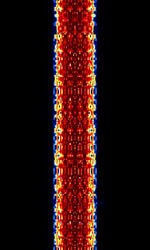 |
|
| Coherent CW | Coherent CWContinuous Wave (also known as CCW) was a strictly timed morse code mode designed by Ray Petit W7GHM (The same inventor of CLOVER). CCW depended on accurate timing from both receiver and transmitter. | 3 MHzMegaHertz (MHz) 10^6 Hz — 30 MHzMegaHertz (MHz) 10^6 Hz | USBUpper Side Band Modulation (Radio, referring to reception and modulation mode)Universal Serial Bus (Computer, referring to USB Ports and cables) | OOKOn-Off Keying Modulation | 1 HzHertz (Hz), unit of frequency, defined as one cycle per second (1 Hz). | Worldwide | 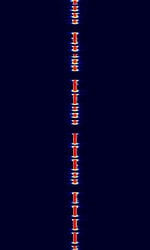 |
|
| CompuLert | Low speed FSKFrequency-Shift Keying telemetry to monitor and control warning sirens that are used to warn the public of threats such as tsunamis, severe weather, chemical spills and civil emergencies. | 453.375 MHzMegaHertz (MHz) 10^6 Hz | NFMNarrowband Frequency Modulation | FSKFrequency-Shift Keying | 5 kHzKiloHertz (kHz) 10^3 Hz | Worldwide | 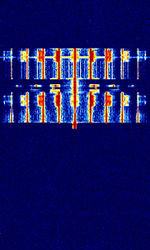 |
|
| Contestia | Contestia, developed by Nick Fedoseev (UT2UZ) in 2005, is a digital mode derived from Olivia. It aims to deliver a compromise of speed and performance. | 3 MHzMegaHertz (MHz) 10^6 Hz — 30 MHzMegaHertz (MHz) 10^6 Hz | USBUpper Side Band Modulation (Radio, referring to reception and modulation mode)Universal Serial Bus (Computer, referring to USB Ports and cables) | MFSKMultiple Frequency Shift-Keying | 150 HzHertz (Hz), unit of frequency, defined as one cycle per second (1 Hz). — 2 kHzKiloHertz (kHz) 10^3 Hz | Worldwide | 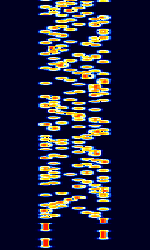 |
|
| Coquelet | Coquelet is an MFSKMultiple Frequency Shift-Keying system, similar to Piccolo. Also known as COQ-8, COQ-12, and COQUELET 8 V 2. Uses ITA-2 charset. It's two main modes are Coquelet-8 and Coquelet-13. No longer in use. | 3 MHzMegaHertz (MHz) 10^6 Hz — 30 MHzMegaHertz (MHz) 10^6 Hz | USBUpper Side Band Modulation (Radio, referring to reception and modulation mode)Universal Serial Bus (Computer, referring to USB Ports and cables) | MFSKMultiple Frequency Shift-Keying | 300 HzHertz (Hz), unit of frequency, defined as one cycle per second (1 Hz). — 500 HzHertz (Hz), unit of frequency, defined as one cycle per second (1 Hz). | Worldwide | 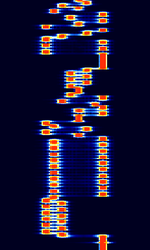 |
|
| D-STAR | D-STAR is a digital voice protocol used by ham radio. Is sometimes routed over the internet for international communications. | 145.67 MHzMegaHertz (MHz) 10^6 Hz | NFMNarrowband Frequency Modulation | GMSKGaussian Minimum-Shift Keying | 6.25 kHzKiloHertz (kHz) 10^3 Hz | Worldwide | 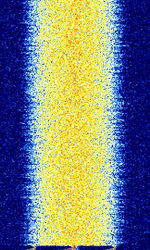 |
|
| DB0UPB research beacon | The is a research beacon for training neural networks. | 3.6 MHzMegaHertz (MHz) 10^6 Hz — 14.101 MHzMegaHertz (MHz) 10^6 Hz | LSBLower Side Band Modulation, USBUpper Side Band Modulation (Radio, referring to reception and modulation mode)Universal Serial Bus (Computer, referring to USB Ports and cables) | MFSKMultiple Frequency Shift-Keying, LSBLower Side Band Modulation, USBUpper Side Band Modulation (Radio, referring to reception and modulation mode)Universal Serial Bus (Computer, referring to USB Ports and cables) | 2.7 kHzKiloHertz (kHz) 10^3 Hz | Germany | 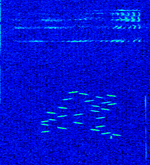 |
|
| DCF77 | DCF77 is a German longwave time signal radio station based at 77.5 kHzKiloHertz (kHz) 10^3 Hz. DCF uses an AMAmplitude Modulation modulated carrier and phase modulation sidebands to transmit its time signal. | 77.5 kHzKiloHertz (kHz) 10^3 Hz | USBUpper Side Band Modulation (Radio, referring to reception and modulation mode)Universal Serial Bus (Computer, referring to USB Ports and cables) | AMAmplitude Modulation, PSKPhase-Shift Keying | 1.3 kHzKiloHertz (kHz) 10^3 Hz | Germany | 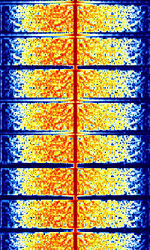 |
|
| DUP-ARQ | DUP-ARQAutomatic Repeat reQuestAutomatic Repeat Query, also known as ARTRAC and 125-ARTRAC, is a semi-duplex ARQAutomatic Repeat reQuestAutomatic Repeat Query system once used by Thai and Hungarian Diplomatic services. | 3 MHzMegaHertz (MHz) 10^6 Hz — 30 MHzMegaHertz (MHz) 10^6 Hz | USBUpper Side Band Modulation (Radio, referring to reception and modulation mode)Universal Serial Bus (Computer, referring to USB Ports and cables) | FSKFrequency-Shift Keying | 325 HzHertz (Hz), unit of frequency, defined as one cycle per second (1 Hz). | Worldwide | 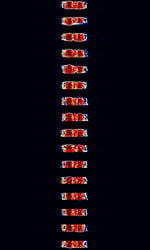 |
|
| DUP-ARQ-2 | DUP-ARQAutomatic Repeat reQuestAutomatic Repeat Query-2 (also known as ARTRAC II) is a further development of the DUP-ARQAutomatic Repeat reQuestAutomatic Repeat Query system and the system characteristics are very similar. DUP-ARQAutomatic Repeat reQuestAutomatic Repeat Query-2 allows transmission of ITA-2 (Baudot) or ITA-5 (ASCII) characters depending on the application. | 3 MHzMegaHertz (MHz) 10^6 Hz — 30 MHzMegaHertz (MHz) 10^6 Hz | USBUpper Side Band Modulation (Radio, referring to reception and modulation mode)Universal Serial Bus (Computer, referring to USB Ports and cables) | FSKFrequency-Shift Keying | 1.3 kHzKiloHertz (kHz) 10^3 Hz | Worldwide | 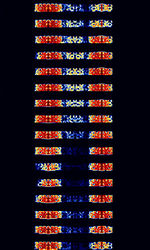 |
|
| DUP-FEC-2 | DUP-FECForward Error Correction-2 is a further development of the DUP-ARQAutomatic Repeat reQuestAutomatic Repeat Query system and the system characteristics are very similar. Uses FECForward Error Correction instead of ARQAutomatic Repeat reQuestAutomatic Repeat Query and runs at either 125 bdBaud (unit symbol Bd) is the unit for symbol rate or modulation rate in symbols per second. or 250 bdBaud (unit symbol Bd) is the unit for symbol rate or modulation rate in symbols per second.. | 3 MHzMegaHertz (MHz) 10^6 Hz — 30 MHzMegaHertz (MHz) 10^6 Hz | USBUpper Side Band Modulation (Radio, referring to reception and modulation mode)Universal Serial Bus (Computer, referring to USB Ports and cables) | FSKFrequency-Shift Keying | 1.1 kHzKiloHertz (kHz) 10^3 Hz | Worldwide | 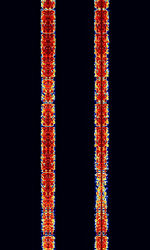 |
|
| Datawell Buoy HF Link | Datawell Buoy HFHigh Frequency (3-30 MHz) Links transmitted by Datawell Marine measurement buoys, measuring ocean conditions, temperature, and wave current. | 25.5 MHzMegaHertz (MHz) 10^6 Hz — 45 MHzMegaHertz (MHz) 10^6 Hz | USBUpper Side Band Modulation (Radio, referring to reception and modulation mode)Universal Serial Bus (Computer, referring to USB Ports and cables) | FSKFrequency-Shift Keying, MFSKMultiple Frequency Shift-Keying | 200 HzHertz (Hz), unit of frequency, defined as one cycle per second (1 Hz). — 400 HzHertz (Hz), unit of frequency, defined as one cycle per second (1 Hz). | Worldwide | 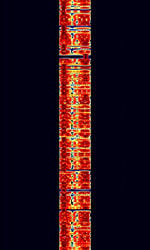 |
|
| Delfi-C3 Telemetry | Delfi-C3 Telemetry was a telemetry signal sent from the Delfi-C3 university-class satellite. | 145.87 MHzMegaHertz (MHz) 10^6 Hz | LSBLower Side Band Modulation | BPSKBinary Phase-Shift Keying (1 bit per symbol) | 10 kHzKiloHertz (kHz) 10^3 Hz | Worldwide | 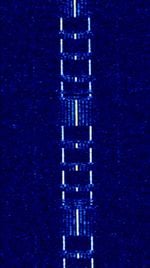 |
|
| Denso 4EA Key Fob | Denso Wireless Key Fob 4EA built by Denso Corporation for General Motors auto brands Chevrolet and Buick. Used on Chevrolet Camaro and Malibu from 2016+. Used on Buick Lacrosse 2017+. | 433.92 MHzMegaHertz (MHz) 10^6 Hz | AMAmplitude Modulation | AMAmplitude Modulation, ASKAmplitude-Shift Keying | 15 kHzKiloHertz (kHz) 10^3 Hz | Worldwide | 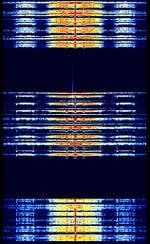 |
|
| Differential Global Positioning System (DGPS) | Differential GPS (DGPS), also known as M823 DGPS and SC-104 DGPS, is a supplementary correction signal used by GPS receivers to increase the accuracy of GPS based positioning. | 283.5 kHzKiloHertz (kHz) 10^3 Hz — 2.95 MHzMegaHertz (MHz) 10^6 Hz | USBUpper Side Band Modulation (Radio, referring to reception and modulation mode)Universal Serial Bus (Computer, referring to USB Ports and cables) | MSKMinimum-Shift Keying (When Shift/Bd = 0.5. It is impossible to get this ratio to be lower than 0.5, hence it is called the 'Minimum' shift.) | 150 HzHertz (Hz), unit of frequency, defined as one cycle per second (1 Hz). — 250 HzHertz (Hz), unit of frequency, defined as one cycle per second (1 Hz). | Worldwide | 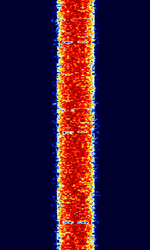 |
|
| Digital Audio Broadcasting (DAB) | DAB is an audio broadcasting standard containing a multiplex of digital radio stations in the signal. | 174 MHzMegaHertz (MHz) 10^6 Hz — 239 MHzMegaHertz (MHz) 10^6 Hz | AMAmplitude Modulation | OFDMOrthogonal Frequency-Division Multiplexing | 1.536 MHzMegaHertz (MHz) 10^6 Hz | Worldwide | ||
| Digital Audio Broadcasting Plus (DAB+) | DAB+ is a medium of delivering broadcast radio, containing multiple stations in a single multiplex. | 174 MHzMegaHertz (MHz) 10^6 Hz — 230 MHzMegaHertz (MHz) 10^6 Hz | OFDMOrthogonal Frequency-Division Multiplexing | 1.536 MHzMegaHertz (MHz) 10^6 Hz | Worldwide | |||
| Digital Enhanced Cordless Telecommunications (DECT) | DECT is a ETSIEuropean Telecommunications Standards Institute. An independent, not-for-profit, standardization organization in the telecommunications industry in Europe, developing global telecommunications standards. standard for short range communications, mainly cordless phones. It uses a 10 channel/24 slots in a TDMATime Division Multiple Access FDD structure. Audio sample is 100 times slower than real for listening purposes. | 1,880 MHzMegaHertz (MHz) 10^6 Hz — 1,900 MHzMegaHertz (MHz) 10^6 Hz | USBUpper Side Band Modulation (Radio, referring to reception and modulation mode)Universal Serial Bus (Computer, referring to USB Ports and cables) | GFSKGaussian Frequency-Shift Keying | 1.6 MHzMegaHertz (MHz) 10^6 Hz | Worldwide | 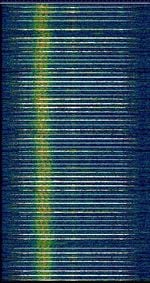 |
|
| Digital Mobile Radio (DMR) | Digital Mobile Radio (DMR) is an open digital mobile radio standard defined by ETSIEuropean Telecommunications Standards Institute. An independent, not-for-profit, standardization organization in the telecommunications industry in Europe, developing global telecommunications standards. and used in commercial products around the world. Mostly used by private network and local police, can be encrypted. Used in MOTOTRBO products. | 66 MHzMegaHertz (MHz) 10^6 Hz — 860 MHzMegaHertz (MHz) 10^6 Hz | NFMNarrowband Frequency Modulation | 4FSK4-Level Frequency Shift Keying | 12.5 kHzKiloHertz (kHz) 10^3 Hz | Worldwide | 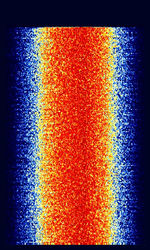 |
|
| Digital Multimedia Broadcasting (DMB) | Digital Multimedia Broadcasting (DMB) is a digital radio transmission technology developed in South Korea as part of the national IT project for sending multimedia such as TV, radio and datacasting to mobile devices such as mobile phones, laptops and GPS navigation systems. | 174 MHzMegaHertz (MHz) 10^6 Hz — 216 MHzMegaHertz (MHz) 10^6 Hz | DQPSKDifferential Quadrature Phase-Shift Keying, OFDMOrthogonal Frequency-Division Multiplexing | 1.536 MHzMegaHertz (MHz) 10^6 Hz | South Korea | — |  |
|
| Digital NBTV | Method for transmitting digital images via radio, similar to WinDRM or KG-STV | 3 MHzMegaHertz (MHz) 10^6 Hz — 470 MHzMegaHertz (MHz) 10^6 Hz | SSBSingle-sideband modulation, FMFrequency Modulation | BPSKBinary Phase-Shift Keying (1 bit per symbol) | 2.5 kHzKiloHertz (kHz) 10^3 Hz | Worldwide |  |
|
| Digital Private Mobile Radio (dPMR) | dPMR is an open, non-proprietary trunked radio standard developed by ETSIEuropean Telecommunications Standards Institute. An independent, not-for-profit, standardization organization in the telecommunications industry in Europe, developing global telecommunications standards., published under ETSIEuropean Telecommunications Standards Institute. An independent, not-for-profit, standardization organization in the telecommunications industry in Europe, developing global telecommunications standards. TS 102 658. Supports both data and digital voice transmission. | 149.019 MHzMegaHertz (MHz) 10^6 Hz — 446.2 MHzMegaHertz (MHz) 10^6 Hz | NFMNarrowband Frequency Modulation | 4FSK4-Level Frequency Shift Keying | 6.25 kHzKiloHertz (kHz) 10^3 Hz | Worldwide | 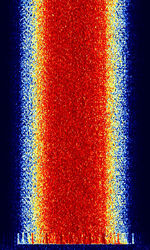 |
|
| Digital Radio Mondiale (DRM) | Digital Radio Mondiale (DRM) is a digital commercial broadcasting mode used to deliver FMFrequency Modulation-comparable sound quality to shortwave radio. | 531 kHzKiloHertz (kHz) 10^3 Hz — 26.06 MHzMegaHertz (MHz) 10^6 Hz | USBUpper Side Band Modulation (Radio, referring to reception and modulation mode)Universal Serial Bus (Computer, referring to USB Ports and cables) | QAMQuadrature Amplitude Modulation, OFDMOrthogonal Frequency-Division Multiplexing | 4.5 kHzKiloHertz (kHz) 10^3 Hz — 20 kHzKiloHertz (kHz) 10^3 Hz | Worldwide | 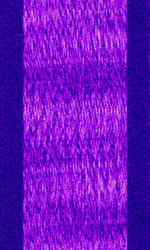 |
|
| Digital Radio Mondiale Plus (DRM+) | DRM+ is a VHFVery High Frequency (30-300 MHz) implementation of DRM primarily for the FMFrequency Modulation broadcast band. | 47 MHzMegaHertz (MHz) 10^6 Hz — 230 MHzMegaHertz (MHz) 10^6 Hz | OFDMOrthogonal Frequency-Division Multiplexing | 100 kHzKiloHertz (kHz) 10^3 Hz | Worldwide | — |  |
|
| Digital Video Broadcasting — Terrestrial (DVB-T) | Digital Video Broadcasting — Terrestrial (DVB-T) is a digital broadcast television format used in Europe and in many other countries in the world. | 174 MHzMegaHertz (MHz) 10^6 Hz — 786 MHzMegaHertz (MHz) 10^6 Hz | USBUpper Side Band Modulation (Radio, referring to reception and modulation mode)Universal Serial Bus (Computer, referring to USB Ports and cables) | QAMQuadrature Amplitude Modulation, OFDMOrthogonal Frequency-Division Multiplexing, QPSKQuadrature Phase-Shift Keying (2 bits per symbol) | 6 MHzMegaHertz (MHz) 10^6 Hz — 8 MHzMegaHertz (MHz) 10^6 Hz | Worldwide | 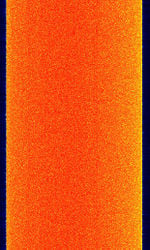 |
|
| Digital-Coded Squelch (DCS) | Digital in-band signalling used to squelch and manage transmissions on a given frequency. | 433 MHzMegaHertz (MHz) 10^6 Hz — 446 MHzMegaHertz (MHz) 10^6 Hz | NFMNarrowband Frequency Modulation | FSKFrequency-Shift Keying | Worldwide | 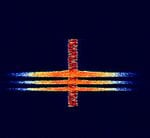 |
||
| Distress Radiobeacon (Digital) | Digital Distress Radiobeacons (EPIRB's, PLB's and ELT's) are emergency radio beacons used for search and rescue operations to locate a vessel, plane, or person in distress. | 406 MHzMegaHertz (MHz) 10^6 Hz | NFMNarrowband Frequency Modulation | PSKPhase-Shift Keying | 1.4 kHzKiloHertz (kHz) 10^3 Hz | Worldwide | 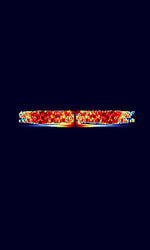 |
|
| DominoEX | DominoEX, also known as just Domino, is an IFKIncremental Frequency Keying (Incremental Frequency Keying) mode developed by Murray Greenman ZL1BPU and Con Wassilieff ZL2AFP in 2004 that was the first fully developed iteration of the Domino IFKIncremental Frequency Keying family modes. Used to send text over RFRadio Frequency. | 5.332 MHzMegaHertz (MHz) 10^6 Hz — 28.117 MHzMegaHertz (MHz) 10^6 Hz | USBUpper Side Band Modulation (Radio, referring to reception and modulation mode)Universal Serial Bus (Computer, referring to USB Ports and cables) | IFKIncremental Frequency Keying | 173 HzHertz (Hz), unit of frequency, defined as one cycle per second (1 Hz). — 524 HzHertz (Hz), unit of frequency, defined as one cycle per second (1 Hz). | Worldwide | 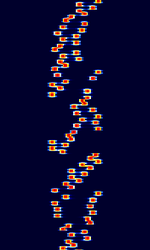 |
|
| DominoF | DominoF was the first experimental implementation of the Domino family of IFKIncremental Frequency Keying modes, developed by Con ZL2AFP. DominoF used dual interleaved tone sets. Superseded by DominoEX. | 1.838 MHzMegaHertz (MHz) 10^6 Hz — 28.08 MHzMegaHertz (MHz) 10^6 Hz | USBUpper Side Band Modulation (Radio, referring to reception and modulation mode)Universal Serial Bus (Computer, referring to USB Ports and cables) | IFKIncremental Frequency Keying | 220 HzHertz (Hz), unit of frequency, defined as one cycle per second (1 Hz). | Worldwide | 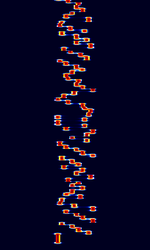 |
|
| EIA | EIA is a 5/6-tone selcall mode defined by the Electronics Industries Association in the United States. Also known as Motorola MetroPage. | 30 MHzMegaHertz (MHz) 10^6 Hz — 800 MHzMegaHertz (MHz) 10^6 Hz | NFMNarrowband Frequency Modulation | MFSKMultiple Frequency Shift-Keying | 5 kHzKiloHertz (kHz) 10^3 Hz | Worldwide | 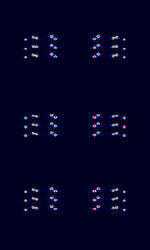 |
|
| ELEKTRO-L GGAK-E Direct Broadcast | Broadcasts the data from the GGAK-E cosmic ray detector onboard ELEKTRO-L geostationary weather satellites | 1,693 MHzMegaHertz (MHz) 10^6 Hz | DSBDual Side Band Modulation | PSKPhase-Shift Keying | 15 kHzKiloHertz (kHz) 10^3 Hz | Asia, Europe | 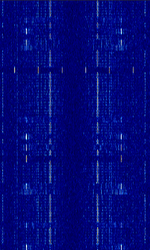 |
|
| EasyPal Digital SSTV | Seen it on the Web-SDR Twente. It could be on any frequency.
It's quite a short signal to contain a picture. Text (a callsign?) is visible in the waterfall sometimes at the end and sometimes at the beginning of the sound burst. In the audio file it is at the beginning. The signal begins at 30 second mark. Someone suggested it was Easypal made signal |
3.735 MHzMegaHertz (MHz) 10^6 Hz | LSBLower Side Band Modulation | 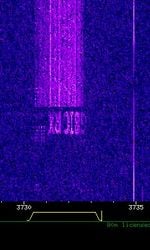 |
||||
| Electric Fence Remote Control | This signal comes from an RFRadio Frequency remote control device that transmits in UHFUltra High Frequency (300-3000 MHz) over 433.92MHz and controls the arming and disarming system of an electric fence. | 433.92 MHzMegaHertz (MHz) 10^6 Hz | AMAmplitude Modulation | AMAmplitude Modulation | 10 kHzKiloHertz (kHz) 10^3 Hz | Worldwide |  |
|
| Emergency Alert System (EAS) | The Emergency Alert System (EAS) is a national warning system in the United States, implemented since 1997, superceding the Emergency Broadcast System (EBS). | 162.4 MHzMegaHertz (MHz) 10^6 Hz — 162.55 MHzMegaHertz (MHz) 10^6 Hz | NFMNarrowband Frequency Modulation | AFSKAudio Frequency-Shift Keying | 1.2 kHzKiloHertz (kHz) 10^3 Hz | United States | 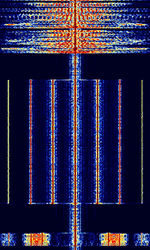 |
|
| Emergency Managers Weather Information Network (EMWIN) - Repeater | The Emergency Managers Weather Information Network (EMWIN) is a system for distributing a live stream of weather information in the United States. This is the VHFVery High Frequency (30-300 MHz) Repeater of the network. | 163.3 MHzMegaHertz (MHz) 10^6 Hz — 168.813 MHzMegaHertz (MHz) 10^6 Hz | NFMNarrowband Frequency Modulation | AFSKAudio Frequency-Shift Keying | 20 kHzKiloHertz (kHz) 10^3 Hz | United States | 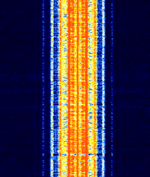 |
|
| End of Train Device (EOTD) | Transmits train telemetry such as brake status and accidental separation information to the head locomotive. | 452 HzHertz (Hz), unit of frequency, defined as one cycle per second (1 Hz). — 457.938 MHzMegaHertz (MHz) 10^6 Hz | NFMNarrowband Frequency Modulation | FSKFrequency-Shift Keying | 8 kHzKiloHertz (kHz) 10^3 Hz | Worldwide | 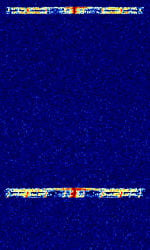 |
|
| Enhanced Digital Access Communications System (EDACS) | EDACS is a trunked radio system developed by General Electric and Ericsson. EDACS was invented by General Electric in the mid-80s and is currently owned by Harris Corporation. Harris has announced that EDACS systems will no longer be supported by 2017. | 160 MHzMegaHertz (MHz) 10^6 Hz — 941 MHzMegaHertz (MHz) 10^6 Hz | NFMNarrowband Frequency Modulation | GFSKGaussian Frequency-Shift Keying | 6.25 kHzKiloHertz (kHz) 10^3 Hz — 12.5 kHzKiloHertz (kHz) 10^3 Hz | Worldwide | 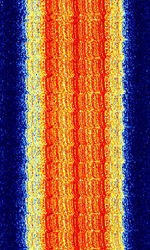 |
|
| Ethernet Over Powerline | Ethernet Over Powerline, is an alternative way to reach ethernet cables through a set of adapters that go into outlets that can be plugged directly in the router instead of routing cables all the way from one end of a building to another. It creates the Pulse-Amplitude modulation that ethernet uses, over the RFRadio Frequency waves, and can reach a bandwidth of 60 MHzMegaHertz (MHz) 10^6 Hz depending on certain conditions. It can cause enormous interference in HFHigh Frequency (3-30 MHz) and lower VHFVery High Frequency (30-300 MHz). | 0 HzHertz (Hz), unit of frequency, defined as one cycle per second (1 Hz). — 60 MHzMegaHertz (MHz) 10^6 Hz | AMAmplitude Modulation | PAMPulse Amplitude Modulation | 60 MHzMegaHertz (MHz) 10^6 Hz | Worldwide |  |
|
| European Radio Message System (ERMES) | European Radio Message System (ERMES) is a European common standard for paging developed by the European Telecommunications Standards Institute (ESTI) | 169.413 MHzMegaHertz (MHz) 10^6 Hz — 169.833 MHzMegaHertz (MHz) 10^6 Hz | NFMNarrowband Frequency Modulation | 4FSK4-Level Frequency Shift Keying | 25 kHzKiloHertz (kHz) 10^3 Hz | Europe | 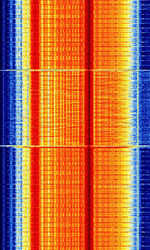 |
|
| F03 numbers station | Enigma designation F03 is a family of digital FSKFrequency-Shift Keying modes, used by the "Polish 11" numbers station operator, which is likely a Polish intelligence agency. | 4 MHzMegaHertz (MHz) 10^6 Hz — 21 MHzMegaHertz (MHz) 10^6 Hz | USBUpper Side Band Modulation (Radio, referring to reception and modulation mode)Universal Serial Bus (Computer, referring to USB Ports and cables) | FSKFrequency-Shift Keying, MFSKMultiple Frequency Shift-Keying | 200 HzHertz (Hz), unit of frequency, defined as one cycle per second (1 Hz). — 800 HzHertz (Hz), unit of frequency, defined as one cycle per second (1 Hz). | Worldwide, Poland | 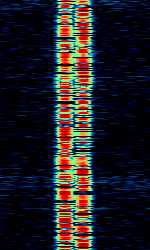 |
|
| F07 number station | F07 is a Russian digital number station known for using multiple modulation types, including MFSKMultiple Frequency Shift-Keying, BPSKBinary Phase-Shift Keying (1 bit per symbol) and FSKFrequency-Shift Keying. | 5 MHzMegaHertz (MHz) 10^6 Hz — 17.5 MHzMegaHertz (MHz) 10^6 Hz | USBUpper Side Band Modulation (Radio, referring to reception and modulation mode)Universal Serial Bus (Computer, referring to USB Ports and cables) | MFSKMultiple Frequency Shift-Keying, BPSKBinary Phase-Shift Keying (1 bit per symbol), FSKFrequency-Shift Keying | 4 kHzKiloHertz (kHz) 10^3 Hz | Russia | 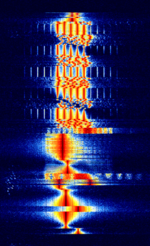 |
|
| FEC-A | FECForward Error Correction-A, also known as FECForward Error Correction-100 or FECForward Error Correction-100A, is a synchronous simplex ARQAutomatic Repeat reQuestAutomatic Repeat Query system that uses the ITA 2 alphabet. This mode was once used by many embassies, diplomatic services, and news agencies worldwide. This mode was developed by Siemens. | 3 MHzMegaHertz (MHz) 10^6 Hz — 30 MHzMegaHertz (MHz) 10^6 Hz | USBUpper Side Band Modulation (Radio, referring to reception and modulation mode)Universal Serial Bus (Computer, referring to USB Ports and cables) | FSKFrequency-Shift Keying | 100 HzHertz (Hz), unit of frequency, defined as one cycle per second (1 Hz). — 1.2 kHzKiloHertz (kHz) 10^3 Hz | Worldwide | 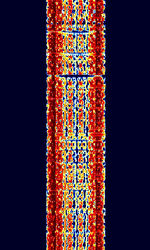 |
|
| FLASH-OFDM | Fast Low-latency Access with Seamless Handoff Orthogonal Frequency Division Multiplexing (FLASH-OFDMOrthogonal Frequency-Division Multiplexing) is a mobile data access technology developed by Flarion. | 450 MHzMegaHertz (MHz) 10^6 Hz | WFMWideband Frequency Modulation | MC-CDMACode Division Multiple Access | 2 MHzMegaHertz (MHz) 10^6 Hz | Finland, Slovakia, Germany, United States |  |
|
| FLEX | FLEX (Flexible Wide Area Paging Protocol) is Motorola's high speed one-way paging protocol that supports 1600, 3200, and 6400 bpsBits per second (bps). FLEX can transmit tone, numeric, alphanumeric, and binary data. | 152.6 MHzMegaHertz (MHz) 10^6 Hz — 931.938 MHzMegaHertz (MHz) 10^6 Hz | NFMNarrowband Frequency Modulation | FSKFrequency-Shift Keying, 4FSK4-Level Frequency Shift Keying | 5 kHzKiloHertz (kHz) 10^3 Hz | Worldwide | 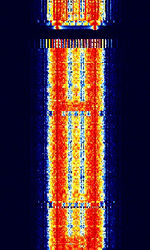 |
|
| FSK441 | FSK441 is a high speed meteor scatter communication mode. FSK441 uses a baudBaud (unit symbol Bd) is the unit for symbol rate or modulation rate in symbols per second. rate of 441 BdBaud (unit symbol Bd) is the unit for symbol rate or modulation rate in symbols per second.. | 144 MHzMegaHertz (MHz) 10^6 Hz — 444 MHzMegaHertz (MHz) 10^6 Hz | USBUpper Side Band Modulation (Radio, referring to reception and modulation mode)Universal Serial Bus (Computer, referring to USB Ports and cables) | FSKFrequency-Shift Keying | 1.75 kHzKiloHertz (kHz) 10^3 Hz | Worldwide | 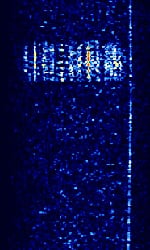 |
|
| FSQ | Fast Simple QSO (FSQ) is an amateur radio digital modulation mode developed by Con Wassilieff ZL2AFP with Murray Greenman ZL1BPU in 2015. | 3.58 MHzMegaHertz (MHz) 10^6 Hz — 10.149 MHzMegaHertz (MHz) 10^6 Hz | USBUpper Side Band Modulation (Radio, referring to reception and modulation mode)Universal Serial Bus (Computer, referring to USB Ports and cables) | IFK+Offset Incremental Frequency Keying | 300 HzHertz (Hz), unit of frequency, defined as one cycle per second (1 Hz). | Worldwide | 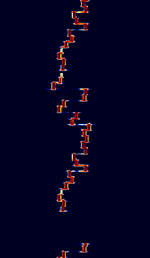 |
|
| FST4 | FST4 is a 4-GFSKGaussian Frequency-Shift Keying amateur radio communications mode, designed especially for making contacts (QSO's) on LFLow Frequency (30-300 kHz) and MFMedium Frequency (300-3000 kHz) frequency ranges under extreme weak-signal conditions. It is part of the WSJT-X software. | 137 kHzKiloHertz (kHz) 10^3 Hz — 474 kHzKiloHertz (kHz) 10^3 Hz | USBUpper Side Band Modulation (Radio, referring to reception and modulation mode)Universal Serial Bus (Computer, referring to USB Ports and cables) | GFSKGaussian Frequency-Shift Keying | 0 HzHertz (Hz), unit of frequency, defined as one cycle per second (1 Hz). — 66 HzHertz (Hz), unit of frequency, defined as one cycle per second (1 Hz). | Worldwide | 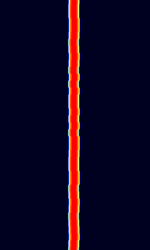 |
|
| FST4W | FST4W is an amateur radio digital protocol designed particularly for the LFLow Frequency (30-300 kHz) and MFMedium Frequency (300-3000 kHz) bands, for quasi-beacon transmissions of WSPR-style messages. FST4W uses 4-GFSKGaussian Frequency-Shift Keying modulation and offers T/R sequence lengths of 120, 300, 900, and 1800 seconds. | 136 kHzKiloHertz (kHz) 10^3 Hz — 1.839 MHzMegaHertz (MHz) 10^6 Hz | USBUpper Side Band Modulation (Radio, referring to reception and modulation mode)Universal Serial Bus (Computer, referring to USB Ports and cables) | GFSKGaussian Frequency-Shift Keying | 0 HzHertz (Hz), unit of frequency, defined as one cycle per second (1 Hz). — 5 HzHertz (Hz), unit of frequency, defined as one cycle per second (1 Hz). | Worldwide |  |
|
| FT4 | FT4 is an amateur radio contesting communication protocol developed by Joe Taylor (K1JT) and Steve Franke (K9AN) descended from FT8. | 10.14 kHzKiloHertz (kHz) 10^3 Hz — 144.17 MHzMegaHertz (MHz) 10^6 Hz | USBUpper Side Band Modulation (Radio, referring to reception and modulation mode)Universal Serial Bus (Computer, referring to USB Ports and cables) | 4FSK4-Level Frequency Shift Keying | 83 HzHertz (Hz), unit of frequency, defined as one cycle per second (1 Hz). | Worldwide | 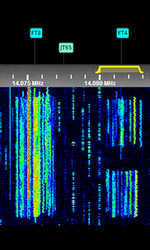 |
|
| FT8 | FT8 is an extremely-weak-signal amateur radio mode that transmits very limited communications. JS8, a variant of FT8, can send full conversations and relay messages | 1.84 MHzMegaHertz (MHz) 10^6 Hz — 144.174 MHzMegaHertz (MHz) 10^6 Hz | USBUpper Side Band Modulation (Radio, referring to reception and modulation mode)Universal Serial Bus (Computer, referring to USB Ports and cables) | 8-FSKFrequency-Shift Keying | 50 HzHertz (Hz), unit of frequency, defined as one cycle per second (1 Hz). | Worldwide | 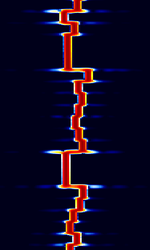 |
|
| FUNcube-1 Telemetry | FUNcube-1 Telemetry is a telemetry signal sent from the Funcube-1 Cubesat amateur radio satellite. | 145.935 MHzMegaHertz (MHz) 10^6 Hz | USBUpper Side Band Modulation (Radio, referring to reception and modulation mode)Universal Serial Bus (Computer, referring to USB Ports and cables) | PSKPhase-Shift Keying | 2 kHzKiloHertz (kHz) 10^3 Hz | Worldwide | 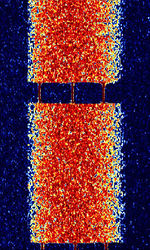 |
|
| Federal Signal Modem-MSK | Signalling protocol developed for Federal Signal's various warning and mass notification appliances. This signal is used for activation and telemetry of all units in a network. | 150 MHzMegaHertz (MHz) 10^6 Hz — 160 MHzMegaHertz (MHz) 10^6 Hz | NFMNarrowband Frequency Modulation | MSKMinimum-Shift Keying (When Shift/Bd = 0.5. It is impossible to get this ratio to be lower than 0.5, hence it is called the 'Minimum' shift.) | 6 kHzKiloHertz (kHz) 10^3 Hz | United States |  |
|
| FreeDV COHPSK | FreeDV Coherent PSKPhase-Shift Keying (Also known as FreeDV 700) is a robust Digital Voice mode developed by David Rowe for his FreeDV Digital Voice Software. | 3 MHzMegaHertz (MHz) 10^6 Hz — 30 MHzMegaHertz (MHz) 10^6 Hz | USBUpper Side Band Modulation (Radio, referring to reception and modulation mode)Universal Serial Bus (Computer, referring to USB Ports and cables) | PSKPhase-Shift Keying, QPSKQuadrature Phase-Shift Keying (2 bits per symbol), DQPSKDifferential Quadrature Phase-Shift Keying, OFDMOrthogonal Frequency-Division Multiplexing | 1.5 kHzKiloHertz (kHz) 10^3 Hz | Worldwide | 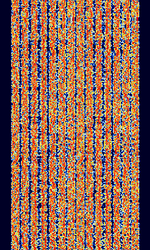 |
|
| FreeDV plus Video | FreeDV plus Video (also known as FreeDV+) combines analog FMFrequency Modulation multicarrier Narrow Band TV (NBTV) by Con Wassilieff, ZL2AFP, and FreeDV digital voice by David Rowe, VK5DGR. | 3 MHzMegaHertz (MHz) 10^6 Hz — 30 MHzMegaHertz (MHz) 10^6 Hz | USBUpper Side Band Modulation (Radio, referring to reception and modulation mode)Universal Serial Bus (Computer, referring to USB Ports and cables) | OFDMOrthogonal Frequency-Division Multiplexing, FMFrequency Modulation | 3.5 kHzKiloHertz (kHz) 10^3 Hz | Worldwide | 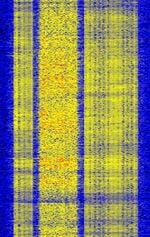 |
|
| Frequency Division Multiplex Digital Voice (FDMDV) | Frequency Division Multiplex Digital Voice (FDMDV), also known as FDMDV 14+1-tone, is a digital voice mode originally developed by Peter Martinez G3PLX and Francesca Lanza HB9TLK. It has since been improved upon by David Rowe. (FreeDV COHPSK) | 3 MHzMegaHertz (MHz) 10^6 Hz — 30 MHzMegaHertz (MHz) 10^6 Hz | USBUpper Side Band Modulation (Radio, referring to reception and modulation mode)Universal Serial Bus (Computer, referring to USB Ports and cables) | PSKPhase-Shift Keying | 1.125 kHzKiloHertz (kHz) 10^3 Hz — 1.3 kHzKiloHertz (kHz) 10^3 Hz | Worldwide | 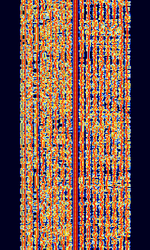 |
|
| Futuba RC Controller | 72-75 MHzMegaHertz (MHz) 10^6 Hz transmitters are used to control various types of RC models. RC Controllers that use 72-75 MHzMegaHertz (MHz) 10^6 Hz don't seem to be used as often as they used to. | 72 MHzMegaHertz (MHz) 10^6 Hz — 75 MHzMegaHertz (MHz) 10^6 Hz | AMAmplitude Modulation | 12 kHzKiloHertz (kHz) 10^3 Hz | 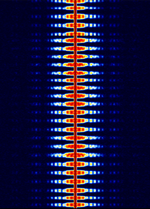 |
|||
| G-TOR | Golay-Teleprinting Over Radio (G-TOR) is an FSKFrequency-Shift Keying proprietary standard developed by Kantronics Inc. and is used by radio amateurs, military (Irish Air Corps/Navy, Mexican army) and governmental agencies (ICRC). | 3 MHzMegaHertz (MHz) 10^6 Hz — 30 MHzMegaHertz (MHz) 10^6 Hz | USBUpper Side Band Modulation (Radio, referring to reception and modulation mode)Universal Serial Bus (Computer, referring to USB Ports and cables) | FSKFrequency-Shift Keying | 350 HzHertz (Hz), unit of frequency, defined as one cycle per second (1 Hz). | Worldwide | 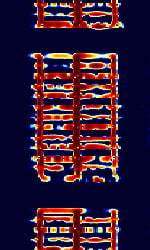 |
|
| GK-2A LRIT ( Low-Rate Image Transmission ) | LRIT (Low-Rate Image Transmission) is used to transmit images on the GK-2A satellite | 1,692.1 MHzMegaHertz (MHz) 10^6 Hz | RAW | BPSKBinary Phase-Shift Keying (1 bit per symbol) | 170 kHzKiloHertz (kHz) 10^3 Hz | Asia-Pacific | 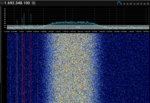 |
|
| GM2100 (R&S) | This is the proprietary HFHigh Frequency (3-30 MHz) Data Signal Protocol for the Rohde & Schwarz HFHigh Frequency (3-30 MHz) Modem GM2100. | 3 MHzMegaHertz (MHz) 10^6 Hz — 30 MHzMegaHertz (MHz) 10^6 Hz | USBUpper Side Band Modulation (Radio, referring to reception and modulation mode)Universal Serial Bus (Computer, referring to USB Ports and cables) | PSKPhase-Shift Keying | 3 kHzKiloHertz (kHz) 10^3 Hz | Europe | 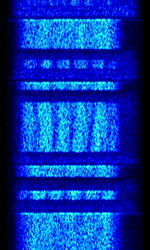 |
|
| GMDSS Digital Selective Calling | Global Maritime Distress and Safety System's Digital Selective Calling (GMDSS-DSC) is a maritime communication protocol intended to initiate ship-to-ship, ship-to-shore and shore-to-ship radiotelephone and MFMedium Frequency (300-3000 kHz)/HFHigh Frequency (3-30 MHz) radiotelex calls. | 2.177 MHzMegaHertz (MHz) 10^6 Hz — 156.525 MHzMegaHertz (MHz) 10^6 Hz | USBUpper Side Band Modulation (Radio, referring to reception and modulation mode)Universal Serial Bus (Computer, referring to USB Ports and cables) | FSKFrequency-Shift Keying | 350 HzHertz (Hz), unit of frequency, defined as one cycle per second (1 Hz). | Worldwide | 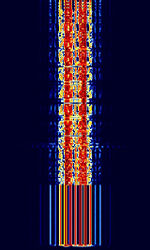 |
|
| GOES Data Collection System (DCS) | Comes from the geostationary satellites GOES 16 and GOES 17. Relays information about water levels, lightning strikes, and other information. | 1,679.9 MHzMegaHertz (MHz) 10^6 Hz — 1,680.2 MHzMegaHertz (MHz) 10^6 Hz | RAW | 8PSK8-Phase Phase-Shift Keying (3 bits per symbol) | 300 HzHertz (Hz), unit of frequency, defined as one cycle per second (1 Hz). — 1.2 kHzKiloHertz (kHz) 10^3 Hz | Worldwide | 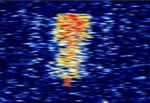 |
|
| GOES High Rate Information Transmission (HRIT) | GOES HRIT is a retransmission of satellite imagery and other information from the GOES-R series of satellites. | 1,694.1 MHzMegaHertz (MHz) 10^6 Hz | RAW | BPSKBinary Phase-Shift Keying (1 bit per symbol) | 1.205 MHzMegaHertz (MHz) 10^6 Hz | Worldwide | — | 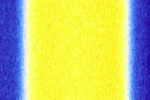 |
| GOES Rebroadcast (GRB) | GOES Rebroadcast (GRB) is a form of data sent from the GOES-R series of satellites that contain information from all of the instruments on board the GOES satellites | 1,681.6 MHzMegaHertz (MHz) 10^6 Hz — 1,686.6 MHzMegaHertz (MHz) 10^6 Hz | DVB-S2, RAW | QPSK16, 8PSK8-Phase Phase-Shift Keying (3 bits per symbol) | 10 MHzMegaHertz (MHz) 10^6 Hz | Worldwide |  |
|
| Gandalf MDT | Gandalf MDTMobile Data Terminal, A mobile data terminal (MDT) is a computerized device used in public transit vehicles, taxicabs, commercial trucking fleets, military logistics, and emergency vehicles, such as police cars, to communicate with a central dispatch office. was developed by Gandalf Mobile Systems, a subsidiary of Canadian company Gandalf Technologies. Used primarily by taxi and courier services in Canada and the United States. This protocol was used in Gandalf's Cabmate systems. | 150 MHzMegaHertz (MHz) 10^6 Hz — 450 MHzMegaHertz (MHz) 10^6 Hz | NFMNarrowband Frequency Modulation | 4FSK4-Level Frequency Shift Keying | 10 kHzKiloHertz (kHz) 10^3 Hz | Worldwide | 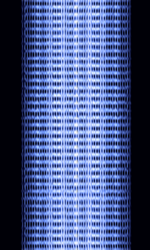 |
|
| Glenayre Paging Link | Glenayre's Paging Link. With QAMQuadrature Amplitude Modulation being used, It is a way to upkeep a linked paging transmitter when no data is broadcast. Glenayre C2100/C2000 model control systems were likely to use this. | 152 MHzMegaHertz (MHz) 10^6 Hz — 512 MHzMegaHertz (MHz) 10^6 Hz | NFMNarrowband Frequency Modulation | QAMQuadrature Amplitude Modulation | United States | 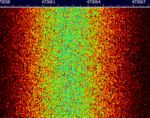 |
||
| Global System for Mobile Communications (GSM) | GSM (Global System for Mobile Communications) is a standard developed by ETSIEuropean Telecommunications Standards Institute. An independent, not-for-profit, standardization organization in the telecommunications industry in Europe, developing global telecommunications standards. to describe the protocols for second-generation (2G) digital cellular networks used by mobile phones. As of 2014, it has become the default global standard for mobile communications. | 850 MHzMegaHertz (MHz) 10^6 Hz — 1,900 MHzMegaHertz (MHz) 10^6 Hz | RAW, AMAmplitude Modulation, FMFrequency Modulation | GMSKGaussian Minimum-Shift Keying | 200 kHzKiloHertz (kHz) 10^3 Hz | Worldwide | ||
| Globe Wireless HF Network | Globe Wireless' Maritime Digital Radio was a system of 24 stations around the globe offering data services to large cargo vessels. Since 2014, GW has discontinued their HFHigh Frequency (3-30 MHz) network. | 3 MHzMegaHertz (MHz) 10^6 Hz — 30 MHzMegaHertz (MHz) 10^6 Hz | USBUpper Side Band Modulation (Radio, referring to reception and modulation mode)Universal Serial Bus (Computer, referring to USB Ports and cables) | PSKPhase-Shift Keying, FSKFrequency-Shift Keying, OFDMOrthogonal Frequency-Division Multiplexing | 400 HzHertz (Hz), unit of frequency, defined as one cycle per second (1 Hz). — 2 kHzKiloHertz (kHz) 10^3 Hz | Worldwide | 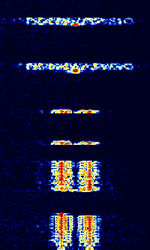 |
|
| Golay Paging (GSC) | Golay Paging (or Golay Sequential Code, GSC) is a one-way 2-FSKFrequency-Shift Keying paging format developed by Motorola. It is capable of transmitting tone, numeric, alphanumeric, and voice pages. | 33 MHzMegaHertz (MHz) 10^6 Hz — 932 MHzMegaHertz (MHz) 10^6 Hz | NFMNarrowband Frequency Modulation | FSKFrequency-Shift Keying | 2.6 kHzKiloHertz (kHz) 10^3 Hz | Worldwide | 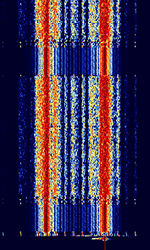 |
|
| Graw DFM-06 Weather Balloon (Radiosonde) | The DFM-06 is a standard radiosonde for most applications. It is perfectly suited for synoptic observations or military applications. | 400.01 MHzMegaHertz (MHz) 10^6 Hz — 405.99 MHzMegaHertz (MHz) 10^6 Hz | NFMNarrowband Frequency Modulation | FSKFrequency-Shift Keying | 20 kHzKiloHertz (kHz) 10^3 Hz | Europe | 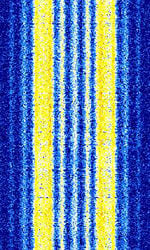 |
|
| Graw DFM-17 (Radiosonde) | Radiosonde developed by Graw/Noris Group GmbH for upper air weather observation | 400 MHzMegaHertz (MHz) 10^6 Hz — 405.99 MHzMegaHertz (MHz) 10^6 Hz | NFMNarrowband Frequency Modulation | GFSKGaussian Frequency-Shift Keying | 10 kHzKiloHertz (kHz) 10^3 Hz | Worldwide | 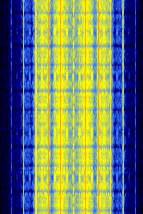 |
|
| HC-265 Voice Scrambler | HC-265 is a Voice Scrambling mode developed by Hagelin Crypto for their HC-265 CRYPTOCOM secure voice unit. | 3 MHzMegaHertz (MHz) 10^6 Hz — 30 MHzMegaHertz (MHz) 10^6 Hz | USBUpper Side Band Modulation (Radio, referring to reception and modulation mode)Universal Serial Bus (Computer, referring to USB Ports and cables) | FSKFrequency-Shift Keying | 2.25 kHzKiloHertz (kHz) 10^3 Hz — 3 kHzKiloHertz (kHz) 10^3 Hz | Worldwide | 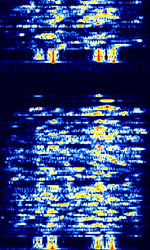 |
|
| HC-ARQ | Haegelin Crypto ARQAutomatic Repeat reQuestAutomatic Repeat Query (HC-ARQAutomatic Repeat reQuestAutomatic Repeat Query) was an FSKFrequency-Shift Keying synchronous simplex ARQAutomatic Repeat reQuestAutomatic Repeat Query system used by the UN and International Rescue Committee. This mode has been phased out and is no longer in use. | 3 MHzMegaHertz (MHz) 10^6 Hz — 30 MHzMegaHertz (MHz) 10^6 Hz | USBUpper Side Band Modulation (Radio, referring to reception and modulation mode)Universal Serial Bus (Computer, referring to USB Ports and cables) | FSKFrequency-Shift Keying | 300 HzHertz (Hz), unit of frequency, defined as one cycle per second (1 Hz). | Worldwide | 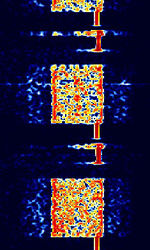 |
|
| HD Radio (AM) | HD Radio is a proprietary digital broadcast radio format transmitted in North America, usually as sidebands on analog carriers. This is the AMAmplitude Modulation band implementation of HD Radio. | 535 kHzKiloHertz (kHz) 10^3 Hz — 1.7 MHzMegaHertz (MHz) 10^6 Hz | RAW | OFDMOrthogonal Frequency-Division Multiplexing | 30 kHzKiloHertz (kHz) 10^3 Hz | United States | 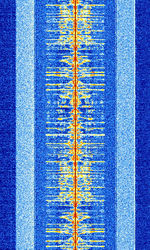 |
|
| HD Radio (FM) | HD Radio is a proprietary digital broadcast radio format transmitted in North America, usually as sidebands on analog carriers. This is the FMFrequency Modulation band implementation of HD Radio. | 87.7 MHzMegaHertz (MHz) 10^6 Hz — 107.9 MHzMegaHertz (MHz) 10^6 Hz | RAW | OFDMOrthogonal Frequency-Division Multiplexing | 400 kHzKiloHertz (kHz) 10^3 Hz | United States | 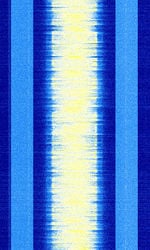 |
|
| HF trading link '120 Hz FMCW idle tone' | A HFHigh Frequency (3-30 MHz) trading link in idle state which strongly resembles an FMCW radar with 120 HzHertz (Hz), unit of frequency, defined as one cycle per second (1 Hz). sweep rate. Has been observed to transmit CWContinuous Wave ID once per hour. | 19.31 MHzMegaHertz (MHz) 10^6 Hz — 20.548 MHzMegaHertz (MHz) 10^6 Hz | USBUpper Side Band Modulation (Radio, referring to reception and modulation mode)Universal Serial Bus (Computer, referring to USB Ports and cables) | OFDMOrthogonal Frequency-Division Multiplexing | 9 kHzKiloHertz (kHz) 10^3 Hz — 10 kHzKiloHertz (kHz) 10^3 Hz | Canada / Worldwide | 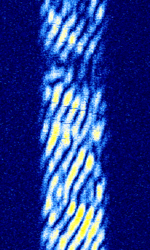 |
|
| HNG-FEC | HNG-FECForward Error Correction was a full duplex system developed and used solely by the Ministry of Foreign Affairs in Hungary. Used 100.05 bdBaud (unit symbol Bd) is the unit for symbol rate or modulation rate in symbols per second. with 500 HzHertz (Hz), unit of frequency, defined as one cycle per second (1 Hz). shift FSKFrequency-Shift Keying. This mode is no longer used today. | 2.4 MHzMegaHertz (MHz) 10^6 Hz — 24 MHzMegaHertz (MHz) 10^6 Hz | USBUpper Side Band Modulation (Radio, referring to reception and modulation mode)Universal Serial Bus (Computer, referring to USB Ports and cables) | FSKFrequency-Shift Keying | 600 HzHertz (Hz), unit of frequency, defined as one cycle per second (1 Hz). | Hungary | 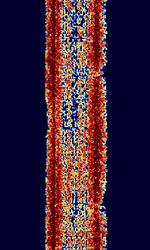 |
|
| HORYU-4 Telemetry | Telemetry signal sent from the HORYU-4 university-class satellite Launched by Kyushu Institute of Technology in Japan | 437.375 MHzMegaHertz (MHz) 10^6 Hz | USBUpper Side Band Modulation (Radio, referring to reception and modulation mode)Universal Serial Bus (Computer, referring to USB Ports and cables) | BPSKBinary Phase-Shift Keying (1 bit per symbol) | Worldwide | 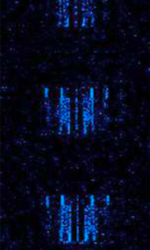 |
||
| Hellschreiber | Hellschreiber (Also known as Feld Hell or just Hell) is a teleprinter system developed in the late 1920's by Rudolf Hell, a German inventor. | 3 MHzMegaHertz (MHz) 10^6 Hz — 30 MHzMegaHertz (MHz) 10^6 Hz | USBUpper Side Band Modulation (Radio, referring to reception and modulation mode)Universal Serial Bus (Computer, referring to USB Ports and cables) | OOKOn-Off Keying Modulation, FSKFrequency-Shift Keying, MSKMinimum-Shift Keying (When Shift/Bd = 0.5. It is impossible to get this ratio to be lower than 0.5, hence it is called the 'Minimum' shift.) | 350 HzHertz (Hz), unit of frequency, defined as one cycle per second (1 Hz). — 800 HzHertz (Hz), unit of frequency, defined as one cycle per second (1 Hz). | Worldwide | 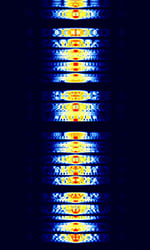 |
|
| High Frequency Data Link (HFDL) | HFDL, also known as HFHigh Frequency (3-30 MHz)-ACARS, ARINC 753, ARINC 635, and HFHigh Frequency (3-30 MHz) DATALINK,is a data link that aircraft use to communicate short messages over long distances using HFHigh Frequency (3-30 MHz) signals. | 2.9 MHzMegaHertz (MHz) 10^6 Hz — 22 MHzMegaHertz (MHz) 10^6 Hz | USBUpper Side Band Modulation (Radio, referring to reception and modulation mode)Universal Serial Bus (Computer, referring to USB Ports and cables) | PSKPhase-Shift Keying | 2.4 kHzKiloHertz (kHz) 10^3 Hz | Worldwide | 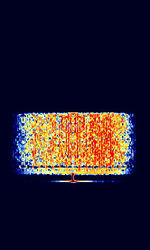 |
|
| High Frequency Data and Voice Link (HFDVL) | HFDVL (or HFD+VL) is an experimental mode developed by research groups from The University of Las Palmas de Gran Canaria and The Polytechnic University of Madrid. This mode is intended for military use in accordance with STANAGNATO Standardization Agreement (STANAG), defines processes, procedures, terms, and conditions for common military or technical procedures or equipment between the member countries of the North Atlantic Treaty Organization (NATO). 5066 parameters. | 14.35 MHzMegaHertz (MHz) 10^6 Hz — 14.829 MHzMegaHertz (MHz) 10^6 Hz | USBUpper Side Band Modulation (Radio, referring to reception and modulation mode)Universal Serial Bus (Computer, referring to USB Ports and cables) | PSKPhase-Shift Keying, OFDMOrthogonal Frequency-Division Multiplexing, QAMQuadrature Amplitude Modulation | 3 kHzKiloHertz (kHz) 10^3 Hz | Spain | 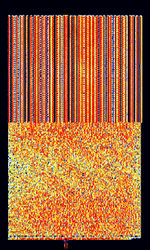 |
|
| Hyundai Mobis RKE-4F16 Key Fob | Hyundai Mobis RKE-4F16 Wireless Key Fob for Hyundai Sonata models 2014-Present. | 433.92 MHzMegaHertz (MHz) 10^6 Hz | WFMWideband Frequency Modulation | FSKFrequency-Shift Keying | 110 kHzKiloHertz (kHz) 10^3 Hz | Worldwide | 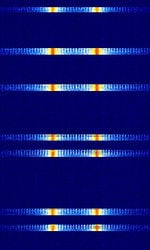 |
|
| ICARUS (International Cooperation for Animal Research Using Space) | ICARUS aims its services primarily at scientific groups that perform basic and application-oriented research with migrating animals. | 468.1 MHzMegaHertz (MHz) 10^6 Hz | NFMNarrowband Frequency Modulation | PSKPhase-Shift Keying | 32 kHzKiloHertz (kHz) 10^3 Hz | Worldwide | 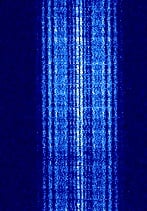 |
|
| IRA-ARQ | IRA-ARQAutomatic Repeat reQuestAutomatic Repeat Query, also known as BULG-ASCII and ASCII-ARQAutomatic Repeat reQuestAutomatic Repeat Query, is a high data rate ARQAutomatic Repeat reQuestAutomatic Repeat Query FSKFrequency-Shift Keying system used by Bulgarian, Slovakian, and Czech diplomatic stations. The maximum speed of this mode has been seen to reach 1200 bdBaud (unit symbol Bd) is the unit for symbol rate or modulation rate in symbols per second.. Not seen much much nowadays | 3 MHzMegaHertz (MHz) 10^6 Hz — 30 MHzMegaHertz (MHz) 10^6 Hz | USBUpper Side Band Modulation (Radio, referring to reception and modulation mode)Universal Serial Bus (Computer, referring to USB Ports and cables) | FSKFrequency-Shift Keying | 650 HzHertz (Hz), unit of frequency, defined as one cycle per second (1 Hz). — 1.35 kHzKiloHertz (kHz) 10^3 Hz | Worldwide | 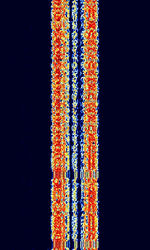 |
|
| IS-54 D-AMPS | D-AMPS, also known as IS-54 and IS-136, is a second generation (2G) mobile phone system standard which develops on analog AMPS, a 1G standard. This system is also colloquially known as TDMATime Division Multiple Access. | 824 MHzMegaHertz (MHz) 10^6 Hz — 894 MHzMegaHertz (MHz) 10^6 Hz | NFMNarrowband Frequency Modulation | PSKPhase-Shift Keying | 30 kHzKiloHertz (kHz) 10^3 Hz | 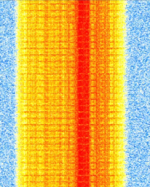 |
||
| ISCAT | Ionospheric Scattering (ISCAT) mode used for weak signal long distance radio contact by meteor and Ionosphere scattering. | 50 MHzMegaHertz (MHz) 10^6 Hz — 148 MHzMegaHertz (MHz) 10^6 Hz | USBUpper Side Band Modulation (Radio, referring to reception and modulation mode)Universal Serial Bus (Computer, referring to USB Ports and cables) | MFSKMultiple Frequency Shift-Keying | 904 HzHertz (Hz), unit of frequency, defined as one cycle per second (1 Hz). — 1.809 kHzKiloHertz (kHz) 10^3 Hz | Worldwide | 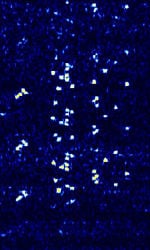 |
|
| ISM Band Weather sensor | Data returned from a consumer weather sensor using the AlectoV1 protocol. | 433 MHzMegaHertz (MHz) 10^6 Hz | AMAmplitude Modulation | 4.4 kHzKiloHertz (kHz) 10^3 Hz | Worldwide | 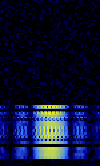 |
||
| ISM Band device | An ISM band device such as a power meter or a wireless doorbell. | 315 MHzMegaHertz (MHz) 10^6 Hz — 920 MHzMegaHertz (MHz) 10^6 Hz | AMAmplitude Modulation, NFMNarrowband Frequency Modulation | ASKAmplitude-Shift Keying, OOKOn-Off Keying Modulation, FSKFrequency-Shift Keying | 20 kHzKiloHertz (kHz) 10^3 Hz | Worldwide | 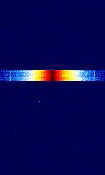 |
|
| Improved Automatic Link Set-up (ALIS-2) | ALIS-2, also known as RS-ARQAutomatic Repeat reQuestAutomatic Repeat Query, RS ARQAutomatic Repeat reQuestAutomatic Repeat Query 240, and MERLIN, is an improvement of the original ALIS system. ALIS-2 is used in the Rohde & Schwarz MERLIN modem. | 3 MHzMegaHertz (MHz) 10^6 Hz — 30 MHzMegaHertz (MHz) 10^6 Hz | USBUpper Side Band Modulation (Radio, referring to reception and modulation mode)Universal Serial Bus (Computer, referring to USB Ports and cables) | FSKFrequency-Shift Keying | 2 kHzKiloHertz (kHz) 10^3 Hz | Worldwide | 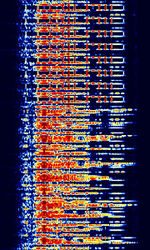 |
|
| Inmarsat IsatM2M | IsatM2M Service operated by Inmarsat on existing Inmarsat-D/D+ infrastructure. | 1,525 MHzMegaHertz (MHz) 10^6 Hz — 1,559 MHzMegaHertz (MHz) 10^6 Hz | USBUpper Side Band Modulation (Radio, referring to reception and modulation mode)Universal Serial Bus (Computer, referring to USB Ports and cables) | MFSKMultiple Frequency Shift-Keying | 1.024 kHzKiloHertz (kHz) 10^3 Hz | Worldwide | 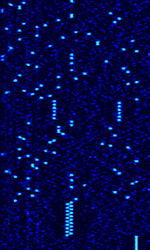 |
|
| Inmarsat-D(D+) Downlink | Inmarsat D+ (and it's predecessor, Inmarsat D) was Inmarsat's satellite paging system. The main use of the technology was in tracking trucks and buoys and SCADA applications. | 1,525 MHzMegaHertz (MHz) 10^6 Hz — 1,559 MHzMegaHertz (MHz) 10^6 Hz | USBUpper Side Band Modulation (Radio, referring to reception and modulation mode)Universal Serial Bus (Computer, referring to USB Ports and cables) | MFSKMultiple Frequency Shift-Keying | 640 HzHertz (Hz), unit of frequency, defined as one cycle per second (1 Hz). | Worldwide | 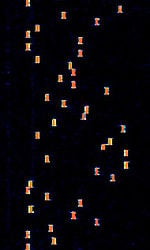 |
|
| Integrated Digital Enhanced Network (iDEN) | iDEN is a TDMATime Division Multiple Access-based digital wireless standard developed by Motorola. It is a type of trunked radio with cellular phone benefits. | 806 MHzMegaHertz (MHz) 10^6 Hz — 869 MHzMegaHertz (MHz) 10^6 Hz | NFMNarrowband Frequency Modulation | QAMQuadrature Amplitude Modulation, TDMATime Division Multiple Access | 18.5 kHzKiloHertz (kHz) 10^3 Hz | Worldwide | 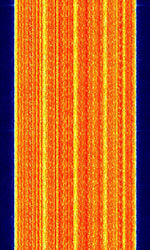 |
|
| Interoperable Electronic Train Management System (I-ETMS) | Transmits train telemetry | 219 MHzMegaHertz (MHz) 10^6 Hz — 222 MHzMegaHertz (MHz) 10^6 Hz | NFMNarrowband Frequency Modulation | GMSKGaussian Minimum-Shift Keying | 2 kHzKiloHertz (kHz) 10^3 Hz | US | 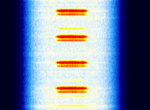 |
|
| Iranian Navy QPSK Modem | Iranian Navy QPSKQuadrature Phase-Shift Keying (2 bits per symbol) Modem is a QPSKQuadrature Phase-Shift Keying (2 bits per symbol) mode used by the Iranian Navy. It has gone through several versions. The current version (2015) is V2 and supports speeds of 468 BdBaud (unit symbol Bd) is the unit for symbol rate or modulation rate in symbols per second., 936 BdBaud (unit symbol Bd) is the unit for symbol rate or modulation rate in symbols per second., and 1872 BdBaud (unit symbol Bd) is the unit for symbol rate or modulation rate in symbols per second.. | 8.046 MHzMegaHertz (MHz) 10^6 Hz — 17.382 MHzMegaHertz (MHz) 10^6 Hz | USBUpper Side Band Modulation (Radio, referring to reception and modulation mode)Universal Serial Bus (Computer, referring to USB Ports and cables) | PSKPhase-Shift Keying | 300 HzHertz (Hz), unit of frequency, defined as one cycle per second (1 Hz). — 2.85 kHzKiloHertz (kHz) 10^3 Hz | Iran | 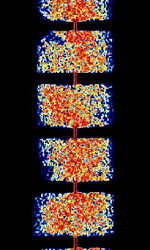 |
|
| Iridium | This is the L-band uplink/downlink for the Low Earth Orbit Iridium Satellite Constellation. This system is used for satellite based phone calls. | 1,616 MHzMegaHertz (MHz) 10^6 Hz — 1,626.5 MHzMegaHertz (MHz) 10^6 Hz | RAW | PSKPhase-Shift Keying | 31.5 kHzKiloHertz (kHz) 10^3 Hz | Worldwide | 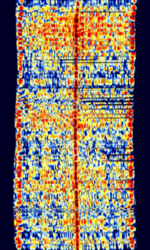 |
|
| IsatData Pro | Inmarsat's M2M data service for SCADA asset tracking and reporting. | 1,525 MHzMegaHertz (MHz) 10^6 Hz — 1,559 MHzMegaHertz (MHz) 10^6 Hz | OQPSK | Worldwide | — |  |
||
| Israeli Intelligence VFT | Israeli Intelligence based FSKFrequency-Shift Keying VFTVoice Frequency Telegraphy. | 3 MHzMegaHertz (MHz) 10^6 Hz — 30 MHzMegaHertz (MHz) 10^6 Hz | USBUpper Side Band Modulation (Radio, referring to reception and modulation mode)Universal Serial Bus (Computer, referring to USB Ports and cables) | FSKFrequency-Shift Keying | 3.1 kHzKiloHertz (kHz) 10^3 Hz | Israel | 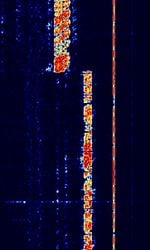 |
|
| Israeli Navy Hybrid Modem (188-110 MOD) | The Israeli Naval Hybrid Modem is based on the MIL-STD-188-110 Serial Standard. Has characteristic preamble with 4/6 Tone and 18 QPSKQuadrature Phase-Shift Keying (2 bits per symbol) parallel mode before 110 Serial transmission. Possible use as a broadcast transmitter for ships. Used by the Israeli Navy 4XZ station from Haifa. | 3 MHzMegaHertz (MHz) 10^6 Hz — 30 MHzMegaHertz (MHz) 10^6 Hz | USBUpper Side Band Modulation (Radio, referring to reception and modulation mode)Universal Serial Bus (Computer, referring to USB Ports and cables) | PSKPhase-Shift Keying | 2.75 kHzKiloHertz (kHz) 10^3 Hz | Israel | 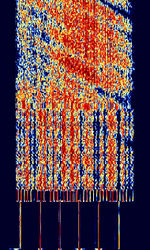 |
|
| Israeli VFT | Israeli based VFTVoice Frequency Telegraphy transmission, most likely used by Israeli government or military. | 3 MHzMegaHertz (MHz) 10^6 Hz — 30 MHzMegaHertz (MHz) 10^6 Hz | USBUpper Side Band Modulation (Radio, referring to reception and modulation mode)Universal Serial Bus (Computer, referring to USB Ports and cables) | FSKFrequency-Shift Keying, PSKPhase-Shift Keying | 3.1 kHzKiloHertz (kHz) 10^3 Hz | Israel | 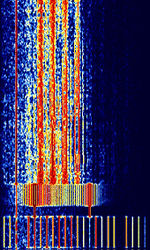 |
|
| JS8 | JS8Call is an extremely-weak-signal amateur radio communication mode based on FT8. It allows FT8 to be used for conversations and message relaying. | 1.842 MHzMegaHertz (MHz) 10^6 Hz — 50.318 MHzMegaHertz (MHz) 10^6 Hz | USBUpper Side Band Modulation (Radio, referring to reception and modulation mode)Universal Serial Bus (Computer, referring to USB Ports and cables) | GFSKGaussian Frequency-Shift Keying | 50 HzHertz (Hz), unit of frequency, defined as one cycle per second (1 Hz). | Worldwide | 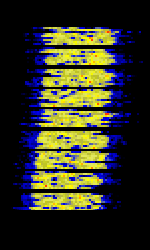 |
|
| JT4 | JT4 is a 4-FSKFrequency-Shift Keying extreme weak-signal mode which is designed especially for Earth-Moon-Earth communications. It is part of the WSJT-X software. | USBUpper Side Band Modulation (Radio, referring to reception and modulation mode)Universal Serial Bus (Computer, referring to USB Ports and cables) | MFSKMultiple Frequency Shift-Keying | 17 HzHertz (Hz), unit of frequency, defined as one cycle per second (1 Hz). — 949 HzHertz (Hz), unit of frequency, defined as one cycle per second (1 Hz). | Worldwide | 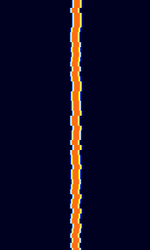 |
||
| JT65 | JT65 is an amateur radio QSO communication protocol developed by Joe Taylor, K1JT. JT65 has 3 submodes: JT65A, JT65B, and JT65C. The most popular submode of JT65 is JT65A. JT65 gets '65' from the 65 tones it uses. | 1.838 MHzMegaHertz (MHz) 10^6 Hz — 50.276 MHzMegaHertz (MHz) 10^6 Hz | USBUpper Side Band Modulation (Radio, referring to reception and modulation mode)Universal Serial Bus (Computer, referring to USB Ports and cables) | MFSKMultiple Frequency Shift-Keying | 180 HzHertz (Hz), unit of frequency, defined as one cycle per second (1 Hz). — 710 HzHertz (Hz), unit of frequency, defined as one cycle per second (1 Hz). | Worldwide | 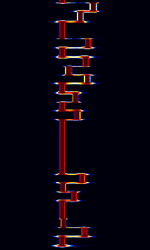 |
|
| JT6M | JT6M is part of the WSJT suite of digital weak signal software applications developed by Joe Taylor, K1JT | 50.215 MHzMegaHertz (MHz) 10^6 Hz — 50.25 MHzMegaHertz (MHz) 10^6 Hz | USBUpper Side Band Modulation (Radio, referring to reception and modulation mode)Universal Serial Bus (Computer, referring to USB Ports and cables) | MFSKMultiple Frequency Shift-Keying | 1 kHzKiloHertz (kHz) 10^3 Hz | Worldwide | 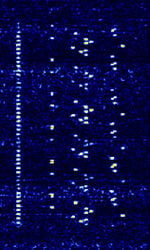 |
|
| JT9 | JT9 is a 9-FSKFrequency-Shift Keying mode for making contact (QSO's) under extreme weak-signal conditions. It is part of the WSJT-X software. | 3.578 MHzMegaHertz (MHz) 10^6 Hz — 28.079 MHzMegaHertz (MHz) 10^6 Hz | USBUpper Side Band Modulation (Radio, referring to reception and modulation mode)Universal Serial Bus (Computer, referring to USB Ports and cables) | MFSKMultiple Frequency Shift-Keying | 16 HzHertz (Hz), unit of frequency, defined as one cycle per second (1 Hz). — 1.78 kHzKiloHertz (kHz) 10^3 Hz | Worldwide | 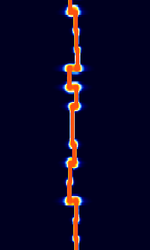 |
|
| JTMS | JTMS is a meteor scatter mode that uses MSKMinimum-Shift Keying (When Shift/Bd = 0.5. It is impossible to get this ratio to be lower than 0.5, hence it is called the 'Minimum' shift.). JTMS behaves similarily to FSK441. | 3 MHzMegaHertz (MHz) 10^6 Hz — 30 MHzMegaHertz (MHz) 10^6 Hz | USBUpper Side Band Modulation (Radio, referring to reception and modulation mode)Universal Serial Bus (Computer, referring to USB Ports and cables) | MSKMinimum-Shift Keying (When Shift/Bd = 0.5. It is impossible to get this ratio to be lower than 0.5, hence it is called the 'Minimum' shift.) | 1.7 kHzKiloHertz (kHz) 10^3 Hz | Worldwide | 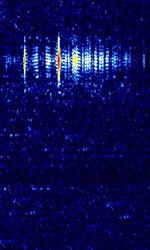 |
|
| Japan Military 8-Channel FSK | Data signal thought to originate from Japanese Military/Navy | 4.295 MHzMegaHertz (MHz) 10^6 Hz — 16.554 MHzMegaHertz (MHz) 10^6 Hz | USBUpper Side Band Modulation (Radio, referring to reception and modulation mode)Universal Serial Bus (Computer, referring to USB Ports and cables) | FSKFrequency-Shift Keying | 2.4 kHzKiloHertz (kHz) 10^3 Hz | Japan | 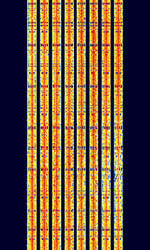 |
|
| Japanese Slot Machine (XSL) | The Japanese Slot Machine (Enigma Designation XSL) is a simplex system used by the Japanese Maritime Self-Defense Force in Ichihara, Japan. | 4.153 MHzMegaHertz (MHz) 10^6 Hz — 8.703 MHzMegaHertz (MHz) 10^6 Hz | USBUpper Side Band Modulation (Radio, referring to reception and modulation mode)Universal Serial Bus (Computer, referring to USB Ports and cables) | PSKPhase-Shift Keying | 2 kHzKiloHertz (kHz) 10^3 Hz | Japan | 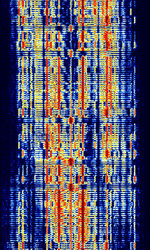 |
|
| John Deere RTK Radio 450 | Real-time Kinematic GPS is a satellite navigation technique used to enhance the precision of position data derived from satellite-based positioning systems (global navigation satellite systems, GNSS) such as GPS, BeiDou, GLONASS, Galileo and NavIC. | 435 MHzMegaHertz (MHz) 10^6 Hz — 470 MHzMegaHertz (MHz) 10^6 Hz | FMFrequency Modulation | FSKFrequency-Shift Keying | 7.49 kHzKiloHertz (kHz) 10^3 Hz | Worldwide | 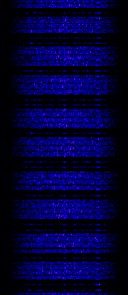 |
|
| KG-STV | KG-STV is an image transmission mode developed by JJ0OBZ in Japan. | 3.733 MHzMegaHertz (MHz) 10^6 Hz — 10,489.625 MHzMegaHertz (MHz) 10^6 Hz | USBUpper Side Band Modulation (Radio, referring to reception and modulation mode)Universal Serial Bus (Computer, referring to USB Ports and cables) | 4FSK4-Level Frequency Shift Keying, MSKMinimum-Shift Keying (When Shift/Bd = 0.5. It is impossible to get this ratio to be lower than 0.5, hence it is called the 'Minimum' shift.) | 500 HzHertz (Hz), unit of frequency, defined as one cycle per second (1 Hz). — 2.5 kHzKiloHertz (kHz) 10^3 Hz | Worldwide | 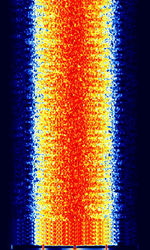 |
|
| Kenwood FleetSync | FleetSync is a manufacturer specific signaling standard which includes a number of features: unit ID, status, emergency button, inhibit, status check, GPS, and selective calling. | 150 MHzMegaHertz (MHz) 10^6 Hz — 850 MHzMegaHertz (MHz) 10^6 Hz | FSKFrequency-Shift Keying | 25 kHzKiloHertz (kHz) 10^3 Hz | Worldwide | — | 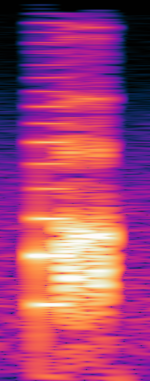 |
|
| Kiwi | Kiwi is a telemetry mode developed by CNES used on amateur rockets and radio balloons in France. | 137.95 MHzMegaHertz (MHz) 10^6 Hz — 138.5 MHzMegaHertz (MHz) 10^6 Hz | NFMNarrowband Frequency Modulation | FSKFrequency-Shift Keying | 12.5 kHzKiloHertz (kHz) 10^3 Hz | France | 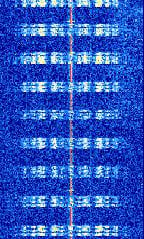 |
|
| LEOSAR Downlink | Cospas-Sarsat downlink from polar-orbiting weather satellites. The International Cospas-Sarsat Programme is a satellite-aided search and rescue initiative. | 1,544.5 MHzMegaHertz (MHz) 10^6 Hz | NFMNarrowband Frequency Modulation | PSKPhase-Shift Keying | 350 kHzKiloHertz (kHz) 10^3 Hz | Worldwide | 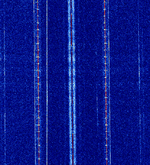 |
|
| LTE Uplink | Acquired via telecommunications carrier hardware during interference investigation of an Australian cellular network. | 700 MHzMegaHertz (MHz) 10^6 Hz — 2,600 MHzMegaHertz (MHz) 10^6 Hz | SC-FDMAFrequency Division Multiple Access | QPSKQuadrature Phase-Shift Keying (2 bits per symbol) | 5 MHzMegaHertz (MHz) 10^6 Hz | Worldwide | 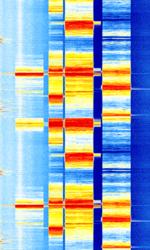 |
|
| LTE420 MCX | Band 88 FDD | 423.7 MHzMegaHertz (MHz) 10^6 Hz | AMAmplitude Modulation | 16-QAMQuadrature Amplitude Modulation, OFDMOrthogonal Frequency-Division Multiplexing | 1.08 MHzMegaHertz (MHz) 10^6 Hz | Poland | 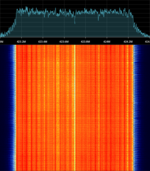 |
|
| Land Rover Discovery 4 Car Key | 2FSK transmission mode 20828 baudBaud (unit symbol Bd) is the unit for symbol rate or modulation rate in symbols per second., Information is transmitted by the code "Manchester", respectively, the data transfer rate is twice lower (7785.63 baudBaud (unit symbol Bd) is the unit for symbol rate or modulation rate in symbols per second.). | 433.93 MHzMegaHertz (MHz) 10^6 Hz | NFMNarrowband Frequency Modulation | 2FSK | 950 kHzKiloHertz (kHz) 10^3 Hz | Worldwide |  |
|
| Lentus | Lentus is an extremely slow QRPIn amateur radio, QRP operation refers to transmitting at reduced power while attempting to maximize one's effective range. mode developed by Patrick Lindecker F6CTE used to transmit QRPIn amateur radio, QRP operation refers to transmitting at reduced power while attempting to maximize one's effective range.'s at very low power. Each 43-character (75 bit) transmission takes roughly 5 minutes to transmit across 32 possible tones in a tight 25 HzHertz (Hz), unit of frequency, defined as one cycle per second (1 Hz). bandwidth. | 136.3 kHzKiloHertz (kHz) 10^3 Hz — 14.096 MHzMegaHertz (MHz) 10^6 Hz | USBUpper Side Band Modulation (Radio, referring to reception and modulation mode)Universal Serial Bus (Computer, referring to USB Ports and cables) | MFSKMultiple Frequency Shift-Keying | 25 HzHertz (Hz), unit of frequency, defined as one cycle per second (1 Hz). | Worldwide | 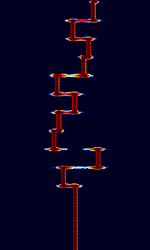 |
|
| Link-11 | Link-11 (Also known as ALLIGATOR, STANAGNATO Standardization Agreement (STANAG), defines processes, procedures, terms, and conditions for common military or technical procedures or equipment between the member countries of the North Atlantic Treaty Organization (NATO). 5511, TADIL-A, MIL-STD-6011, and MIL-STD-188-203-1A) is a Tactical Data Link standard (formerly known as Tactical Digital Information Link (TADIL) used by NATONorth Atlantic Treaty Organization and the US Military for Maritime Tactical Data Exchange. | 2 MHzMegaHertz (MHz) 10^6 Hz — 30 MHzMegaHertz (MHz) 10^6 Hz | USBUpper Side Band Modulation (Radio, referring to reception and modulation mode)Universal Serial Bus (Computer, referring to USB Ports and cables) | PSKPhase-Shift Keying | 2.5 kHzKiloHertz (kHz) 10^3 Hz — 6 kHzKiloHertz (kHz) 10^3 Hz | Worldwide | 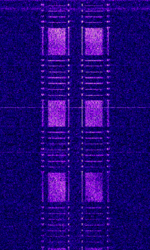 |
|
| Link-11 (UHF) | This is the UHFUltra High Frequency (300-3000 MHz) band variant of Link-11, which is transmitted on a FMFrequency Modulation carrier. The FMFrequency Modulation-demodulated baseband is identical to the HFHigh Frequency (3-30 MHz) Link-11 waveform. | 225 MHzMegaHertz (MHz) 10^6 Hz — 399.975 MHzMegaHertz (MHz) 10^6 Hz | NFMNarrowband Frequency Modulation | PSKPhase-Shift Keying | 30 kHzKiloHertz (kHz) 10^3 Hz | Worldwide | 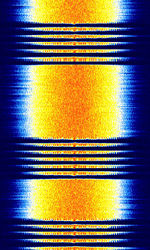 |
|
| LoRa | LoRa (Long Range) is a proprietary low-power wide-area network modulation technique. | 433 MHzMegaHertz (MHz) 10^6 Hz — 915 MHzMegaHertz (MHz) 10^6 Hz | FMFrequency Modulation | CSS | 250 kHzKiloHertz (kHz) 10^3 Hz | Worldwide | 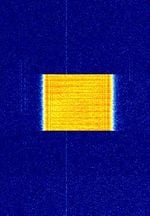 |
|
| Lockheed Martin LMS-6 (Radiosonde) | The LMS-6 is a radiosonde developed by Lockheed Martin which contains a temperature, barometric pressure (On the 1680 MHzMegaHertz (MHz) 10^6 Hz models only), and humidity sensor for upper air weather observations. | 400 MHzMegaHertz (MHz) 10^6 Hz — 1,682 MHzMegaHertz (MHz) 10^6 Hz | NFMNarrowband Frequency Modulation | GFSKGaussian Frequency-Shift Keying | 10 kHzKiloHertz (kHz) 10^3 Hz | Worldwide | 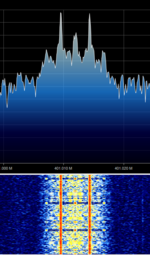 |
|
| Logic Trunked Radio (LTR) | Logic Trunked Radio, is an analog trunked radio format developed by EF Johnson Company. | 150 MHzMegaHertz (MHz) 10^6 Hz — 470 MHzMegaHertz (MHz) 10^6 Hz | NFMNarrowband Frequency Modulation | FSKFrequency-Shift Keying | 12.5 kHzKiloHertz (kHz) 10^3 Hz — 25 kHzKiloHertz (kHz) 10^3 Hz | 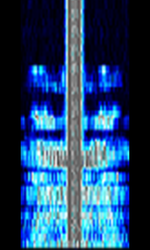 |
||
| Logitech(R) Wireless Mouse+Keyboard Signal | This signal comes from Logitech(R) Brand wireless mouse and keyboard combo unit. | 2,400 MHzMegaHertz (MHz) 10^6 Hz | RAW | PPMPulse Position Modulation, GFSKGaussian Frequency-Shift Keying | 500 kHzKiloHertz (kHz) 10^3 Hz | Worldwide | — | 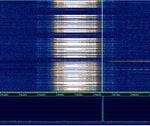 |
| Low Rate Picture Transmission (LRPT) | The Low Rate Picture Transmission (LRPT) is a digital transmission system, commonly transmitted by METEOR-M satellites, used to deliver weather images and data. | 137 MHzMegaHertz (MHz) 10^6 Hz — 138 MHzMegaHertz (MHz) 10^6 Hz | RAW | QPSKQuadrature Phase-Shift Keying (2 bits per symbol) | 120 kHzKiloHertz (kHz) 10^3 Hz | Worldwide | — | 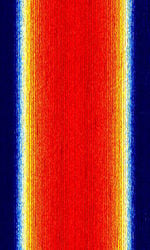 |
| M17 RF Protocol | An open source digital mode developed for amateur and other radio applications. | 30 MHzMegaHertz (MHz) 10^6 Hz — 10,500 MHzMegaHertz (MHz) 10^6 Hz | NFMNarrowband Frequency Modulation | 4FSK4-Level Frequency Shift Keying | 9 kHzKiloHertz (kHz) 10^3 Hz | Worldwide |  |
|
| M20 Radiosonde | Telemetry signal transmitted by M20 radiosondes | 400.15 MHzMegaHertz (MHz) 10^6 Hz — 406 MHzMegaHertz (MHz) 10^6 Hz | NFMNarrowband Frequency Modulation | FSKFrequency-Shift Keying | 30 kHzKiloHertz (kHz) 10^3 Hz | Worldwide | 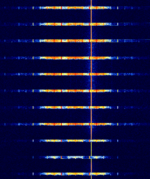 |
|
| MD-522 | MD-522 (Also known as MIL-M-55529A) is a synchronous FSKFrequency-Shift Keying mode built into GRC-MD522 teletypewriter sets and used for wirelessly transmitting ASCII information. MD-522 has a narrowband, wideband, and diversity mode. | 3 MHzMegaHertz (MHz) 10^6 Hz — 30 MHzMegaHertz (MHz) 10^6 Hz | USBUpper Side Band Modulation (Radio, referring to reception and modulation mode)Universal Serial Bus (Computer, referring to USB Ports and cables) | FSKFrequency-Shift Keying | 200 HzHertz (Hz), unit of frequency, defined as one cycle per second (1 Hz). — 300 HzHertz (Hz), unit of frequency, defined as one cycle per second (1 Hz). | United States | 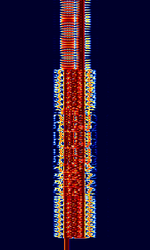 |
|
| MD-674 | MD-674, also known as Wireline FSKFrequency-Shift Keying, is a very old United States Military FSKFrequency-Shift Keying Modem from the 1960's. Uses 85 HzHertz (Hz), unit of frequency, defined as one cycle per second (1 Hz). FSKFrequency-Shift Keying shift. Speeds of 50 BdBaud (unit symbol Bd) is the unit for symbol rate or modulation rate in symbols per second., 75 BdBaud (unit symbol Bd) is the unit for symbol rate or modulation rate in symbols per second., 100 BdBaud (unit symbol Bd) is the unit for symbol rate or modulation rate in symbols per second., and 150 BdBaud (unit symbol Bd) is the unit for symbol rate or modulation rate in symbols per second. have been logged. No longer seen today. | 3 MHzMegaHertz (MHz) 10^6 Hz — 30 MHzMegaHertz (MHz) 10^6 Hz | USBUpper Side Band Modulation (Radio, referring to reception and modulation mode)Universal Serial Bus (Computer, referring to USB Ports and cables) | FSKFrequency-Shift Keying | 200 HzHertz (Hz), unit of frequency, defined as one cycle per second (1 Hz). — 300 HzHertz (Hz), unit of frequency, defined as one cycle per second (1 Hz). | United States |  |
|
| MDC-4800 | Motorola's MDC-4800 is a data protocol that was used in ARDIS and DataTAC Networks as well as in MDTMobile Data Terminal, A mobile data terminal (MDT) is a computerized device used in public transit vehicles, taxicabs, commercial trucking fleets, military logistics, and emergency vehicles, such as police cars, to communicate with a central dispatch office. networks. RD-LAP was derived from this mode. Also known as Motorola Mobile Data Communications System (MODACOM) | 150 MHzMegaHertz (MHz) 10^6 Hz — 850 MHzMegaHertz (MHz) 10^6 Hz | NFMNarrowband Frequency Modulation | GFSKGaussian Frequency-Shift Keying | 12.5 kHzKiloHertz (kHz) 10^3 Hz | Worldwide |  |
|
| MDC1200 | MDC (Motorola Data Communications), also known as Stat-Alert, MDC-1200 and MDC-600, is a Motorola two-way radio low-speed data system. | 30 MHzMegaHertz (MHz) 10^6 Hz — 960 MHzMegaHertz (MHz) 10^6 Hz | FMFrequency Modulation | AFSKAudio Frequency-Shift Keying | 12.5 kHzKiloHertz (kHz) 10^3 Hz — 20 kHzKiloHertz (kHz) 10^3 Hz | Worldwide | 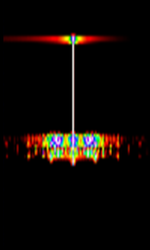 |
|
| METEOR-M High Resolution Picture Transmission (HRPT) | A variant of the NOAA HRPT signal, which has a different data structure and better low-signal handling characteristics. | 1,700 MHzMegaHertz (MHz) 10^6 Hz | RAW | PSKPhase-Shift Keying | 3 MHzMegaHertz (MHz) 10^6 Hz | Worldwide | — |  |
| METOP Advanced High Resolution Picture Transmission (AHRPT) | A high-speed digital link used by METOP weather satellites for direct data dissemination. | 1,701.3 MHzMegaHertz (MHz) 10^6 Hz — 1,707 MHzMegaHertz (MHz) 10^6 Hz | RAW | QPSKQuadrature Phase-Shift Keying (2 bits per symbol) | 6 MHzMegaHertz (MHz) 10^6 Hz | Worldwide | — |  |
| MIL-STD-110-342 | MIL-STD-110-342 was a US Dept. of Defense standard for a 16 channel VFTVoice Frequency Telegraphy teletype transmission. This mode was officially cancelled as of December 5th, 1995. | 3 MHzMegaHertz (MHz) 10^6 Hz — 30 MHzMegaHertz (MHz) 10^6 Hz | USBUpper Side Band Modulation (Radio, referring to reception and modulation mode)Universal Serial Bus (Computer, referring to USB Ports and cables) | FSKFrequency-Shift Keying | 3.1 kHzKiloHertz (kHz) 10^3 Hz | Worldwide | 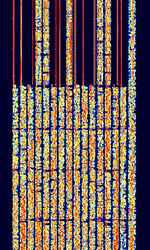 |
|
| MIL-STD-188-110 Appendix A 16-Tone | MIL-STD-188-110 Appendix A is a 16-tone OFDMOrthogonal Frequency-Division Multiplexing PSKPhase-Shift Keying signal used to transmit data. As of 110C revision, this mode is being phased out. | 3 MHzMegaHertz (MHz) 10^6 Hz — 30 MHzMegaHertz (MHz) 10^6 Hz | USBUpper Side Band Modulation (Radio, referring to reception and modulation mode)Universal Serial Bus (Computer, referring to USB Ports and cables) | PSKPhase-Shift Keying, OFDMOrthogonal Frequency-Division Multiplexing | 2.1 kHzKiloHertz (kHz) 10^3 Hz | Worldwide | 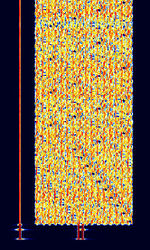 |
|
| MIL-STD-188-110 Appendix B 39-Tone | MIL-STD-188-110 Appendix B is a 39-tone OFDMOrthogonal Frequency-Division Multiplexing DQPSKDifferential Quadrature Phase-Shift Keying mode used to send data and voice. | 3 MHzMegaHertz (MHz) 10^6 Hz — 30 MHzMegaHertz (MHz) 10^6 Hz | USBUpper Side Band Modulation (Radio, referring to reception and modulation mode)Universal Serial Bus (Computer, referring to USB Ports and cables) | PSKPhase-Shift Keying, OFDMOrthogonal Frequency-Division Multiplexing | 2.4 kHzKiloHertz (kHz) 10^3 Hz | Worldwide | 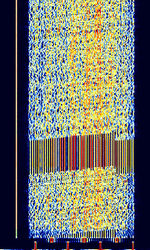 |
|
| MIL-STD-188-110 Serial | MIL-STD-188-110 Serial is a US Department of Defense standard for HFHigh Frequency (3-30 MHz) Communications, Serial PSKPhase-Shift Keying mode. Can transmit both data and voice with a range of interleaving and speed modes for optimal propagation. | 3 MHzMegaHertz (MHz) 10^6 Hz — 30 MHzMegaHertz (MHz) 10^6 Hz | USBUpper Side Band Modulation (Radio, referring to reception and modulation mode)Universal Serial Bus (Computer, referring to USB Ports and cables) | PSKPhase-Shift Keying | 2.75 kHzKiloHertz (kHz) 10^3 Hz | Worldwide | 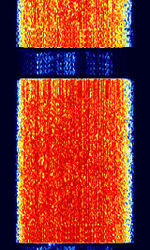 |
|
| MMP-4800 | MMP-4800 was a MDTMobile Data Terminal, A mobile data terminal (MDT) is a computerized device used in public transit vehicles, taxicabs, commercial trucking fleets, military logistics, and emergency vehicles, such as police cars, to communicate with a central dispatch office. (Mobile Data Terminal) protocol developed by Canadian company Mobile Data International (MDI) in 1982 for their Mobile Data Terminals. Used by public safety and commercial industries. Phased out. | 150 MHzMegaHertz (MHz) 10^6 Hz — 900 MHzMegaHertz (MHz) 10^6 Hz | NFMNarrowband Frequency Modulation | 12.5 kHzKiloHertz (kHz) 10^3 Hz — 25 kHzKiloHertz (kHz) 10^3 Hz | Worldwide | 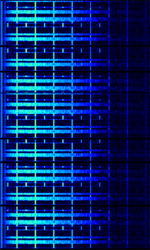 |
||
| MOBITEX | MOBITEX is an OSI based open standard, national public access wireless packet-switched data network. | 400 MHzMegaHertz (MHz) 10^6 Hz — 900 MHzMegaHertz (MHz) 10^6 Hz | NFMNarrowband Frequency Modulation | GMSKGaussian Minimum-Shift Keying, FFSKFast Frequency-Shift Keying | 15 kHzKiloHertz (kHz) 10^3 Hz | Worldwide | 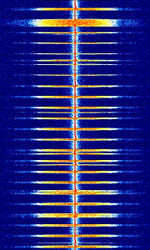 |
|
| MPDA | Experimental Multi‑Parallel Differential Amplitude Shift Keying (MP‑DASK) narrowband data mode for HFHigh Frequency (3-30 MHz)/VHFVery High Frequency (30-300 MHz) amateur radio text communication, created by amateur radio operator 6L5TNG in the Republic of Korea. | 1.8 MHzMegaHertz (MHz) 10^6 Hz — 53 MHzMegaHertz (MHz) 10^6 Hz | USBUpper Side Band Modulation (Radio, referring to reception and modulation mode)Universal Serial Bus (Computer, referring to USB Ports and cables) | MP‑DASK | 500 HzHertz (Hz), unit of frequency, defined as one cycle per second (1 Hz). — 2 kHzKiloHertz (kHz) 10^3 Hz | Worldwide | 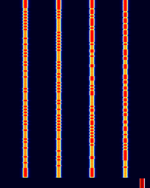 |
|
| MPT 1327 | MPT1327 (Ministry of Posts and Telegraph 1327) is a signaling protocol standard for analog trunked radio | 162.5 MHzMegaHertz (MHz) 10^6 Hz — 800 MHzMegaHertz (MHz) 10^6 Hz | NFMNarrowband Frequency Modulation | FFSKFast Frequency-Shift Keying, FMFrequency Modulation | 10 kHzKiloHertz (kHz) 10^3 Hz — 25 kHzKiloHertz (kHz) 10^3 Hz | Worldwide | 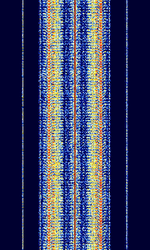 |
|
| MRZ-3MK Weather Balloon (radiosonde) | MRZ-3MK is a Russian weather radiosonde. | 1,680 MHzMegaHertz (MHz) 10^6 Hz | AMAmplitude Modulation | PFM | 6 MHzMegaHertz (MHz) 10^6 Hz | Russia | — | 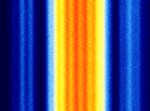 |
| MRZ-N1 Weather Balloon (radiosonde) | MRZ-N1 is a russian weather radiosonde. | 403 MHzMegaHertz (MHz) 10^6 Hz | FMFrequency Modulation | FSKFrequency-Shift Keying | 5 kHzKiloHertz (kHz) 10^3 Hz | Russia | 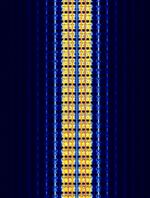 |
|
| MSK144 | MSK144 is a Minimum Shift Keying FSKFrequency-Shift Keying signal used for amateur radio meteor-scatter contacts. It transmits 144 bit long packets at a baudrate of 2000 bpsBits per second (bps) using frequencies 1000 and 2000 HzHertz (Hz), unit of frequency, defined as one cycle per second (1 Hz).. | 30 MHzMegaHertz (MHz) 10^6 Hz — 440 MHzMegaHertz (MHz) 10^6 Hz | FMFrequency Modulation | MSKMinimum-Shift Keying (When Shift/Bd = 0.5. It is impossible to get this ratio to be lower than 0.5, hence it is called the 'Minimum' shift.) | 2.5 kHzKiloHertz (kHz) 10^3 Hz | Worldwide | 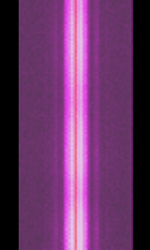 |
|
| MSM-1250 Modem | MSM-1250 (Medium Speed Modem) is a 10 FSKFrequency-Shift Keying-2 OFDMOrthogonal Frequency-Division Multiplexing digital data protocol used by the stand-alone modem "SkyFax", used to transmit and receive faxes on HFHigh Frequency (3-30 MHz). | 3 MHzMegaHertz (MHz) 10^6 Hz — 30 MHzMegaHertz (MHz) 10^6 Hz | USBUpper Side Band Modulation (Radio, referring to reception and modulation mode)Universal Serial Bus (Computer, referring to USB Ports and cables) | FSKFrequency-Shift Keying | 2.4 kHzKiloHertz (kHz) 10^3 Hz — 2.5 kHzKiloHertz (kHz) 10^3 Hz | Worldwide | 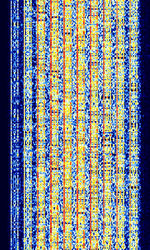 |
|
| MT63 | MT63 is a Orthogonal Frequency Division Multiplexed (OFDMOrthogonal Frequency-Division Multiplexing) digital data mode aimed for use in high noise environments. | 3 MHzMegaHertz (MHz) 10^6 Hz — 30 MHzMegaHertz (MHz) 10^6 Hz | USBUpper Side Band Modulation (Radio, referring to reception and modulation mode)Universal Serial Bus (Computer, referring to USB Ports and cables) | OFDMOrthogonal Frequency-Division Multiplexing, PSKPhase-Shift Keying | 500 HzHertz (Hz), unit of frequency, defined as one cycle per second (1 Hz). — 2 kHzKiloHertz (kHz) 10^3 Hz | Worldwide | 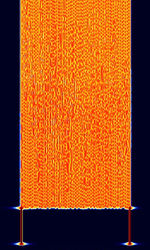 |
|
| Marconi Selenia 25-Tone Modem | The Marconi Selenia 25-Tone Modem is a military modem developed sometime around 2003 by Marconi Selenia Communications (Now Finmeccanica). It supports ECCMElectronic Counter-CounterMeasures (ECCM) is a part of electronic warfare which includes a variety of practices which attempt to reduce or eliminate the effect of electronic countermeasures (ECM) such as jamming. ECCM is also known as electronic protective measures (EPM), chiefly in Europe. capability and transmits at a datarate of 2400bps. This mode was employed by Turkey. | 3 MHzMegaHertz (MHz) 10^6 Hz — 30 MHzMegaHertz (MHz) 10^6 Hz | USBUpper Side Band Modulation (Radio, referring to reception and modulation mode)Universal Serial Bus (Computer, referring to USB Ports and cables) | PSKPhase-Shift Keying, OFDMOrthogonal Frequency-Division Multiplexing | 1.6 kHzKiloHertz (kHz) 10^3 Hz | Worldwide | 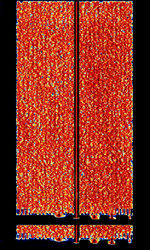 |
|
| Mazda SKE126-01 Key Fob | SKE126-01 Key Fob used for multiple Mazda models between 2006-2014. Manufactured by Mitsubishi Electric Company. | 433.413 MHzMegaHertz (MHz) 10^6 Hz | WFMWideband Frequency Modulation | FSKFrequency-Shift Keying | 100 kHzKiloHertz (kHz) 10^3 Hz | Worldwide | 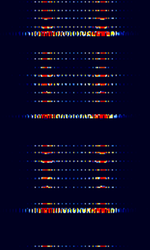 |
|
| Mazielka (X06) | Mazielka (X06) is a diplomatic selcall system used by the Russian Ministry of Foreign Affairs. Used to alert that a Serdolik transmission is going to occur soon, usually on a different frequency. | 4.963 MHzMegaHertz (MHz) 10^6 Hz — 23.458 MHzMegaHertz (MHz) 10^6 Hz | USBUpper Side Band Modulation (Radio, referring to reception and modulation mode)Universal Serial Bus (Computer, referring to USB Ports and cables) | MFSKMultiple Frequency Shift-Keying | 200 HzHertz (Hz), unit of frequency, defined as one cycle per second (1 Hz). | Russia | 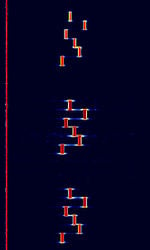 |
|
| Meteomodem M10 Weather Balloon (Radiosonde) | Weather balloon (radiosonde) telemetry data. | 400 MHzMegaHertz (MHz) 10^6 Hz — 406 MHzMegaHertz (MHz) 10^6 Hz | NFMNarrowband Frequency Modulation | PSKPhase-Shift Keying | 30 kHzKiloHertz (kHz) 10^3 Hz | Worldwide | 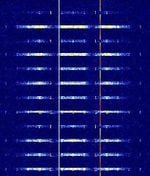 |
|
| Meteomodem PilotSonde Weather Balloon | Weather balloon telemetry data. | 400 MHzMegaHertz (MHz) 10^6 Hz — 406 MHzMegaHertz (MHz) 10^6 Hz | NFMNarrowband Frequency Modulation | FSKFrequency-Shift Keying | 15 kHzKiloHertz (kHz) 10^3 Hz | Worldwide | 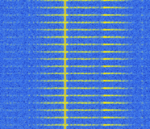 |
|
| Microsonde Mark II Weather Balloon - LORAN-C signal (Radiosonde) | Weather balloon telemetry data. The LORAN-C signal is mixed into the carrier. | 400 MHzMegaHertz (MHz) 10^6 Hz — 406 MHzMegaHertz (MHz) 10^6 Hz | WFMWideband Frequency Modulation | FSKFrequency-Shift Keying | 130 kHzKiloHertz (kHz) 10^3 Hz | Worldwide | 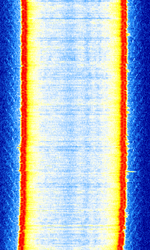 |
|
| Milstar | UHFUltra High Frequency (300-3000 MHz) FHSS Downlink of Milstar, a US joint military service satellite communications system that provides secure, jam resistant, worldwide communications. Nicknamed 'Waterdroplets' for it's characteristic waveform and sound. | 243.785 MHzMegaHertz (MHz) 10^6 Hz — 243.822 MHzMegaHertz (MHz) 10^6 Hz | RAW | FHSS | 50 kHzKiloHertz (kHz) 10^3 Hz | Worldwide |  |
|
| Modernised High Frequency Communications System (MHFCS) | The Modernised High Frequency Communications System (MHFCS) is an Australian Department of Defense HFHigh Frequency (3-30 MHz) System for their military communications network. Also known as AUS MIL ISBIndependent Side Band Modulation Modem, AUS MHFCS, and ADF HFCS. | 2.01 MHzMegaHertz (MHz) 10^6 Hz — 27.478 MHzMegaHertz (MHz) 10^6 Hz | USBUpper Side Band Modulation (Radio, referring to reception and modulation mode)Universal Serial Bus (Computer, referring to USB Ports and cables) | FSKFrequency-Shift Keying | 400 HzHertz (Hz), unit of frequency, defined as one cycle per second (1 Hz). — 750 HzHertz (Hz), unit of frequency, defined as one cycle per second (1 Hz). | Australia | 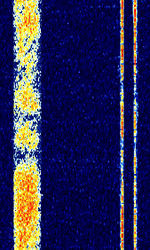 |
|
| Monaco Enterprises MAAP Fire Alarm | Fire alarm control panel built for the United States of America's Department of Defense. | 138.95 MHzMegaHertz (MHz) 10^6 Hz — 139.675 MHzMegaHertz (MHz) 10^6 Hz | FMFrequency Modulation | FSKFrequency-Shift Keying | 15 kHzKiloHertz (kHz) 10^3 Hz | United States | 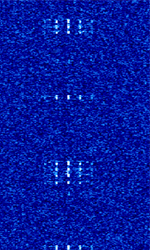 |
|
| Motorola ASTRO 25 HPD Air Interface | Motorola's ASTRO 25 High Performance Data Air Interface allows Motorola ASTRO 25 HPD modems to transfer data at up to 96 kbpsKilobits per second (kbps) over a 25 kHzKiloHertz (kHz) 10^3 Hz channel in the 700 MHzMegaHertz (MHz) 10^6 Hz or 800 MHzMegaHertz (MHz) 10^6 Hz bands. | 769 MHzMegaHertz (MHz) 10^6 Hz — 869 MHzMegaHertz (MHz) 10^6 Hz | RAW | QAMQuadrature Amplitude Modulation | 17.7 kHzKiloHertz (kHz) 10^3 Hz | United States | 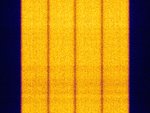 |
|
| Motorola Type II | Radio trunking control channel. | 136 MHzMegaHertz (MHz) 10^6 Hz — 941 MHzMegaHertz (MHz) 10^6 Hz | NFMNarrowband Frequency Modulation | FSKFrequency-Shift Keying | 16 kHzKiloHertz (kHz) 10^3 Hz | Worldwide | 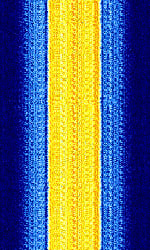 |
|
| Multi Frequency Shift Keying (MFSK) | MFSKMultiple Frequency Shift-Keying is a generic family of frequency shift keying digital transmission methods using more than the two tones of BFSK (binary FSKFrequency-Shift Keying). Many digital signals, especially on HFHigh Frequency (3-30 MHz), use MFSKMultiple Frequency Shift-Keying including WSPR, FT4 and FT8. MFSKMultiple Frequency Shift-Keying-8 and MFSKMultiple Frequency Shift-Keying-16 are two other well-known amateur radio modes. | 3 MHzMegaHertz (MHz) 10^6 Hz — 30 MHzMegaHertz (MHz) 10^6 Hz | USBUpper Side Band Modulation (Radio, referring to reception and modulation mode)Universal Serial Bus (Computer, referring to USB Ports and cables) | MFSKMultiple Frequency Shift-Keying | 154 HzHertz (Hz), unit of frequency, defined as one cycle per second (1 Hz). — 630 HzHertz (Hz), unit of frequency, defined as one cycle per second (1 Hz). | Worldwide | 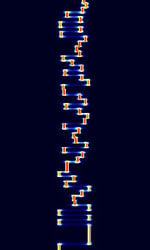 |
|
| Multitone Paging | Multitone Paging signal, developed by Multitone Electronics in the UK. Uses similar coding to POCSAG but the headers are different and only work with Multitone's range of paging products | 25 MHzMegaHertz (MHz) 10^6 Hz — 470 MHzMegaHertz (MHz) 10^6 Hz | NFMNarrowband Frequency Modulation | FFSKFast Frequency-Shift Keying | 12.5 kHzKiloHertz (kHz) 10^3 Hz — 25 kHzKiloHertz (kHz) 10^3 Hz | Worldwide | 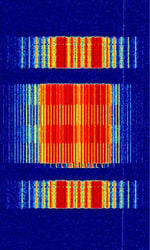 |
|
| NB-IOT | Narrowband Internet of Things (NB-IoTInternet of Things) is a Low Power Wide Area Network (LPWAN) radio technology standard developed by 3GPP to enable a wide range of cellular devices and services. | 700 MHzMegaHertz (MHz) 10^6 Hz — 1,900 MHzMegaHertz (MHz) 10^6 Hz | AMAmplitude Modulation | QPSKQuadrature Phase-Shift Keying (2 bits per symbol) | 200 kHzKiloHertz (kHz) 10^3 Hz | Worldwide |  |
|
| NML | Naval Radio Transmitter Facility (NRTF) transmits encrypted commands to submerged US submarines. | 25.2 kHzKiloHertz (kHz) 10^3 Hz | CWContinuous Wave | FSKFrequency-Shift Keying | 300 HzHertz (Hz), unit of frequency, defined as one cycle per second (1 Hz). | United States | 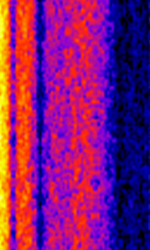 |
|
| NOAA Direct Sounder Broadcast (DSB) | The Direct Sounder Broadcast (DSBDual Side Band Modulation) is an auxiliary telemetry downlink from NOAA Polar Operational Environmental Satellites (POES), transmitted alongside Automatic Picture Transmission (APT) broadcasts. | 137.35 MHzMegaHertz (MHz) 10^6 Hz — 137.77 MHzMegaHertz (MHz) 10^6 Hz | NFMNarrowband Frequency Modulation | PSKPhase-Shift Keying | 33.5 kHzKiloHertz (kHz) 10^3 Hz | Worldwide | 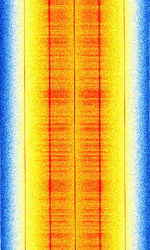 |
|
| NOAA POES High Resolution Picture Transmission (HRPT) | A digital link to transmit images and other data collected from the satellite at a high resolution. | 1,698 MHzMegaHertz (MHz) 10^6 Hz — 2,247.5 MHzMegaHertz (MHz) 10^6 Hz | RAW | PSKPhase-Shift Keying | 3 MHzMegaHertz (MHz) 10^6 Hz | Worldwide | — |  |
| NOV | TACAMO (take charge and move out) is the back up communications system to the US nuclear submarine fleet in case an attack on land based transmitters disables them. A rotating fleet of Navy E6 jets equipped with 200 KW transmitters and two 2½-mile-long trailing wire antennas (TWA) at 35,000 ft altitude to provide 24/7 coverage. Short pings are transmitted every few seconds. | 26.9 kHzKiloHertz (kHz) 10^3 Hz | CWContinuous Wave | Worldwide | 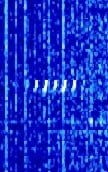 |
|||
| NPM | Naval Radio Transmitting Facility (NRTF) sends encrypted commands to submerged US naval submarines in the Pacific. | 21.4 kHzKiloHertz (kHz) 10^3 Hz | CWContinuous Wave | FSKFrequency-Shift Keying | 300 HzHertz (Hz), unit of frequency, defined as one cycle per second (1 Hz). | United States | 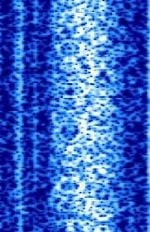 |
|
| NWC | Naval Communication Station (NCS) Harold E. Holt. Used jointly by the Australian and United States navies to transmit encrypted orders to submerged submarines in the Pacific. | 19.8 kHzKiloHertz (kHz) 10^3 Hz | CWContinuous Wave | FSKFrequency-Shift Keying | 300 HzHertz (Hz), unit of frequency, defined as one cycle per second (1 Hz). | Australia |  |
|
| Near Field Communication (NFC) | Near-field communication (NFC) is a set of communication protocols that enables communication between two electronic devices over a distance of 4 cm (11⁄2 in) or less. | 13.56 MHzMegaHertz (MHz) 10^6 Hz | ASKAmplitude-Shift Keying | 1.7 MHzMegaHertz (MHz) 10^6 Hz | Worldwide | 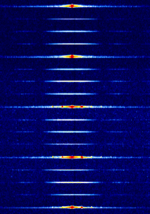 |
||
| Near Instantaneous Companded Audio Multiplex (NICAM) | NICAM is used to provide digital stereo audio alongside PAL video for television broadcasts. | 174 MHzMegaHertz (MHz) 10^6 Hz — 700 MHzMegaHertz (MHz) 10^6 Hz | RAW | PSKPhase-Shift Keying | 400 kHzKiloHertz (kHz) 10^3 Hz | Worldwide | — |  |
| Next Generation Digital Narrowband (NXDN) | NXDN is a digital narrowband trunked radio protocol used in commercial, business & industry, transport and Public Safety professional radio systems. | 136 MHzMegaHertz (MHz) 10^6 Hz — 520 MHzMegaHertz (MHz) 10^6 Hz | NFMNarrowband Frequency Modulation | 4FSK4-Level Frequency Shift Keying | 6.25 kHzKiloHertz (kHz) 10^3 Hz — 12.5 kHzKiloHertz (kHz) 10^3 Hz | Worldwide | 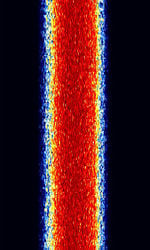 |
|
| Nissan Car Key | Wireless entry rolling code car key. | 301.5 MHzMegaHertz (MHz) 10^6 Hz — 433 MHzMegaHertz (MHz) 10^6 Hz | AMAmplitude Modulation | 40 kHzKiloHertz (kHz) 10^3 Hz | Worldwide |  |
||
| Nokia Adaptive Message Terminal | The Nokia Adaptive Message Terminal, also known as Nokia Adaptive Burst Modem and Kryapp 302, is a Finnish encrypted messaging system suggested to be used by Finnish Intelligence Services and Swedish Military. | 3 MHzMegaHertz (MHz) 10^6 Hz — 30 MHzMegaHertz (MHz) 10^6 Hz | USBUpper Side Band Modulation (Radio, referring to reception and modulation mode)Universal Serial Bus (Computer, referring to USB Ports and cables) | FSKFrequency-Shift Keying | 1 kHzKiloHertz (kHz) 10^3 Hz — 1.6 kHzKiloHertz (kHz) 10^3 Hz | Worldwide | 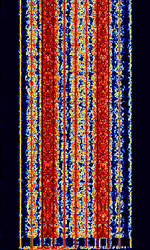 |
|
| Nordic Mobile Telephone (NMT) | Nordic Mobile Telephone (NMT, NMT-450, and NMT-900) is a first generation analog cell phone system. Originally designed for and by Nordic countries (Finland, Sweden, Norway, Denmark) it was widely deployed around the world. Nowadays (as of 2015) NMT is defunct. | 453 MHzMegaHertz (MHz) 10^6 Hz — 960 MHzMegaHertz (MHz) 10^6 Hz | NFMNarrowband Frequency Modulation | FSKFrequency-Shift Keying | 25 kHzKiloHertz (kHz) 10^3 Hz | Worldwide | 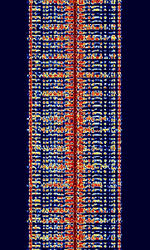 |
|
| North Korean Diplo FSK | North Korean Diplomatic FSKFrequency-Shift Keying link, teletype radio diplomatic usage. Also known as DPRK-FSKFrequency-Shift Keying, KRE-FSKFrequency-Shift Keying, DPRK-ARQAutomatic Repeat reQuestAutomatic Repeat Query, and KEGURI. Has a FECForward Error Correction stream mode and a burst ARQAutomatic Repeat reQuestAutomatic Repeat Query mode. | 9 MHzMegaHertz (MHz) 10^6 Hz — 29 MHzMegaHertz (MHz) 10^6 Hz | USBUpper Side Band Modulation (Radio, referring to reception and modulation mode)Universal Serial Bus (Computer, referring to USB Ports and cables) | FSKFrequency-Shift Keying | 1.2 kHzKiloHertz (kHz) 10^3 Hz — 1.4 kHzKiloHertz (kHz) 10^3 Hz | North Korea | 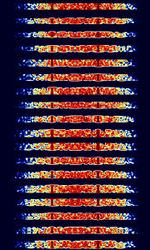 |
|
| North Korean Diplo PSK | North Korean Diplomatic PSKPhase-Shift Keying link. Also known as KRE-PSKPhase-Shift Keying. Four speed modes have been seen, 150 bdBaud (unit symbol Bd) is the unit for symbol rate or modulation rate in symbols per second., 300 bdBaud (unit symbol Bd) is the unit for symbol rate or modulation rate in symbols per second., 600 bdBaud (unit symbol Bd) is the unit for symbol rate or modulation rate in symbols per second., and 1200 bdBaud (unit symbol Bd) is the unit for symbol rate or modulation rate in symbols per second.. All use BPSKBinary Phase-Shift Keying (1 bit per symbol) modulation. The main identifying feature of this signal are the preambles and end of transmission patterns. | 9 MHzMegaHertz (MHz) 10^6 Hz — 29 MHzMegaHertz (MHz) 10^6 Hz | USBUpper Side Band Modulation (Radio, referring to reception and modulation mode)Universal Serial Bus (Computer, referring to USB Ports and cables) | PSKPhase-Shift Keying | 300 HzHertz (Hz), unit of frequency, defined as one cycle per second (1 Hz). — 2.4 kHzKiloHertz (kHz) 10^3 Hz | North Korea | 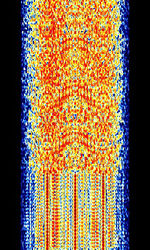 |
|
| OOK RC Car Remote Control | Cheap RC Cars with only for buttons (Forward, Reverse, Left, Right) Typically use 27Mhz or 49Mhz as the transmit frequency. There's typically no channel switching system on the remote control, which leads to interference with operating two RC vehicles at once. | 27 MHzMegaHertz (MHz) 10^6 Hz — 49 MHzMegaHertz (MHz) 10^6 Hz | AMAmplitude Modulation | OOKOn-Off Keying Modulation | 1.6 kHzKiloHertz (kHz) 10^3 Hz | Worldwide | 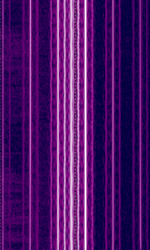 |
|
| OPERA Beacon and Data | OPERA Ad-Hoc Data/Beacon. The system is unique in that utilizes a serial data stream and Manchester coding, its therefore impossible to lose lock and its extremely robust in disturbed paths and heavy static. | 136 kHzKiloHertz (kHz) 10^3 Hz — 10,000 MHzMegaHertz (MHz) 10^6 Hz | USBUpper Side Band Modulation (Radio, referring to reception and modulation mode)Universal Serial Bus (Computer, referring to USB Ports and cables) | ASKAmplitude-Shift Keying | 1 HzHertz (Hz), unit of frequency, defined as one cycle per second (1 Hz). | Worldwide | 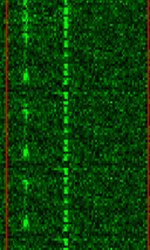 |
|
| Olivia | OLIVIA is an amateur digital teletype mode designed by Pawel Jalocha SP9VRC in 2005. Its goal was to be effective even in poor propagation conditions. | 3 MHzMegaHertz (MHz) 10^6 Hz — 30 MHzMegaHertz (MHz) 10^6 Hz | USBUpper Side Band Modulation (Radio, referring to reception and modulation mode)Universal Serial Bus (Computer, referring to USB Ports and cables) | MFSKMultiple Frequency Shift-Keying | 125 HzHertz (Hz), unit of frequency, defined as one cycle per second (1 Hz). — 2 kHzKiloHertz (kHz) 10^3 Hz | Worldwide | 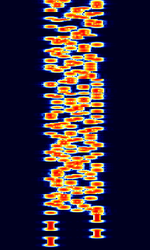 |
|
| OpenSky | OpenSky is an encrypted TDMATime Division Multiple Access protocol that is heavily used but is being phased out by the Pennsylvania State Police. No one other than the intended user has been able to decrypt the signal. | 700 MHzMegaHertz (MHz) 10^6 Hz — 1,000 MHzMegaHertz (MHz) 10^6 Hz | NFMNarrowband Frequency Modulation | TDMATime Division Multiple Access, 4GFSK | 20.07 kHzKiloHertz (kHz) 10^3 Hz | Worldwide | 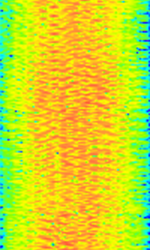 |
|
| OpenWay CENTRON Smart-Meter | This is a signal from a OpenWay Centron Electric 'Smart Meter'. Each house is now fitted with one of these, and they are strong - typically 50 dBThe decibel (dB) is a logarithmic unit used to express the ratio of two values of a physical quantity, here the strength of a received signal. above the atmospheric noise level. | 902 MHzMegaHertz (MHz) 10^6 Hz — 928 MHzMegaHertz (MHz) 10^6 Hz | BPSKBinary Phase-Shift Keying (1 bit per symbol) | 15 kHzKiloHertz (kHz) 10^3 Hz | United States | — | 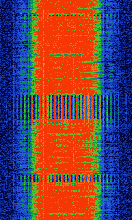 |
|
| OrbComm Mobile Telephony | Orbcomm digitized mobile satellite-based telephone signal intercepted over Hawaii, preceding NOAA 19 pass. | 137.2 MHzMegaHertz (MHz) 10^6 Hz — 137.46 MHzMegaHertz (MHz) 10^6 Hz | NFMNarrowband Frequency Modulation | 15 kHzKiloHertz (kHz) 10^3 Hz | Worldwide | 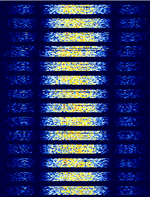 |
||
| Orbcomm | Orbcomm satellites are used for monitoring and sending short text messages. | 137 MHzMegaHertz (MHz) 10^6 Hz — 150 MHzMegaHertz (MHz) 10^6 Hz | NFMNarrowband Frequency Modulation | SDPSK | 15 kHzKiloHertz (kHz) 10^3 Hz | Worldwide | 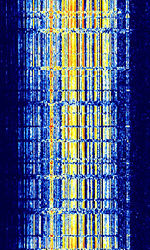 |
|
| P03 numbers station | Enigma designation P03 is a family of digital PSKPhase-Shift Keying modes, used by the "Polish 11" numbers station operator, which is likely a Polish intelligence agency. | 4 MHzMegaHertz (MHz) 10^6 Hz — 21 MHzMegaHertz (MHz) 10^6 Hz | USBUpper Side Band Modulation (Radio, referring to reception and modulation mode)Universal Serial Bus (Computer, referring to USB Ports and cables) | BPSKBinary Phase-Shift Keying (1 bit per symbol), QPSKQuadrature Phase-Shift Keying (2 bits per symbol) | 200 HzHertz (Hz), unit of frequency, defined as one cycle per second (1 Hz). | Worldwide, Poland | 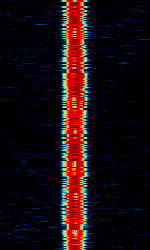 |
|
| P07 numbers station | Enigma designation P07 is a custom digital mode used by the "Russian 7" numbers station operator which is likely a major Russian intelligence agency. | 4.6 MHzMegaHertz (MHz) 10^6 Hz — 10.45 MHzMegaHertz (MHz) 10^6 Hz | USBUpper Side Band Modulation (Radio, referring to reception and modulation mode)Universal Serial Bus (Computer, referring to USB Ports and cables) | FSKFrequency-Shift Keying, BPSKBinary Phase-Shift Keying (1 bit per symbol), QPSKQuadrature Phase-Shift Keying (2 bits per symbol), OFDMOrthogonal Frequency-Division Multiplexing | 3.5 kHzKiloHertz (kHz) 10^3 Hz | Russia | 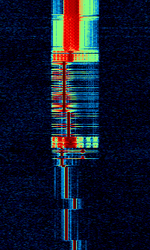 |
|
| PACKET | Packet, also known as FSK300, AFSK1200, BPSK300, QPSK600, BPSK1200, QPSK2400, AX.25 and IL2P, is a packet based protocol derived from X.25 and HDLC computer network protocols. Packet radio is a synchronous system in which data is transmitted in frames. | 3 MHzMegaHertz (MHz) 10^6 Hz — 800 MHzMegaHertz (MHz) 10^6 Hz | USBUpper Side Band Modulation (Radio, referring to reception and modulation mode)Universal Serial Bus (Computer, referring to USB Ports and cables) | FSKFrequency-Shift Keying | 730 HzHertz (Hz), unit of frequency, defined as one cycle per second (1 Hz). | Worldwide | 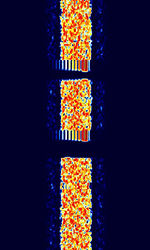 |
|
| PACTOR I | PACTOR-I is a digital data protocol combining elements of PACKET and AMTOR ARQAutomatic Repeat reQuestAutomatic Repeat Query. | 3 MHzMegaHertz (MHz) 10^6 Hz — 30 MHzMegaHertz (MHz) 10^6 Hz | USBUpper Side Band Modulation (Radio, referring to reception and modulation mode)Universal Serial Bus (Computer, referring to USB Ports and cables) | FSKFrequency-Shift Keying | 300 HzHertz (Hz), unit of frequency, defined as one cycle per second (1 Hz). | Worldwide | 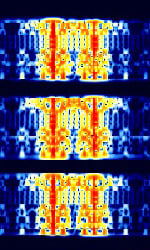 |
|
| PACTOR II | PACTOR II is an advancement of PACTOR I. It is up to 8 times faster than PACTOR I. | 3 MHzMegaHertz (MHz) 10^6 Hz — 30 MHzMegaHertz (MHz) 10^6 Hz | USBUpper Side Band Modulation (Radio, referring to reception and modulation mode)Universal Serial Bus (Computer, referring to USB Ports and cables) | PSKPhase-Shift Keying | 450 HzHertz (Hz), unit of frequency, defined as one cycle per second (1 Hz). | Worldwide | 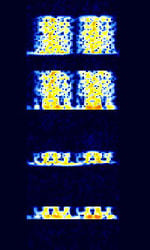 |
|
| PACTOR III | PACTOR III introduces 6 speed levels that provide higher throughput and improved robustness compared to PACTOR I and II. PACTOR III is on average 3.5 times faster than PACTOR II. With optimal conditions, PACTOR III becomes over 5 times faster. | 3 MHzMegaHertz (MHz) 10^6 Hz — 30 MHzMegaHertz (MHz) 10^6 Hz | USBUpper Side Band Modulation (Radio, referring to reception and modulation mode)Universal Serial Bus (Computer, referring to USB Ports and cables) | PSKPhase-Shift Keying | 400 HzHertz (Hz), unit of frequency, defined as one cycle per second (1 Hz). — 2.4 kHzKiloHertz (kHz) 10^3 Hz | Worldwide | 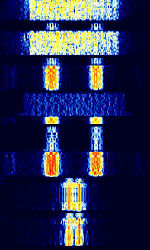 |
|
| PACTOR IV | PACTOR IV is the newest iteration of the PACTOR series, advancing from PACTOR I-III. It is 1.5x-3x faster than PACTOR III, and has 10 speed levels. | 3 MHzMegaHertz (MHz) 10^6 Hz — 30 MHzMegaHertz (MHz) 10^6 Hz | USBUpper Side Band Modulation (Radio, referring to reception and modulation mode)Universal Serial Bus (Computer, referring to USB Ports and cables) | PSKPhase-Shift Keying, QAMQuadrature Amplitude Modulation | 300 HzHertz (Hz), unit of frequency, defined as one cycle per second (1 Hz). — 2.4 kHzKiloHertz (kHz) 10^3 Hz | Worldwide | 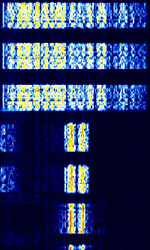 |
|
| PAX | PAX and PAX2 are developed by Patrick Lindecker F6CTE in 2005, and was derived from Olivia. It utilizes the AX.25 protocol that PACKET uses, and had a minimum SNR of -10dB. Can transmit APRSAutomatic Packet Reporting System, an amateur radio-based system for real time tactical digital communications of information of immediate value in the local area frames. | 3.59 MHzMegaHertz (MHz) 10^6 Hz — 144.62 MHzMegaHertz (MHz) 10^6 Hz | USBUpper Side Band Modulation (Radio, referring to reception and modulation mode)Universal Serial Bus (Computer, referring to USB Ports and cables) | MFSKMultiple Frequency Shift-Keying | 500 HzHertz (Hz), unit of frequency, defined as one cycle per second (1 Hz). | Worldwide | 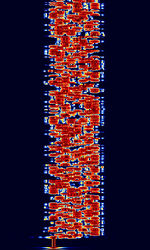 |
|
| PI4 | PI4 (PharusIgnis4) is a 4-MFSKMultiple Frequency Shift-Keying mode designed for amateur radio beacons. It is designed to work via different propagation modes. | 28 MHzMegaHertz (MHz) 10^6 Hz — 1,296 MHzMegaHertz (MHz) 10^6 Hz | USBUpper Side Band Modulation (Radio, referring to reception and modulation mode)Universal Serial Bus (Computer, referring to USB Ports and cables) | MFSKMultiple Frequency Shift-Keying | 709 HzHertz (Hz), unit of frequency, defined as one cycle per second (1 Hz). | Worldwide | 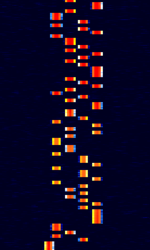 |
|
| POCSAG | POCSAG (Post Office Code Standardisation Advisory Group), also known as Super-POCSAG, Radio Paging Code No. 1 or RPC1, is a one-way 2FSK paging protocol that supports 512, 1200, and 2400 bpsBits per second (bps). | 25 MHzMegaHertz (MHz) 10^6 Hz — 932 MHzMegaHertz (MHz) 10^6 Hz | NFMNarrowband Frequency Modulation | FSKFrequency-Shift Keying | 9 kHzKiloHertz (kHz) 10^3 Hz | Worldwide | 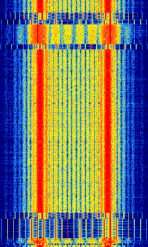 |
|
| POL-ARQ | POL-ARQAutomatic Repeat reQuestAutomatic Repeat Query was a duplex ARQAutomatic Repeat reQuestAutomatic Repeat Query system used by Polish and Italian diplomatic services. This system uses the CCIRComité Consultatif International pour la Radio (Predecessor of the ITU-R) 476-4 alphabet with polatiry retained. No longer in use. | 3 MHzMegaHertz (MHz) 10^6 Hz — 30 MHzMegaHertz (MHz) 10^6 Hz | USBUpper Side Band Modulation (Radio, referring to reception and modulation mode)Universal Serial Bus (Computer, referring to USB Ports and cables) | FSKFrequency-Shift Keying | 350 HzHertz (Hz), unit of frequency, defined as one cycle per second (1 Hz). | Europe | 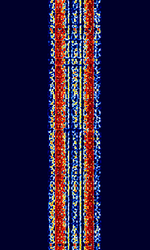 |
|
| PRC-16 | PRC-16 is a Chinese sourced PSKPhase-Shift Keying data link, traced to Shanghai. Suspected user Chinese Military. | 14.3 MHzMegaHertz (MHz) 10^6 Hz | USBUpper Side Band Modulation (Radio, referring to reception and modulation mode)Universal Serial Bus (Computer, referring to USB Ports and cables) | PSKPhase-Shift Keying, OFDMOrthogonal Frequency-Division Multiplexing | 2.2 kHzKiloHertz (kHz) 10^3 Hz | China | 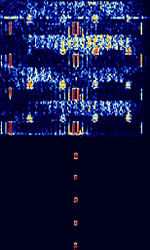 |
|
| PROBA 1/2 Downlink | Dump of satellite data to Redu, Belgium ground station from the PROBA (Project for On-Board Autonomy) 1, 2, and V ESA satellites. | 2,235 MHzMegaHertz (MHz) 10^6 Hz | RAW | BPSKBinary Phase-Shift Keying (1 bit per symbol) | 4 MHzMegaHertz (MHz) 10^6 Hz | Europe | — |  |
| PSK Paging link | Also known as PSKPhase-Shift Keying paging, is a signal that allows side-by-side PSKPhase-Shift Keying to exist in AFSKAudio Frequency-Shift Keying paging links, allowing for more dynamically processed DSP available. | 150 MHzMegaHertz (MHz) 10^6 Hz — 470 MHzMegaHertz (MHz) 10^6 Hz | FMFrequency Modulation | PSKPhase-Shift Keying | 12.5 kHzKiloHertz (kHz) 10^3 Hz | United States | 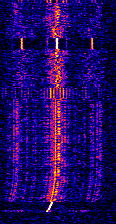 |
|
| PSK-AM | PSKPhase-Shift Keying-AMAmplitude Modulation is an amateur digital mode developed by Patrick Lindecker F6CTE in 2002/2003, and incorporates FECForward Error Correction interleaving. PSKPhase-Shift Keying-AMAmplitude Modulation uses the modulation of PSK10/31 with the FECForward Error Correction of SITOR-B. | 10.148 MHzMegaHertz (MHz) 10^6 Hz — 144.62 MHzMegaHertz (MHz) 10^6 Hz | USBUpper Side Band Modulation (Radio, referring to reception and modulation mode)Universal Serial Bus (Computer, referring to USB Ports and cables) | PSKPhase-Shift Keying | 40 HzHertz (Hz), unit of frequency, defined as one cycle per second (1 Hz). — 180 HzHertz (Hz), unit of frequency, defined as one cycle per second (1 Hz). | Worldwide | 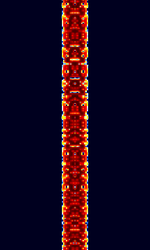 |
|
| PSK2K | PSK2K is a meteor scatter type of mode written by DJ5HG Using a modulation scheme of BPSKBinary Phase-Shift Keying (1 bit per symbol) at 2000 BdBaud (unit symbol Bd) is the unit for symbol rate or modulation rate in symbols per second.. | 50.36 MHzMegaHertz (MHz) 10^6 Hz — 144.36 MHzMegaHertz (MHz) 10^6 Hz | USBUpper Side Band Modulation (Radio, referring to reception and modulation mode)Universal Serial Bus (Computer, referring to USB Ports and cables) | PSKPhase-Shift Keying | 2 kHzKiloHertz (kHz) 10^3 Hz | Worldwide | 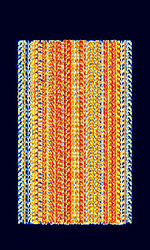 |
|
| Panther-H Modem | Panther-H is an intelligent frequency hopping transceiver developed by Racal (now Thales Group). Has a signature 8-burst SOC (Start Of Conversation) sync procedure. Used in Panther-2000H radios | 1.5 MHzMegaHertz (MHz) 10^6 Hz — 30 MHzMegaHertz (MHz) 10^6 Hz | USBUpper Side Band Modulation (Radio, referring to reception and modulation mode)Universal Serial Bus (Computer, referring to USB Ports and cables) | PSKPhase-Shift Keying | 3 kHzKiloHertz (kHz) 10^3 Hz | Worldwide | 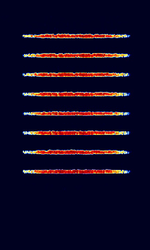 |
|
| Phase Shift Keying (PSK) | PSKPhase-Shift Keying is a digital teletype mode based on Phase-Shift Keying (PSKPhase-Shift Keying) modulation. The most popular amateur radio PSKPhase-Shift Keying mode is PSKPhase-Shift Keying 31. | 1.838 MHzMegaHertz (MHz) 10^6 Hz — 909 MHzMegaHertz (MHz) 10^6 Hz | USBUpper Side Band Modulation (Radio, referring to reception and modulation mode)Universal Serial Bus (Computer, referring to USB Ports and cables) | PSKPhase-Shift Keying | 10 HzHertz (Hz), unit of frequency, defined as one cycle per second (1 Hz). — 1 kHzKiloHertz (kHz) 10^3 Hz | Worldwide | 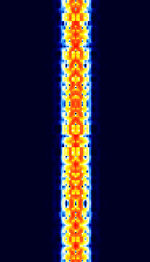 |
|
| Piccolo | Piccolo was a MFSKMultiple Frequency Shift-Keying system developed by the UK Foreign and Commonwealth Office (FCO) to communicate with foreign embassies and UK military stations around the world. No longer used. | 3 MHzMegaHertz (MHz) 10^6 Hz — 30 MHzMegaHertz (MHz) 10^6 Hz | USBUpper Side Band Modulation (Radio, referring to reception and modulation mode)Universal Serial Bus (Computer, referring to USB Ports and cables) | MFSKMultiple Frequency Shift-Keying | 180 HzHertz (Hz), unit of frequency, defined as one cycle per second (1 Hz). — 300 HzHertz (Hz), unit of frequency, defined as one cycle per second (1 Hz). | Worldwide | 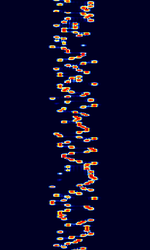 |
|
| Polish Intelligence 100bd 625Hz FSK | Also known as F11, this is a one-way broadcast system that was used by one of Polish intelligence agencies for delivery of messages to their operatives abroad on fixed schedules. | 4 MHzMegaHertz (MHz) 10^6 Hz — 20 MHzMegaHertz (MHz) 10^6 Hz | USBUpper Side Band Modulation (Radio, referring to reception and modulation mode)Universal Serial Bus (Computer, referring to USB Ports and cables) | FSKFrequency-Shift Keying | 3.5 kHzKiloHertz (kHz) 10^3 Hz | Poland | 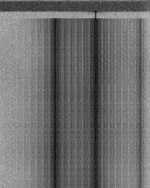 |
|
| Portable Traffic Lights | Signals sent from portable traffic lights that are often used at roadworks. | 154.463 MHzMegaHertz (MHz) 10^6 Hz | NFMNarrowband Frequency Modulation | Worldwide | 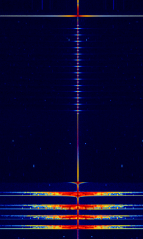 |
|||
| Positive Train Control (PTC) | Positive train control (PTC) is a system of functional requirements for monitoring and controlling train movements as an attempt to provide increased safety. | 220 MHzMegaHertz (MHz) 10^6 Hz | RAW | 20 kHzKiloHertz (kHz) 10^3 Hz | United States | 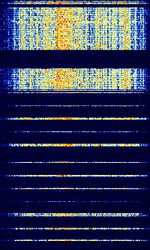 |
||
| Possible quarry telemetry | possible quarry telemetry observed on 462.775, appears to pulse every second | 462.775 MHzMegaHertz (MHz) 10^6 Hz | NFMNarrowband Frequency Modulation | 8 kHzKiloHertz (kHz) 10^3 Hz | Shellharbour, Australia |  |
||
| ProVoice | ProVoice is a digital voice mode used in EDACS trunked systems. | 160 MHzMegaHertz (MHz) 10^6 Hz — 941 MHzMegaHertz (MHz) 10^6 Hz | NFMNarrowband Frequency Modulation | GFSKGaussian Frequency-Shift Keying | Worldwide | 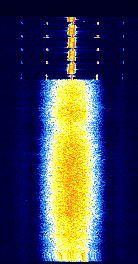 |
||
| Project 25 (P25) | Project 25 (P25 or APCO-25) is a trunked radio standard developed by The Association of Public Safety Communications Officials International (APCO-25) for use with public safety organizations around the world. | 136 MHzMegaHertz (MHz) 10^6 Hz — 939 MHzMegaHertz (MHz) 10^6 Hz | NFMNarrowband Frequency Modulation | PSKPhase-Shift Keying, C4FMContinuous 4-Level Frequency Modulation, TDMATime Division Multiple Access | 12.5 kHzKiloHertz (kHz) 10^3 Hz | Worldwide | 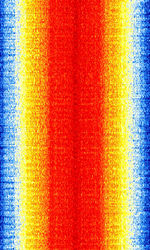 |
|
| Pulse Coded Modulated (PCM) RC Toy | Signal used for remote control (RC) Toys. | 27.145 MHzMegaHertz (MHz) 10^6 Hz — 49 MHzMegaHertz (MHz) 10^6 Hz | PCM | Worldwide | 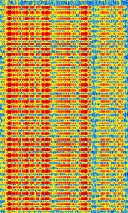 |
|||
| Q-MAC HF Modem | The Q-MAC HFHigh Frequency (3-30 MHz) Modem is a military modem developed by Q-MAC (acquired by Barrett Communications). It uses OFDMOrthogonal Frequency-Division Multiplexing with a BPSKBinary Phase-Shift Keying (1 bit per symbol) sync channel in a gap of the signal. | 3 MHzMegaHertz (MHz) 10^6 Hz — 30 MHzMegaHertz (MHz) 10^6 Hz | USBUpper Side Band Modulation (Radio, referring to reception and modulation mode)Universal Serial Bus (Computer, referring to USB Ports and cables) | PSKPhase-Shift Keying, OFDMOrthogonal Frequency-Division Multiplexing, PSK8 | 2 kHzKiloHertz (kHz) 10^3 Hz | Worldwide | 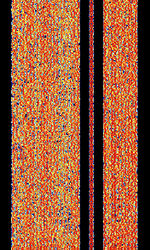 |
|
| Q15X25 | Q15X25, also known as NEWQPSK, is an experimental amateur radio packet modem developed by Pawel Jalocha SP9VRC. Q15X25 is a OFDMOrthogonal Frequency-Division Multiplexing QPSKQuadrature Phase-Shift Keying (2 bits per symbol) implementation of the AX.25 Packet protocol used in PACKET. | 3.585 MHzMegaHertz (MHz) 10^6 Hz — 14.109 MHzMegaHertz (MHz) 10^6 Hz | USBUpper Side Band Modulation (Radio, referring to reception and modulation mode)Universal Serial Bus (Computer, referring to USB Ports and cables) | PSKPhase-Shift Keying, OFDMOrthogonal Frequency-Division Multiplexing | 1.95 kHzKiloHertz (kHz) 10^3 Hz — 2.35 kHzKiloHertz (kHz) 10^3 Hz | Worldwide | 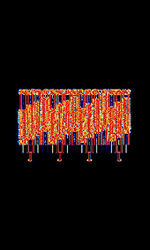 |
|
| Q65 | Q65 is a 65-FSKFrequency-Shift Keying extreme weak-signal mode which is designed for Earth-Moon-Earth communications and fast-fading propagation modes such as tropospheric scatter, rain scatter and trans-equatorial propagation. It offers a variety of submodes. Q65 is part of the WSJT-X software. | 50.275 MHzMegaHertz (MHz) 10^6 Hz — 144.17 MHzMegaHertz (MHz) 10^6 Hz | USBUpper Side Band Modulation (Radio, referring to reception and modulation mode)Universal Serial Bus (Computer, referring to USB Ports and cables) | MFSKMultiple Frequency Shift-Keying | 19 HzHertz (Hz), unit of frequency, defined as one cycle per second (1 Hz). — 1.733 kHzKiloHertz (kHz) 10^3 Hz | Worldwide | 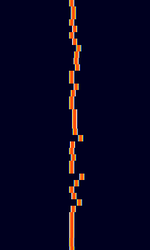 |
|
| QO-100-modem | High speed modem for QO-100 (Es'hail 2) amateur satellite narrow transponder. | 10,489.5 MHzMegaHertz (MHz) 10^6 Hz — 10,490 MHzMegaHertz (MHz) 10^6 Hz | USBUpper Side Band Modulation (Radio, referring to reception and modulation mode)Universal Serial Bus (Computer, referring to USB Ports and cables) | QPSKQuadrature Phase-Shift Keying (2 bits per symbol), BPSKBinary Phase-Shift Keying (1 bit per symbol), APSK | 2.7 kHzKiloHertz (kHz) 10^3 Hz | 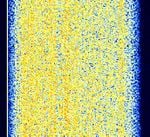 |
||
| Quadcopter Telemetry Signal | This signal originates from the Silicon Instruments Si1000 Software Defined Radio (SDR) that is a component of the 3DR Telemetry Radio, sold for use as a data link between a computer ground station and a UAV "a drone". | 414 MHzMegaHertz (MHz) 10^6 Hz — 935 MHzMegaHertz (MHz) 10^6 Hz | FHSS-TDM | BPSKBinary Phase-Shift Keying (1 bit per symbol), QAMQuadrature Amplitude Modulation, 8PSK8-Phase Phase-Shift Keying (3 bits per symbol) | Worldwide | No Audio File | 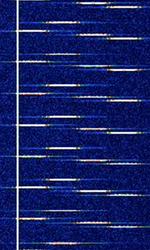 |
|
| Quansheng UVK5 Digital Text Message | A digital text message protocol included in the stock firmware of some Quansheng brand handheld radios to send up to 30 characters in a short packet type message. | 137 MHzMegaHertz (MHz) 10^6 Hz — 480 MHzMegaHertz (MHz) 10^6 Hz | FMFrequency Modulation | AFSKAudio Frequency-Shift Keying, FSKFrequency-Shift Keying | 12 kHzKiloHertz (kHz) 10^3 Hz | Worldwide | 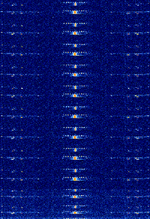 |
|
| RAC-ARQ | RAC-ARQAutomatic Repeat reQuestAutomatic Repeat Query, also known as MEROD and RACAL-ARQAutomatic Repeat reQuestAutomatic Repeat Query, is a teleprinter system by Racal, used in MEROD devices. MEROD stands for Message Entry and Read Out Device. Hasn't been seen since 2010. | 3 MHzMegaHertz (MHz) 10^6 Hz — 30 MHzMegaHertz (MHz) 10^6 Hz | USBUpper Side Band Modulation (Radio, referring to reception and modulation mode)Universal Serial Bus (Computer, referring to USB Ports and cables) | FSKFrequency-Shift Keying | 1 kHzKiloHertz (kHz) 10^3 Hz — 1.3 kHzKiloHertz (kHz) 10^3 Hz | Worldwide | 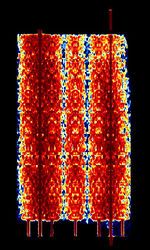 |
|
| RFID | Radio-frequency identification (RFID) uses electromagnetic fields to automatically identify and track tags attached to objects. The tags contain electronically-stored information. Passive tags collect energy from a nearby RFID reader's interrogating radio waves. | 13.56 MHzMegaHertz (MHz) 10^6 Hz | USBUpper Side Band Modulation (Radio, referring to reception and modulation mode)Universal Serial Bus (Computer, referring to USB Ports and cables) | 3.3 kHzKiloHertz (kHz) 10^3 Hz | Worldwide | 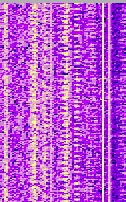 |
||
| ROS | ROS is an amateur radio teletype free running QSO mode designed for low signal/high noise conditions. | 1.8 MHzMegaHertz (MHz) 10^6 Hz — 30 MHzMegaHertz (MHz) 10^6 Hz | USBUpper Side Band Modulation (Radio, referring to reception and modulation mode)Universal Serial Bus (Computer, referring to USB Ports and cables) | DSSS | 2 kHzKiloHertz (kHz) 10^3 Hz | Worldwide | 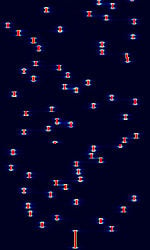 |
|
| RTTYM | RTTYM, developed by Nick Fedoseev (UT2UZ) in 2005, is a digital mode derived from Olivia. It aims to deliver a compromise of speed and performance. RTTYM is about 4x faster than Olivia, but trades the speed for reduced robustness and sensitivity. | 3 MHzMegaHertz (MHz) 10^6 Hz — 30 MHzMegaHertz (MHz) 10^6 Hz | USBUpper Side Band Modulation (Radio, referring to reception and modulation mode)Universal Serial Bus (Computer, referring to USB Ports and cables) | MFSKMultiple Frequency Shift-Keying | 150 HzHertz (Hz), unit of frequency, defined as one cycle per second (1 Hz). — 2 kHzKiloHertz (kHz) 10^3 Hz | Worldwide | 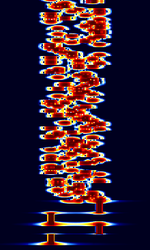 |
|
| RUM-FEC | RUM-FECForward Error Correction, also known as ROU-FECForward Error Correction and SAU-FECForward Error Correction, is a FSKFrequency-Shift Keying FECForward Error Correction system used by Romanian diplomatic services. This is no longer used today, replaced by MIL-STD 188-110 Serial. | 3 MHzMegaHertz (MHz) 10^6 Hz — 30 MHzMegaHertz (MHz) 10^6 Hz | USBUpper Side Band Modulation (Radio, referring to reception and modulation mode)Universal Serial Bus (Computer, referring to USB Ports and cables) | FSKFrequency-Shift Keying | 750 HzHertz (Hz), unit of frequency, defined as one cycle per second (1 Hz). | Romania | 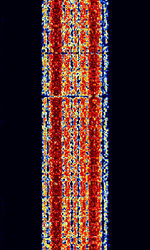 |
|
| RUM-MOI FEC | RUM-MOI FECForward Error Correction, also known as RUM-MIL 115.76 BdBaud (unit symbol Bd) is the unit for symbol rate or modulation rate in symbols per second., is a FSKFrequency-Shift Keying FECForward Error Correction mode used by the Romanian Ministry of Internal Affairs, supposedly under military use. This is no longer used today, replaced by MIL-STD 188-110 Serial. | 3 MHzMegaHertz (MHz) 10^6 Hz — 30 MHzMegaHertz (MHz) 10^6 Hz | USBUpper Side Band Modulation (Radio, referring to reception and modulation mode)Universal Serial Bus (Computer, referring to USB Ports and cables) | FSKFrequency-Shift Keying | 600 HzHertz (Hz), unit of frequency, defined as one cycle per second (1 Hz). | Romania | 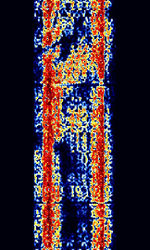 |
|
| Radio Data Link Access Procedure (RD-LAP) | Motorola's Radio Data Link Access Procedure (RD-LAP) is a 1G protocol that was used in ARDIS and DataTAC Networks, and is still used in some MDTMobile Data Terminal, A mobile data terminal (MDT) is a computerized device used in public transit vehicles, taxicabs, commercial trucking fleets, military logistics, and emergency vehicles, such as police cars, to communicate with a central dispatch office.'s, as well as gas companies, police departments, fire departments, financial companies, etc. | 150 MHzMegaHertz (MHz) 10^6 Hz — 850 MHzMegaHertz (MHz) 10^6 Hz | NFMNarrowband Frequency Modulation | 4FSK4-Level Frequency Shift Keying | 12.5 kHzKiloHertz (kHz) 10^3 Hz — 25 kHzKiloHertz (kHz) 10^3 Hz | Worldwide | 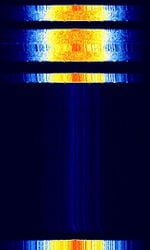 |
|
| Radio Data System (RDS) | Radio Data System (RDS) and its North American variant, Radio Broadcast Data System (RBDS), are data modes transmitted on subcarriers of commercial FMFrequency Modulation radio station transmissions. | 65 MHzMegaHertz (MHz) 10^6 Hz — 108 MHzMegaHertz (MHz) 10^6 Hz | DSBDual Side Band Modulation | PSKPhase-Shift Keying | 4 kHzKiloHertz (kHz) 10^3 Hz | Worldwide | 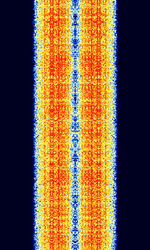 |
|
| Radio Navigation Satellite System (RNSS) | Generic positioning, navigation, and timing (PNT) signals transmitted by global/regional navigation satellite system (GNSS/RNSS) and Satellite-Based Augmentation System (SBAS) constellations such as GPS, GLONASS, Galileo, BeiDou, QZSS, and IRNSS. | 1,176.45 MHzMegaHertz (MHz) 10^6 Hz — 1,575.42 MHzMegaHertz (MHz) 10^6 Hz | RAW | BPSKBinary Phase-Shift Keying (1 bit per symbol), QAMQuadrature Amplitude Modulation, DSSS, BOC, TMBOC | 22 MHzMegaHertz (MHz) 10^6 Hz — 25 MHzMegaHertz (MHz) 10^6 Hz | Worldwide |  |
|
| Radio Telephone Network C (C-Netz) | The Radio Telephone Network C (German: Funktelefonnetz-C, abbreviated as C-Netz), was a first generation analog cellular phone system deployed and operated in Germany (at first West Germany) by DeTeMobil (formerly of Deutsche Bundespost Telekom, currently Deutsche Telekom). | 450 MHzMegaHertz (MHz) 10^6 Hz | FMFrequency Modulation | FSKFrequency-Shift Keying | 12.5 kHzKiloHertz (kHz) 10^3 Hz | Germany | 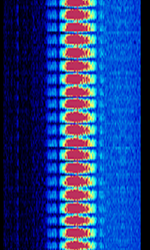 |
|
| Radio Teletype (RTTY) | RTTYRadio TeleTYpe (Also known as Baudot or ITA2) uses the Baudot 5-bit alphabet with FSKFrequency-Shift Keying to send text messages over the shortwave. This mode is gradually dying out in favor of more robust modes like PSK31 in the amateur service. | 147.3 kHzKiloHertz (kHz) 10^3 Hz — 28.15 MHzMegaHertz (MHz) 10^6 Hz | USBUpper Side Band Modulation (Radio, referring to reception and modulation mode)Universal Serial Bus (Computer, referring to USB Ports and cables) | FSKFrequency-Shift Keying | 85 HzHertz (Hz), unit of frequency, defined as one cycle per second (1 Hz). — 850 HzHertz (Hz), unit of frequency, defined as one cycle per second (1 Hz). | Worldwide | 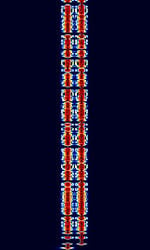 |
|
| Rain Master sprinkler control | Control signal for grass sprinkler watering system | 154.6 MHzMegaHertz (MHz) 10^6 Hz | FMFrequency Modulation | FSKFrequency-Shift Keying | 12 kHzKiloHertz (kHz) 10^3 Hz | Worldwide | 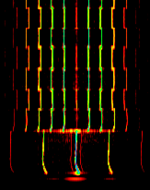 |
|
| ReFLEX | ReFLEX is a two-way paging variant of FLEX. | 896 MHzMegaHertz (MHz) 10^6 Hz — 941 MHzMegaHertz (MHz) 10^6 Hz | NFMNarrowband Frequency Modulation | FFSKFast Frequency-Shift Keying | 40 kHzKiloHertz (kHz) 10^3 Hz | United States | 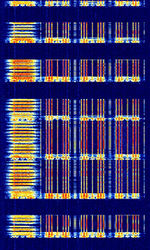 |
|
| Redundant Digital File Transfer (RDFT) | RDFT is an amateur radio digital mode used to transmit files. | 9.065 MHzMegaHertz (MHz) 10^6 Hz — 9.24 MHzMegaHertz (MHz) 10^6 Hz | USBUpper Side Band Modulation (Radio, referring to reception and modulation mode)Universal Serial Bus (Computer, referring to USB Ports and cables) | PSKPhase-Shift Keying | 1.8 kHzKiloHertz (kHz) 10^3 Hz | Worldwide | 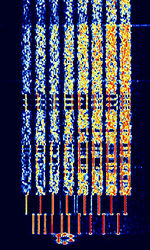 |
|
| Road Coordination/Maintenance Telemetry | A sort of SCADA signaling method used to cooordinate traffic or other road works using external NFMNarrowband Frequency Modulation transmitters. Can also be shared with road commission vehicles and related things. | 151.01 MHzMegaHertz (MHz) 10^6 Hz | FMFrequency Modulation | FSKFrequency-Shift Keying | 6.7 kHzKiloHertz (kHz) 10^3 Hz | Worldwide | 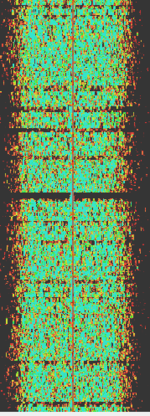 |
|
| Robust PACKET | Robust PACKET, also known as HFHigh Frequency (3-30 MHz)-APRSAutomatic Packet Reporting System, an amateur radio-based system for real time tactical digital communications of information of immediate value in the local area, RPR, Winlink RMS, and APRSlink, is an OFDMOrthogonal Frequency-Division Multiplexing version of the amateur mode PACKET which is optimized for shortwave use. This mode was developed by Spezielle Communications Systeme GmbH & Co. KG (SCS). | 3.61 MHzMegaHertz (MHz) 10^6 Hz — 14.103 MHzMegaHertz (MHz) 10^6 Hz | USBUpper Side Band Modulation (Radio, referring to reception and modulation mode)Universal Serial Bus (Computer, referring to USB Ports and cables) | PSKPhase-Shift Keying, OFDMOrthogonal Frequency-Division Multiplexing | 500 HzHertz (Hz), unit of frequency, defined as one cycle per second (1 Hz). | Worldwide | 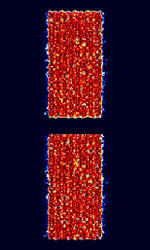 |
|
| Russian Diplo VFT PSK 64Bd | Russian Diplomatic 3 channel VFTVoice Frequency Telegraphy PSKPhase-Shift Keying running at 64 BdBaud (unit symbol Bd) is the unit for symbol rate or modulation rate in symbols per second.. Enigma M42 designation | 4.022 MHzMegaHertz (MHz) 10^6 Hz — 23.131 MHzMegaHertz (MHz) 10^6 Hz | USBUpper Side Band Modulation (Radio, referring to reception and modulation mode)Universal Serial Bus (Computer, referring to USB Ports and cables) | PSKPhase-Shift Keying | 2.5 kHzKiloHertz (kHz) 10^3 Hz | Russia | 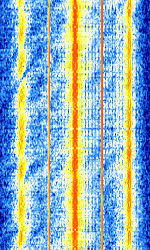 |
|
| Russian Intelligence 200bd 1000Hz FSK (F06) | Also known as F06, this is a one-way error-correcting broadcast system, used by one of Russian intelligence agencies for delivery of messages to their operatives abroad on fixed schedules. | 4 MHzMegaHertz (MHz) 10^6 Hz — 23 MHzMegaHertz (MHz) 10^6 Hz | USBUpper Side Band Modulation (Radio, referring to reception and modulation mode)Universal Serial Bus (Computer, referring to USB Ports and cables) | FSKFrequency-Shift Keying | 1 kHzKiloHertz (kHz) 10^3 Hz | Russia | 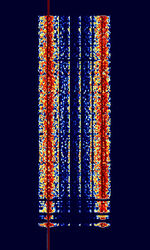 |
|
| Russian Intelligence 200bd 500Hz FSK (F01) | Also known as F01, this is a digital FSKFrequency-Shift Keying mode used by Russian intelligence to deliver encrypted messages to their operatives abroad. Transmissions usually happen on fixed schedules. | 4 MHzMegaHertz (MHz) 10^6 Hz — 23 MHzMegaHertz (MHz) 10^6 Hz | USBUpper Side Band Modulation (Radio, referring to reception and modulation mode)Universal Serial Bus (Computer, referring to USB Ports and cables) | FSKFrequency-Shift Keying | 500 HzHertz (Hz), unit of frequency, defined as one cycle per second (1 Hz). | Russia |  |
|
| Russian MFSK-OFDM-chirp hybrid modem | A supposedly Russian HFHigh Frequency (3-30 MHz) data mode with MFSKMultiple Frequency Shift-Keying, OFDMOrthogonal Frequency-Division Multiplexing and frequency sweeps, resulting in an interesting spectrogram and sound. | 12.176 MHzMegaHertz (MHz) 10^6 Hz — 16.259 MHzMegaHertz (MHz) 10^6 Hz | USBUpper Side Band Modulation (Radio, referring to reception and modulation mode)Universal Serial Bus (Computer, referring to USB Ports and cables) | MFSKMultiple Frequency Shift-Keying, OFDMOrthogonal Frequency-Division Multiplexing, FMFrequency Modulation, FMCW | 3 kHzKiloHertz (kHz) 10^3 Hz — 96 kHzKiloHertz (kHz) 10^3 Hz | Russia, Worldwide | 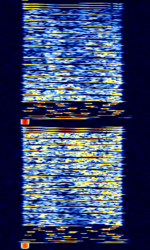 |
|
| Russian overhead power line telemetry system | Russian telemetry system, transmitted over the overhead power lines. | 50 kHzKiloHertz (kHz) 10^3 Hz — 1 MHzMegaHertz (MHz) 10^6 Hz | USBUpper Side Band Modulation (Radio, referring to reception and modulation mode)Universal Serial Bus (Computer, referring to USB Ports and cables) | FSKFrequency-Shift Keying | 400 HzHertz (Hz), unit of frequency, defined as one cycle per second (1 Hz). | Russia | 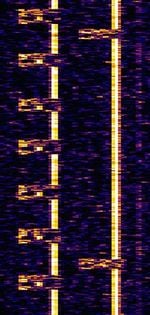 |
|
| SI-ARQ | SI-ARQAutomatic Repeat reQuestAutomatic Repeat Query, also known as ARQAutomatic Repeat reQuestAutomatic Repeat Query-S and ARQAutomatic Repeat reQuestAutomatic Repeat Query-1000S, is a simplex ARQAutomatic Repeat reQuestAutomatic Repeat Query system designed by Siemens formerly used by Austrian and Indonesian diplomatic services. No longer used today. | 3 MHzMegaHertz (MHz) 10^6 Hz — 30 MHzMegaHertz (MHz) 10^6 Hz | USBUpper Side Band Modulation (Radio, referring to reception and modulation mode)Universal Serial Bus (Computer, referring to USB Ports and cables) | FSKFrequency-Shift Keying | 350 HzHertz (Hz), unit of frequency, defined as one cycle per second (1 Hz). | Europe | 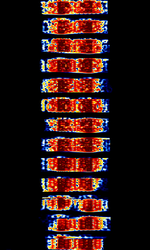 |
|
| SI-FEC | SI-FECForward Error Correction, also known as FECForward Error Correction-S, FECForward Error Correction 1000 Simplex, and FECForward Error Correction-1000S, was the FECForward Error Correction variant of SI-ARQAutomatic Repeat reQuestAutomatic Repeat Query, and was only used under extremely poor propagation conditions. SI-FECForward Error Correction was developed by Siemens and was used by Austrian and Indonesian diplomatic services. | 3 MHzMegaHertz (MHz) 10^6 Hz — 30 MHzMegaHertz (MHz) 10^6 Hz | USBUpper Side Band Modulation (Radio, referring to reception and modulation mode)Universal Serial Bus (Computer, referring to USB Ports and cables) | FSKFrequency-Shift Keying | 280 HzHertz (Hz), unit of frequency, defined as one cycle per second (1 Hz). | Europe | 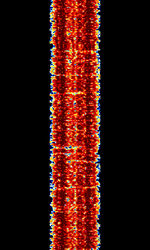 |
|
| SIGFOX | SIGFOX is a IoTInternet of Things wireless network system utilizing ETSIEuropean Telecommunications Standards Institute. An independent, not-for-profit, standardization organization in the telecommunications industry in Europe, developing global telecommunications standards.'s specification for Low Throughput Networks (LTN) and Ultra Narrow-Band (UNB) modulation. | 868 MHzMegaHertz (MHz) 10^6 Hz — 868.6 MHzMegaHertz (MHz) 10^6 Hz | RAW | BPSKBinary Phase-Shift Keying (1 bit per symbol) | 200 kHzKiloHertz (kHz) 10^3 Hz | Worldwide | 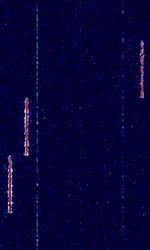 |
|
| SITOR-A | SITOR-A (Also known as AMTOR-A) is one of two modes of SITOR, which stands for Simplex Teletype Over Radio. | 3 MHzMegaHertz (MHz) 10^6 Hz — 30 MHzMegaHertz (MHz) 10^6 Hz | USBUpper Side Band Modulation (Radio, referring to reception and modulation mode)Universal Serial Bus (Computer, referring to USB Ports and cables) | FSKFrequency-Shift Keying | 350 HzHertz (Hz), unit of frequency, defined as one cycle per second (1 Hz). | Worldwide | 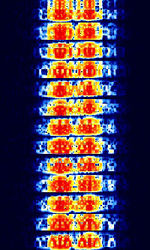 |
|
| SP-14 (XP) | SP-14 (XP) was a 14 tone MFSKMultiple Frequency Shift-Keying mode with origins from the Russian Intelligence and Foreign Ministry. Also known as NUM-13. Inactive since 2005, superseded by XPA. | 9 MHzMegaHertz (MHz) 10^6 Hz — 12 MHzMegaHertz (MHz) 10^6 Hz | AMAmplitude Modulation | MFSKMultiple Frequency Shift-Keying | 1.2 kHzKiloHertz (kHz) 10^3 Hz | Russia | 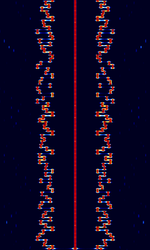 |
|
| SPREAD | SPREAD, also known as AUTOSPEC Mk2, SPREAD-11, SPREAD-21, and SPREAD-51, was a FECForward Error Correction system used by Romanian diplomatic stations and the Brazilian Navy and shore stations. SPREAD is considered the successor to AUTOSPEC. | 3 MHzMegaHertz (MHz) 10^6 Hz — 30 MHzMegaHertz (MHz) 10^6 Hz | USBUpper Side Band Modulation (Radio, referring to reception and modulation mode)Universal Serial Bus (Computer, referring to USB Ports and cables) | FSKFrequency-Shift Keying | 600 HzHertz (Hz), unit of frequency, defined as one cycle per second (1 Hz). | Worldwide | 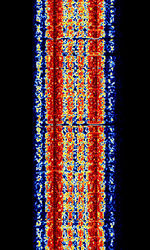 |
|
| STANAG 4197 | STANAGNATO Standardization Agreement (STANAG), defines processes, procedures, terms, and conditions for common military or technical procedures or equipment between the member countries of the North Atlantic Treaty Organization (NATO). 4197 is a NATONorth Atlantic Treaty Organization QPSKQuadrature Phase-Shift Keying (2 bits per symbol) OFDMOrthogonal Frequency-Division Multiplexing signal used in ANDVT modems that transmit encrypted digital voice over HFHigh Frequency (3-30 MHz). | 3 MHzMegaHertz (MHz) 10^6 Hz — 30 MHzMegaHertz (MHz) 10^6 Hz | USBUpper Side Band Modulation (Radio, referring to reception and modulation mode)Universal Serial Bus (Computer, referring to USB Ports and cables) | PSKPhase-Shift Keying, OFDMOrthogonal Frequency-Division Multiplexing | 2.3 kHzKiloHertz (kHz) 10^3 Hz | Worldwide | 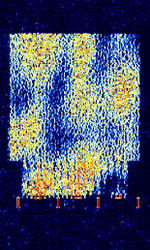 |
|
| STANAG 4285 | STANAGNATO Standardization Agreement (STANAG), defines processes, procedures, terms, and conditions for common military or technical procedures or equipment between the member countries of the North Atlantic Treaty Organization (NATO). 4285 is specified by the NATONorth Atlantic Treaty Organization (North Atlantic Treaty Organization) Military Agency for Standardization in "Characteristics of 1200 / 2400 / 3600 Bits per Second Single Tone Modulators / Demodulators for HFHigh Frequency (3-30 MHz) Radio Links" | 1.89 MHzMegaHertz (MHz) 10^6 Hz — 22.7 MHzMegaHertz (MHz) 10^6 Hz | USBUpper Side Band Modulation (Radio, referring to reception and modulation mode)Universal Serial Bus (Computer, referring to USB Ports and cables) | PSKPhase-Shift Keying | 2.75 kHzKiloHertz (kHz) 10^3 Hz | Worldwide | 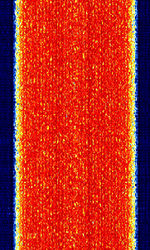 |
|
| STANAG 4415 | STANAGNATO Standardization Agreement (STANAG), defines processes, procedures, terms, and conditions for common military or technical procedures or equipment between the member countries of the North Atlantic Treaty Organization (NATO). 4415 is a NATONorth Atlantic Treaty Organization standard for robust, non-hopping digital data communication, used on severely degraded HFHigh Frequency (3-30 MHz) channels with large Doppler and multipath spreads. | 3 MHzMegaHertz (MHz) 10^6 Hz — 30 MHzMegaHertz (MHz) 10^6 Hz | USBUpper Side Band Modulation (Radio, referring to reception and modulation mode)Universal Serial Bus (Computer, referring to USB Ports and cables) | PSKPhase-Shift Keying | 2.75 kHzKiloHertz (kHz) 10^3 Hz | Worldwide | 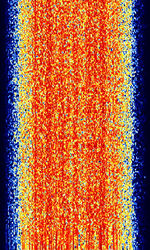 |
|
| STANAG 4481 | STANAGNATO Standardization Agreement (STANAG), defines processes, procedures, terms, and conditions for common military or technical procedures or equipment between the member countries of the North Atlantic Treaty Organization (NATO). 4481, also known as CRATT, Link-4, and NATONorth Atlantic Treaty Organization-75, is specified by the NATONorth Atlantic Treaty Organization (North Atlantic Treaty Organization) Military Agency for Standardization as a "Minimum technical equipment standards for naval HFHigh Frequency (3-30 MHz) shore-to-ship broadcast system" | 2.815 MHzMegaHertz (MHz) 10^6 Hz — 18.016 MHzMegaHertz (MHz) 10^6 Hz | USBUpper Side Band Modulation (Radio, referring to reception and modulation mode)Universal Serial Bus (Computer, referring to USB Ports and cables) | FSKFrequency-Shift Keying, PSKPhase-Shift Keying | 1.5 kHzKiloHertz (kHz) 10^3 Hz — 2.75 kHzKiloHertz (kHz) 10^3 Hz | Worldwide | 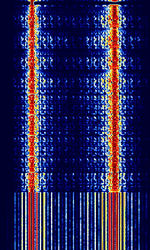 |
|
| STANAG 4529 | STANAGNATO Standardization Agreement (STANAG), defines processes, procedures, terms, and conditions for common military or technical procedures or equipment between the member countries of the North Atlantic Treaty Organization (NATO). 4529 a modification of STANAGNATO Standardization Agreement (STANAG), defines processes, procedures, terms, and conditions for common military or technical procedures or equipment between the member countries of the North Atlantic Treaty Organization (NATO). 4285 to deliver data and voice in 1240 HzHertz (Hz), unit of frequency, defined as one cycle per second (1 Hz). of bandwidth at rates of up to 1800 bpsBits per second (bps). | 3 MHzMegaHertz (MHz) 10^6 Hz — 30 MHzMegaHertz (MHz) 10^6 Hz | USBUpper Side Band Modulation (Radio, referring to reception and modulation mode)Universal Serial Bus (Computer, referring to USB Ports and cables) | PSKPhase-Shift Keying, BPSKBinary Phase-Shift Keying (1 bit per symbol), QPSKQuadrature Phase-Shift Keying (2 bits per symbol), 8PSK8-Phase Phase-Shift Keying (3 bits per symbol) | 1.24 kHzKiloHertz (kHz) 10^3 Hz | Worldwide | 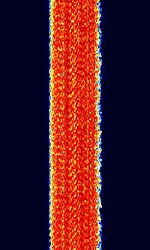 |
|
| STANAG 4539 | STANAGNATO Standardization Agreement (STANAG), defines processes, procedures, terms, and conditions for common military or technical procedures or equipment between the member countries of the North Atlantic Treaty Organization (NATO). 4539 or MIL-STD-188-110B/C Appendix C is a HDR (110B) / MDR (110C) serial PSKPhase-Shift Keying/QAMQuadrature Amplitude Modulation signal that can reach speeds up to 9600 bpsBits per second (bps) (12800 bpsBits per second (bps) with no interleaving). | 3 MHzMegaHertz (MHz) 10^6 Hz — 30 MHzMegaHertz (MHz) 10^6 Hz | USBUpper Side Band Modulation (Radio, referring to reception and modulation mode)Universal Serial Bus (Computer, referring to USB Ports and cables) | PSKPhase-Shift Keying, QAMQuadrature Amplitude Modulation, QPSKQuadrature Phase-Shift Keying (2 bits per symbol) | 3 kHzKiloHertz (kHz) 10^3 Hz | Worldwide | 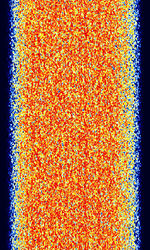 |
|
| STANAG 5065 | STANAGNATO Standardization Agreement (STANAG), defines processes, procedures, terms, and conditions for common military or technical procedures or equipment between the member countries of the North Atlantic Treaty Organization (NATO). 5065 is defined as "Minimum Standards for Naval Low Frequency (LFLow Frequency (30-300 kHz)) Shore-To-Ship Surface Broadcast Systems", with two primary protocols, FSK75 and MSK300. | 50 kHzKiloHertz (kHz) 10^3 Hz — 160 kHzKiloHertz (kHz) 10^3 Hz | USBUpper Side Band Modulation (Radio, referring to reception and modulation mode)Universal Serial Bus (Computer, referring to USB Ports and cables) | FSKFrequency-Shift Keying, MSKMinimum-Shift Keying (When Shift/Bd = 0.5. It is impossible to get this ratio to be lower than 0.5, hence it is called the 'Minimum' shift.) | 235 HzHertz (Hz), unit of frequency, defined as one cycle per second (1 Hz). — 360 HzHertz (Hz), unit of frequency, defined as one cycle per second (1 Hz). | Worldwide | 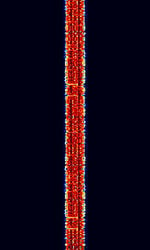 |
|
| SWED-ARQ | SWED-ARQAutomatic Repeat reQuestAutomatic Repeat Query, also known as ARQAutomatic Repeat reQuestAutomatic Repeat Query-SWE, was a Swedish simplex ARQAutomatic Repeat reQuestAutomatic Repeat Query system used by Swedish diplomatic services. This protocol supported three packet lengths and was able to change packet length mid-transmission. No longer used today. | 3 MHzMegaHertz (MHz) 10^6 Hz — 30 MHzMegaHertz (MHz) 10^6 Hz | USBUpper Side Band Modulation (Radio, referring to reception and modulation mode)Universal Serial Bus (Computer, referring to USB Ports and cables) | FSKFrequency-Shift Keying | 600 HzHertz (Hz), unit of frequency, defined as one cycle per second (1 Hz). | Sweden | 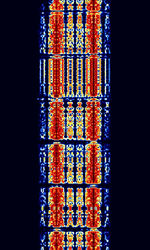 |
|
| Saab Grintek MHF-50 MFSK Modem | The MHF-50 MFSKMultiple Frequency Shift-Keying Modem by Saab Grintek Technologies in South Africa is a data modem that utilizes RTTYRadio TeleTYpe, 2-FSKFrequency-Shift Keying, and 33-MFSKMultiple Frequency Shift-Keying to transmit data | 4.245 MHzMegaHertz (MHz) 10^6 Hz — 12.982 MHzMegaHertz (MHz) 10^6 Hz | USBUpper Side Band Modulation (Radio, referring to reception and modulation mode)Universal Serial Bus (Computer, referring to USB Ports and cables) | MFSKMultiple Frequency Shift-Keying, FSKFrequency-Shift Keying | 2.2 kHzKiloHertz (kHz) 10^3 Hz | South Africa | 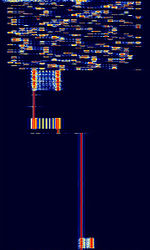 |
|
| Schneider Trio E-Series Modem | Schneider Trio E-Series Modems are industrial modems used for SCADA, telemetry, and other ASCII-based messaging applications. | 370 MHzMegaHertz (MHz) 10^6 Hz — 518 MHzMegaHertz (MHz) 10^6 Hz | USBUpper Side Band Modulation (Radio, referring to reception and modulation mode)Universal Serial Bus (Computer, referring to USB Ports and cables) | FSKFrequency-Shift Keying, GMSKGaussian Minimum-Shift Keying | 12.5 kHzKiloHertz (kHz) 10^3 Hz — 25 kHzKiloHertz (kHz) 10^3 Hz | Worldwide | 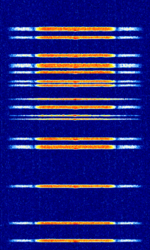 |
|
| Sensus Water meter (Acquisition units) | These are samples from the Sensus Water meters. They are a FHSS ASKAmplitude-Shift Keying encoded data transmission for purposes of providing municipalities water meter telemetry (for billing how much water you use). | 902 MHzMegaHertz (MHz) 10^6 Hz — 927 MHzMegaHertz (MHz) 10^6 Hz | ASKAmplitude-Shift Keying, FHSS | 175 MHzMegaHertz (MHz) 10^6 Hz | Worldwide | — | 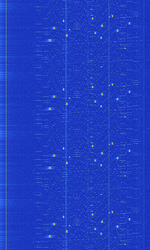 |
|
| Serdolik | Serdolik is a MFSKMultiple Frequency Shift-Keying signal used by the Russian diplomatic service. | 3 MHzMegaHertz (MHz) 10^6 Hz — 30 MHzMegaHertz (MHz) 10^6 Hz | USBUpper Side Band Modulation (Radio, referring to reception and modulation mode)Universal Serial Bus (Computer, referring to USB Ports and cables) | MFSKMultiple Frequency Shift-Keying | 1.4 kHzKiloHertz (kHz) 10^3 Hz | Russia | 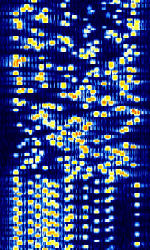 |
|
| Siemens CHX-200 FSK Modem | CHX200, also known as Siemens CHP200 and PRC-921/GY, is a backpack HFHigh Frequency (3-30 MHz) ECCOM transceiver, designed and built by Siemens. | 1.5 MHzMegaHertz (MHz) 10^6 Hz — 30 MHzMegaHertz (MHz) 10^6 Hz | USBUpper Side Band Modulation (Radio, referring to reception and modulation mode)Universal Serial Bus (Computer, referring to USB Ports and cables) | FSKFrequency-Shift Keying | 300 HzHertz (Hz), unit of frequency, defined as one cycle per second (1 Hz). | Worldwide | 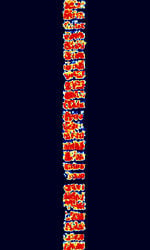 |
|
| Single frequency russian overhead power line telemetry system | Russian telemetry system, transmitted over the overhead power lines. | 50 kHzKiloHertz (kHz) 10^3 Hz — 1 MHzMegaHertz (MHz) 10^6 Hz | SSBSingle-sideband modulation | AMAmplitude Modulation | 300 HzHertz (Hz), unit of frequency, defined as one cycle per second (1 Hz). | Russia | 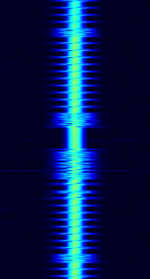 |
|
| SiriusXM Satellite Radio | SiriusXM Satellite Radio: Terrestrial Repeater Signal | 2,332.5 MHzMegaHertz (MHz) 10^6 Hz — 2,345 MHzMegaHertz (MHz) 10^6 Hz | RAW | OFDMOrthogonal Frequency-Division Multiplexing, PSKPhase-Shift Keying | 12.5 MHzMegaHertz (MHz) 10^6 Hz | United States | 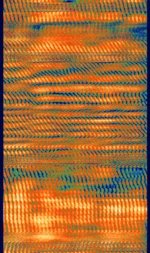 |
|
| SkyOFDM | Data transmission mode developed by SkySweep Technologies in Finland. Probably used by Finnish MFA | 3 MHzMegaHertz (MHz) 10^6 Hz — 30 MHzMegaHertz (MHz) 10^6 Hz | USBUpper Side Band Modulation (Radio, referring to reception and modulation mode)Universal Serial Bus (Computer, referring to USB Ports and cables) | PSKPhase-Shift Keying, OFDMOrthogonal Frequency-Division Multiplexing | 2 kHzKiloHertz (kHz) 10^3 Hz — 2.4 kHzKiloHertz (kHz) 10^3 Hz | Finland | 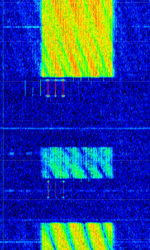 |
|
| Snap Circuits SCROV-10 Remote Control | A remote control transmission from the controller from an Elenco Snap Circuits SCROV-10 kit. | 27.145 MHzMegaHertz (MHz) 10^6 Hz | RAW | ASKAmplitude-Shift Keying | 6 kHzKiloHertz (kHz) 10^3 Hz | 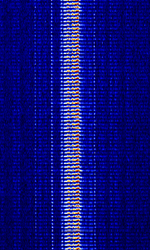 |
||
| Supervisory Control And Data Acquisition (SCADA) | Supervisory Control And Data Acquisition (SCADA) is a control system architecture that is used in industrial applications for computerized automated systems. Wireless telemetry is used on RTU's to send data to control units for operators to utilize. | 413 MHzMegaHertz (MHz) 10^6 Hz — 950 MHzMegaHertz (MHz) 10^6 Hz | FMFrequency Modulation | FSKFrequency-Shift Keying | 12 kHzKiloHertz (kHz) 10^3 Hz | 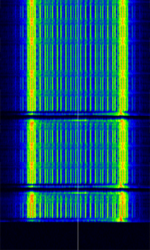 |
||
| THOR | THOR is an adaptation of DominoEX with MFSK16 binary varicode and FECForward Error Correction. | 3 MHzMegaHertz (MHz) 10^6 Hz — 30 MHzMegaHertz (MHz) 10^6 Hz | USBUpper Side Band Modulation (Radio, referring to reception and modulation mode)Universal Serial Bus (Computer, referring to USB Ports and cables) | IFKIncremental Frequency Keying | 173 HzHertz (Hz), unit of frequency, defined as one cycle per second (1 Hz). — 524 HzHertz (Hz), unit of frequency, defined as one cycle per second (1 Hz). | Worldwide | 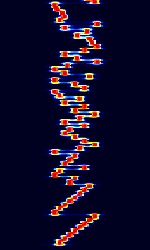 |
|
| THROB | THROB is a unique data mode that relies heavily on DSP techniques, using MFSKMultiple Frequency Shift-Keying and AMAmplitude Modulation modulation techniques together. | 3 MHzMegaHertz (MHz) 10^6 Hz — 30 MHzMegaHertz (MHz) 10^6 Hz | USBUpper Side Band Modulation (Radio, referring to reception and modulation mode)Universal Serial Bus (Computer, referring to USB Ports and cables) | MFSKMultiple Frequency Shift-Keying | 72 HzHertz (Hz), unit of frequency, defined as one cycle per second (1 Hz). — 188 HzHertz (Hz), unit of frequency, defined as one cycle per second (1 Hz). | Worldwide | 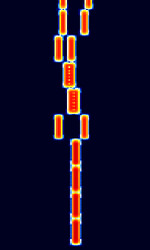 |
|
| TT2300 | TT2300, also known as TT2300B, TT2300-ARQAutomatic Repeat reQuestAutomatic Repeat Query, TRA-2300, and TPLEX, is an 8MFSK synchronous system developed by Thrane & Thrane of Denmark (acquired by UK defense firm Cobham in 2012). | 5.029 MHzMegaHertz (MHz) 10^6 Hz — 7.72 MHzMegaHertz (MHz) 10^6 Hz | USBUpper Side Band Modulation (Radio, referring to reception and modulation mode)Universal Serial Bus (Computer, referring to USB Ports and cables) | MFSKMultiple Frequency Shift-Keying | 1.6 kHzKiloHertz (kHz) 10^3 Hz — 1.7 kHzKiloHertz (kHz) 10^3 Hz | Worldwide | 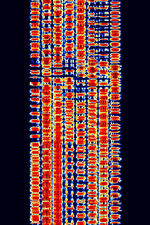 |
|
| TWINPLEX | TWINPLEX, also known as F7B4 and TWINPLEX-SITOR, was a diplex 4-FSKFrequency-Shift Keying ARQAutomatic Repeat reQuestAutomatic Repeat Query mode developed by Mackay Radio and Telegraph Company, based in New York City, in the early 1950's. TWINPLEX was used by Interpol, the United Nations, and other diplomatic services. | 3 MHzMegaHertz (MHz) 10^6 Hz — 30 MHzMegaHertz (MHz) 10^6 Hz | USBUpper Side Band Modulation (Radio, referring to reception and modulation mode)Universal Serial Bus (Computer, referring to USB Ports and cables) | MFSKMultiple Frequency Shift-Keying | 450 HzHertz (Hz), unit of frequency, defined as one cycle per second (1 Hz). — 950 HzHertz (Hz), unit of frequency, defined as one cycle per second (1 Hz). | Worldwide | 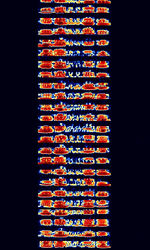 |
|
| Terrestrial Trunked Radio (TETRA) | TETRA is a professional mobile radio and two-way transceiver (walkie-talkie) specification | 380 MHzMegaHertz (MHz) 10^6 Hz — 860 MHzMegaHertz (MHz) 10^6 Hz | NFMNarrowband Frequency Modulation | PSKPhase-Shift Keying | 25 kHzKiloHertz (kHz) 10^3 Hz | Worldwide | 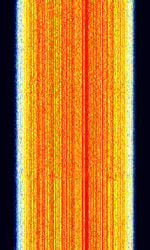 |
|
| Tetrapol | Tetrapol is a digital professional mobile radio standard for digital voice and data communication used by public safety and military throughout Europe. Tetrapol was originally developed by Matra Communication (Currently part of EADS/Airbus Group) in France in the 1980's. | 370 MHzMegaHertz (MHz) 10^6 Hz — 400 MHzMegaHertz (MHz) 10^6 Hz | NFMNarrowband Frequency Modulation | GMSKGaussian Minimum-Shift Keying | 10 kHzKiloHertz (kHz) 10^3 Hz — 12.5 kHzKiloHertz (kHz) 10^3 Hz | Europe | 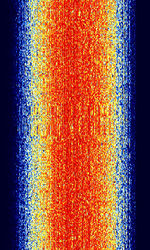 |
|
| Thales SALAMANDRE (HFXL) | Thales SALAMANDRE (using HFXL waveform) uses up to 16 separate contiguous or not-contiguous narrowband HFHigh Frequency (3-30 MHz) channels for high datarate military and tactical communications. Operates on a modified STANAGNATO Standardization Agreement (STANAG), defines processes, procedures, terms, and conditions for common military or technical procedures or equipment between the member countries of the North Atlantic Treaty Organization (NATO).-4539 platform. | 3 MHzMegaHertz (MHz) 10^6 Hz — 30 MHzMegaHertz (MHz) 10^6 Hz | USBUpper Side Band Modulation (Radio, referring to reception and modulation mode)Universal Serial Bus (Computer, referring to USB Ports and cables) | PSKPhase-Shift Keying | 150 kHzKiloHertz (kHz) 10^3 Hz | Worldwide | 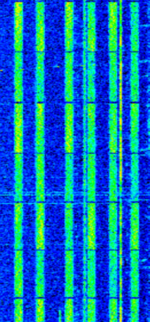 |
|
| Thales Système 3000 Skyhopper | Thales Système 3000 Skyhopper is the frequency hopping mode of the Système 3000 Modem. Characterized by it's very short bursts and frequency hopping behavior. | 1.5 MHzMegaHertz (MHz) 10^6 Hz — 30 MHzMegaHertz (MHz) 10^6 Hz | USBUpper Side Band Modulation (Radio, referring to reception and modulation mode)Universal Serial Bus (Computer, referring to USB Ports and cables) | PSKPhase-Shift Keying, MFSKMultiple Frequency Shift-Keying | 2 kHzKiloHertz (kHz) 10^3 Hz — 2.6 kHzKiloHertz (kHz) 10^3 Hz | Worldwide | 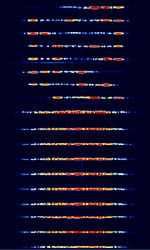 |
|
| Thales Système 3000 Voice Scrambler | Voice Scrambling mode from Thales Système 3000 HFHigh Frequency (3-30 MHz) Modem. Has characteristic PSKPhase-Shift Keying and MFSKMultiple Frequency Shift-Keying bursts at the beginning and end of a voice transmission. | 1.5 MHzMegaHertz (MHz) 10^6 Hz — 30 MHzMegaHertz (MHz) 10^6 Hz | USBUpper Side Band Modulation (Radio, referring to reception and modulation mode)Universal Serial Bus (Computer, referring to USB Ports and cables) | PSKPhase-Shift Keying, MFSKMultiple Frequency Shift-Keying | 3 kHzKiloHertz (kHz) 10^3 Hz | Worldwide | 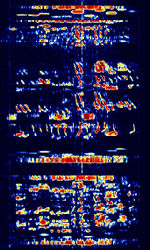 |
|
| Total Access Communication System (TACS) | A first generation analogue mobile cellular system which operated in the United Kingdom and a handful of other countries in Europe. It is also the EU's form of AMPS. | 872 MHzMegaHertz (MHz) 10^6 Hz — 960 MHzMegaHertz (MHz) 10^6 Hz | NFMNarrowband Frequency Modulation | FMFrequency Modulation, FSKFrequency-Shift Keying | 25 kHzKiloHertz (kHz) 10^3 Hz | Europe | 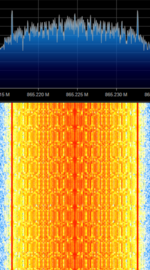 |
|
| Toyota Car Key | Wireless entry rolling code car key. | 315 MHzMegaHertz (MHz) 10^6 Hz — 433 MHzMegaHertz (MHz) 10^6 Hz | AMAmplitude Modulation | 40 kHzKiloHertz (kHz) 10^3 Hz | Worldwide | 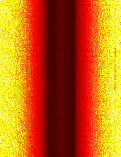 |
||
| Traffic Light Control R09 | AFSKAudio Frequency-Shift Keying Modulated signal with 2400Baud for traffic light control. Contains R09.16 telegrams as specified per VDV Standard 420. | 68 MHzMegaHertz (MHz) 10^6 Hz — 470 MHzMegaHertz (MHz) 10^6 Hz | AFSKAudio Frequency-Shift Keying | 10 kHzKiloHertz (kHz) 10^3 Hz | Germany | — | 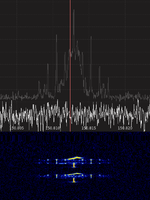 |
|
| Transit 5B-5 | Transit 5B-5, a former TRANSIT navigation satellite, is the oldest satellite known to still transmit a signal. Considered "dead" because its navigational systems failed after 19 days of operation, it still emits a telemetry signal when illuminated. | 136.658 MHzMegaHertz (MHz) 10^6 Hz | WFMWideband Frequency Modulation | PCM, PAMPulse Amplitude Modulation, FMFrequency Modulation, PM | 32 kHzKiloHertz (kHz) 10^3 Hz | Worldwide | 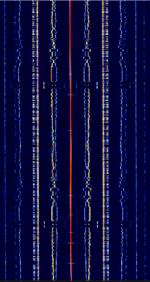 |
|
| UHF Vehicle Location System | UHFUltra High Frequency (300-3000 MHz) Vehicle Location System | 400 MHzMegaHertz (MHz) 10^6 Hz — 900 MHzMegaHertz (MHz) 10^6 Hz | NFMNarrowband Frequency Modulation | FSKFrequency-Shift Keying | 12.5 kHzKiloHertz (kHz) 10^3 Hz | United States | 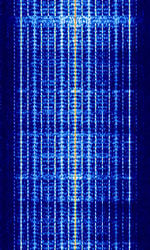 |
|
| UK AM Data System (UK-AMDS) | UK AMAmplitude Modulation Data System (UK-AMDS) was developed by BBC Research and Development in 1984 as a way to transmit low bitrate data on BBC Radio 4's LFLow Frequency (30-300 kHz) AMAmplitude Modulation carrier. Elements of this system were adopted into ETSIEuropean Telecommunications Standards Institute. An independent, not-for-profit, standardization organization in the telecommunications industry in Europe, developing global telecommunications standards.'s AMSS. | 198 kHzKiloHertz (kHz) 10^3 Hz | SSBSingle-sideband modulation | AMAmplitude Modulation, PSKPhase-Shift Keying | 85 HzHertz (Hz), unit of frequency, defined as one cycle per second (1 Hz). | United Kingdom | 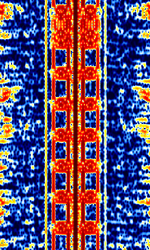 |
|
| UK GOV MIL WINDRM51 | UK GOV/MIL "WinDRM51" variant. Unknown purpose, But link between UK & Cyprus has been found some years ago. | 9.104 MHzMegaHertz (MHz) 10^6 Hz — 13.451 MHzMegaHertz (MHz) 10^6 Hz | USBUpper Side Band Modulation (Radio, referring to reception and modulation mode)Universal Serial Bus (Computer, referring to USB Ports and cables) | OFDMOrthogonal Frequency-Division Multiplexing | 2.5 kHzKiloHertz (kHz) 10^3 Hz | Europe | 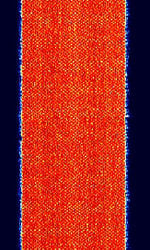 |
|
| Ultra Low Latency (ULL) Electronic Trading Network | A 48k or 24k baudBaud (unit symbol Bd) is the unit for symbol rate or modulation rate in symbols per second. OQPSK signal that is strongly suspected (through numerous circumstantial pieces of evidence) to be either an experimental or active P2P RFRadio Frequency link between financial market data centers, used for High Frequency Trading (HFT) and other latency-sensitive market activities. | 6 MHzMegaHertz (MHz) 10^6 Hz — 20 MHzMegaHertz (MHz) 10^6 Hz | RAW | OQPSK | 30 kHzKiloHertz (kHz) 10^3 Hz — 60 kHzKiloHertz (kHz) 10^3 Hz | United States | 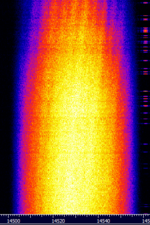 |
|
| VARA HF | VARA HFHigh Frequency (3-30 MHz) is a sound-card mode used to exchange traffic (Mostly Winlink traffic) on the HFHigh Frequency (3-30 MHz) bands | 1.8 MHzMegaHertz (MHz) 10^6 Hz — 54 MHzMegaHertz (MHz) 10^6 Hz | USBUpper Side Band Modulation (Radio, referring to reception and modulation mode)Universal Serial Bus (Computer, referring to USB Ports and cables) | BPSKBinary Phase-Shift Keying (1 bit per symbol), 4-8PSK8-Phase Phase-Shift Keying (3 bits per symbol), 16-32QAM, FSKFrequency-Shift Keying | 2.75 kHzKiloHertz (kHz) 10^3 Hz | Worldwide | 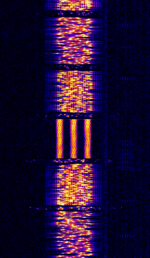 |
|
| VEZHA-S | Two-way 100 BdBaud (unit symbol Bd) is the unit for symbol rate or modulation rate in symbols per second./500 HzHertz (Hz), unit of frequency, defined as one cycle per second (1 Hz). Russian Telegraph system, attributed name VEZHA-C (Tower-S), usage claimed to be by Russian Ministry of Communications (MinComSvyaz Rossii). Possible usage in meteorology under callsign RWD59. | 2.755 MHzMegaHertz (MHz) 10^6 Hz — 12.165 MHzMegaHertz (MHz) 10^6 Hz | USBUpper Side Band Modulation (Radio, referring to reception and modulation mode)Universal Serial Bus (Computer, referring to USB Ports and cables) | FSKFrequency-Shift Keying | 650 HzHertz (Hz), unit of frequency, defined as one cycle per second (1 Hz). | Russia | 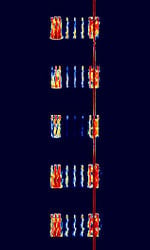 |
|
| VHF Data Link - Mode 2 (VDL-M2) | VDL-M2 (Known as VDL2 or VDLM2) is a means of sending information between aircraft and ground stations. VDL Mode 2 is the only VDL mode being implemented operationally to support Controller Pilot Data Link Communications (CPDLC). An extension to the AVLC protocol permits ACARS over AVLC (AOA) transmissions. VDL-M2 is implemented by Eurocontrol. | 117.975 MHzMegaHertz (MHz) 10^6 Hz — 137 MHzMegaHertz (MHz) 10^6 Hz | RAW | PSKPhase-Shift Keying | 25 kHzKiloHertz (kHz) 10^3 Hz | Worldwide | 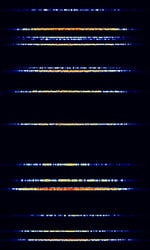 |
|
| VISEL | VISEL, also known as YUG-MIL 120.9 BdBaud (unit symbol Bd) is the unit for symbol rate or modulation rate in symbols per second., FECForward Error Correction-12, and YUG-MIL FECForward Error Correction, is a synchronous teleprinter system used by the former Yugoslav military. No longer active today. | 3 MHzMegaHertz (MHz) 10^6 Hz — 30 MHzMegaHertz (MHz) 10^6 Hz | USBUpper Side Band Modulation (Radio, referring to reception and modulation mode)Universal Serial Bus (Computer, referring to USB Ports and cables) | FSKFrequency-Shift Keying | 400 HzHertz (Hz), unit of frequency, defined as one cycle per second (1 Hz). | Europe | 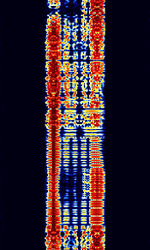 |
|
| VOICE | VOICE is a MFSKMultiple Frequency Shift-Keying mode developed by Patrick Lindecker F6CTE in 2006, and was derived from Olivia. It was designed for blind or partially sighted amateur radio operators. | 3 MHzMegaHertz (MHz) 10^6 Hz — 30 MHzMegaHertz (MHz) 10^6 Hz | USBUpper Side Band Modulation (Radio, referring to reception and modulation mode)Universal Serial Bus (Computer, referring to USB Ports and cables) | MFSKMultiple Frequency Shift-Keying | 200 HzHertz (Hz), unit of frequency, defined as one cycle per second (1 Hz). | Worldwide | 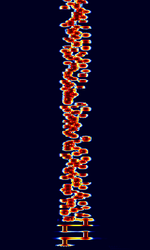 |
|
| Vaisala RS41-SG Weather Balloon (Radiosonde) | Weather balloon (radiosonde) telemetry data. | 400 MHzMegaHertz (MHz) 10^6 Hz — 406 MHzMegaHertz (MHz) 10^6 Hz | NFMNarrowband Frequency Modulation | GFSKGaussian Frequency-Shift Keying | 4.8 kHzKiloHertz (kHz) 10^3 Hz | Worldwide | 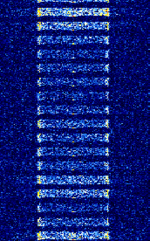 |
|
| Vaisala RS92-SGP Weather Balloon (Radiosonde) | Weather balloon (radiosonde) telemetry data. | 400.15 MHzMegaHertz (MHz) 10^6 Hz — 405.99 MHzMegaHertz (MHz) 10^6 Hz | NFMNarrowband Frequency Modulation | GFSKGaussian Frequency-Shift Keying | 10 kHzKiloHertz (kHz) 10^3 Hz | Worldwide | 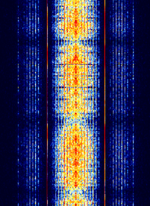 |
|
| Vehicle Counting System | Data transmitted from a vehicle counting system installed in car parks. The data is frequency hopping over 10 MHzMegaHertz (MHz) 10^6 Hz. | 915 MHzMegaHertz (MHz) 10^6 Hz — 925 MHzMegaHertz (MHz) 10^6 Hz | RAW | FSKFrequency-Shift Keying | 10 MHzMegaHertz (MHz) 10^6 Hz | Australia | — |  |
| Visonic MCT-201 | MCT-201 is a Miniature Pendant PowerCode Wireless Transmitter by Visonic. It is designed for emergency and control applications in wireless security systems, and home automation and remote control systems. | 315 MHzMegaHertz (MHz) 10^6 Hz — 868 MHzMegaHertz (MHz) 10^6 Hz | USBUpper Side Band Modulation (Radio, referring to reception and modulation mode)Universal Serial Bus (Computer, referring to USB Ports and cables) | PWMPulse Width Modulation | 5 kHzKiloHertz (kHz) 10^3 Hz | Worldwide | 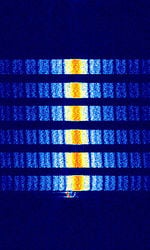 |
|
| WSPR | Weak Signal Propagation Reporter. | 136 kHzKiloHertz (kHz) 10^3 Hz — 1,296.5 MHzMegaHertz (MHz) 10^6 Hz | USBUpper Side Band Modulation (Radio, referring to reception and modulation mode)Universal Serial Bus (Computer, referring to USB Ports and cables) | MFSKMultiple Frequency Shift-Keying | 6 HzHertz (Hz), unit of frequency, defined as one cycle per second (1 Hz). | Worldwide | 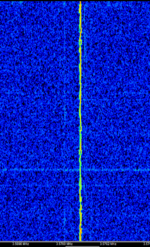 |
|
| WiMAX | WiMAX is a family of of wireless broadband communication standards based on the IEEE 802.16 set of standards, which provide physical layer (PHY) and media access control (MAC) options. | OFDMOrthogonal Frequency-Division Multiplexing, OFDMA | 1.25 MHzMegaHertz (MHz) 10^6 Hz — 20 MHzMegaHertz (MHz) 10^6 Hz | Worldwide |  |
|||
| WinDRM | WinDRM is an amateur radio derivation of the Digital Radio Mondiale (DRM) digital voice and data transmission protocol. Also known as HamDRM, and Digital SSTV. | 14.236 MHzMegaHertz (MHz) 10^6 Hz | USBUpper Side Band Modulation (Radio, referring to reception and modulation mode)Universal Serial Bus (Computer, referring to USB Ports and cables) | QAMQuadrature Amplitude Modulation, OFDMOrthogonal Frequency-Division Multiplexing | 2.2 kHzKiloHertz (kHz) 10^3 Hz — 2.4 kHzKiloHertz (kHz) 10^3 Hz | Worldwide | 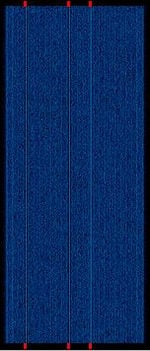 |
|
| WinLink Global Email Radio System (WGERS) | Winlink, a email service over radio that uses internet connected gateways in order to provide position reporting, weather and information bulletins. It is used for disaster-relief. | 7 MHzMegaHertz (MHz) 10^6 Hz — 400 MHzMegaHertz (MHz) 10^6 Hz | USBUpper Side Band Modulation (Radio, referring to reception and modulation mode)Universal Serial Bus (Computer, referring to USB Ports and cables), NFMNarrowband Frequency Modulation | 2MFSK, OFDMOrthogonal Frequency-Division Multiplexing, PSKPhase-Shift Keying, MFSKMultiple Frequency Shift-Keying | 4 kHzKiloHertz (kHz) 10^3 Hz | Worldwide | 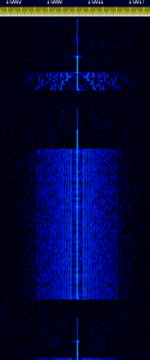 |
|
| Wireless Temperature Sensor | The freezer temperature is requested by a master at regular intervals, and the slave attached to a freezer responds. The communication format appears to be a variant of chirp spread spectrum, (although the spectrum it consumes is quite narrow at ~150 kHzKiloHertz (kHz) 10^3 Hz). | 434 MHzMegaHertz (MHz) 10^6 Hz | FMFrequency Modulation | CSS | 150 kHzKiloHertz (kHz) 10^3 Hz | Australia | 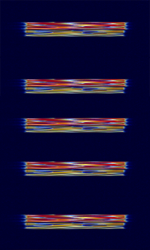 |
|
| XMPP trials | XMPP (Extensible Messaging and Presence Protocol) on shortwave is used by the military and are known for using MIL 188-110A Serial HFHigh Frequency (3-30 MHz) waveform and 6-bit code clear text with dual bursts of STANAGNATO Standardization Agreement (STANAG), defines processes, procedures, terms, and conditions for common military or technical procedures or equipment between the member countries of the North Atlantic Treaty Organization (NATO).-5439 and STANAGNATO Standardization Agreement (STANAG), defines processes, procedures, terms, and conditions for common military or technical procedures or equipment between the member countries of the North Atlantic Treaty Organization (NATO).-5066 as for XMPP Multi-User Chat (MUC) messages | 2 MHzMegaHertz (MHz) 10^6 Hz — 7.8 MHzMegaHertz (MHz) 10^6 Hz | USBUpper Side Band Modulation (Radio, referring to reception and modulation mode)Universal Serial Bus (Computer, referring to USB Ports and cables) | PSKPhase-Shift Keying, QAMQuadrature Amplitude Modulation | 34 kHzKiloHertz (kHz) 10^3 Hz | Worldwide | 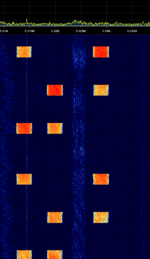 |
|
| Yachta T-219 Voice Scrambler | Yachta or Yakhta (Russian for 'Boat') T-219 is an analogue voice scrambler. It is unique in that an FSKFrequency-Shift Keying sync signal is transmitted in the middle of the main signal, with the scrambled voice stream split above and below the FSKFrequency-Shift Keying signal. | 3 MHzMegaHertz (MHz) 10^6 Hz — 30 MHzMegaHertz (MHz) 10^6 Hz | USBUpper Side Band Modulation (Radio, referring to reception and modulation mode)Universal Serial Bus (Computer, referring to USB Ports and cables) | FSKFrequency-Shift Keying | 2.7 kHzKiloHertz (kHz) 10^3 Hz | Russia | 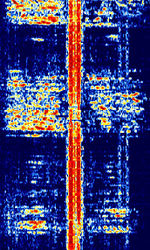 |
|
| Yaesu System Fusion | System Fusion is Yaesu's digital voice/data protocol for amateur radio, using the AMBE+2 vocoder on a C4FMContinuous 4-Level Frequency Modulation signal. | 144 MHzMegaHertz (MHz) 10^6 Hz — 450 MHzMegaHertz (MHz) 10^6 Hz | FMFrequency Modulation | C4FMContinuous 4-Level Frequency Modulation | 12.5 kHzKiloHertz (kHz) 10^3 Hz | Worldwide | 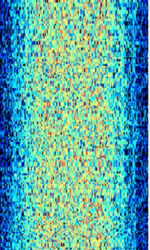 |
|
| Yugoslavian 16-Tone Modem | The Yugoslavian 16-Tone Modem, also known as YUG-Diplo 16-Tone, is a 16 tone OFDMOrthogonal Frequency-Division Multiplexing PSKPhase-Shift Keying modem used in former Yugoslavia for diplomatic use. No longer used today. | 3 MHzMegaHertz (MHz) 10^6 Hz — 30 MHzMegaHertz (MHz) 10^6 Hz | USBUpper Side Band Modulation (Radio, referring to reception and modulation mode)Universal Serial Bus (Computer, referring to USB Ports and cables) | PSKPhase-Shift Keying, OFDMOrthogonal Frequency-Division Multiplexing | 2.1 kHzKiloHertz (kHz) 10^3 Hz | Europe | 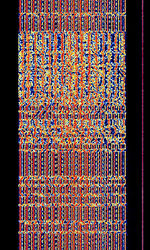 |
|
| Yugoslavian 20-Tone Modem | The Yugoslavian 20-Tone Modem, also known as YUG-MIL 20-Tone and YUG Diplo 20-Tone, is a 20 tone OFDMOrthogonal Frequency-Division Multiplexing PSKPhase-Shift Keying modem used in former Yugoslavia for military and diplomatic use. No longer used today. | 3 MHzMegaHertz (MHz) 10^6 Hz — 30 MHzMegaHertz (MHz) 10^6 Hz | USBUpper Side Band Modulation (Radio, referring to reception and modulation mode)Universal Serial Bus (Computer, referring to USB Ports and cables) | PSKPhase-Shift Keying, OFDMOrthogonal Frequency-Division Multiplexing | 2.2 kHzKiloHertz (kHz) 10^3 Hz | Europe | 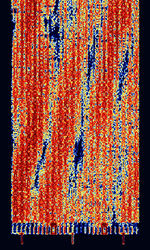 |
Pages in category "Digital"
The following 200 pages are in this category, out of 423 total.
(previous 200) (next 200)(previous 200) (next 200)